#Stanley being wild in 1966
Explore tagged Tumblr posts
Text


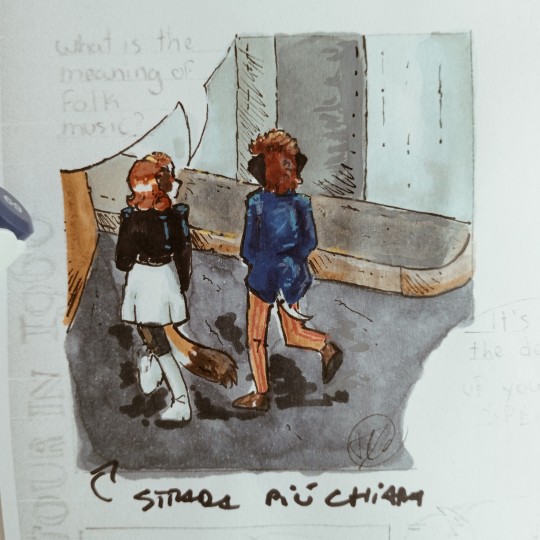

✨🧡I'M WORKING ON A COMIC PAGE!✨🧡
#furry#furry art#bob dylan fan art#bob dylan art#bob dylan#damn i love him#Stanley being wild in 1966#marbled polecat art#marbled polecat#dalmatian#vormela peregusna
8 notes
·
View notes
Text

Ida Lupino (4 February 1918 – 3 August 1995) was an English-American actress, singer, director, and producer. She is widely regarded as the most prominent female filmmaker working in the 1950s during the Hollywood studio system. With her independent production company, she co-wrote and co-produced several social-message films and became the first woman to direct a film noir with The Hitch-Hiker in 1953. Among her other directed films the best known are Not Wanted about unwed pregnancy (she took over for a sick director and refused directorial credit), Never Fear (1949) loosely based upon her own experiences battling paralyzing polio, Outrage (1950) one of the first films about rape, The Bigamist (1953) (which was named in the book 1001 Movies You Must See Before You Die) and The Trouble with Angels (1966).
Throughout her 48-year career, she made acting appearances in 59 films and directed eight others, working primarily in the United States, where she became a citizen in 1948. As an actress her best known films are The Adventures of Sherlock Holmes (1939) with Basil Rathbone, They Drive by Night (1940) with George Raft and Humphrey Bogart, High Sierra (1941) with Bogart, The Sea Wolf (1941) with Edward G. Robinson and John Garfield, Ladies in Retirement (1941) with Louis Hayward, Moontide (1942) with Jean Gabin, The Hard Way (1943), Deep Valley (1947) with Dane Clark, Road House (1948) with Cornel Wilde and Richard Widmark, While the City Sleeps (1956) with Dana Andrews and Vincent Price. and Junior Bonner (1972) with Steve McQueen.
She also directed more than 100 episodes of television productions in a variety of genres including westerns, supernatural tales, situation comedies, murder mysteries, and gangster stories. She was the only woman to direct an episode of the original The Twilight Zone series ("The Masks"), as well as the only director to have starred in an episode of the show ("The Sixteen-Millimeter Shrine").
Lupino was born in Herne Hill, London, to actress Connie O'Shea (also known as Connie Emerald) and music hall comedian Stanley Lupino, a member of the theatrical Lupino family, which included Lupino Lane, a song-and-dance man. Her father, a top name in musical comedy in the UK and a member of a centuries-old theatrical dynasty dating back to Renaissance Italy, encouraged her to perform at an early age. He built a backyard theatre for Lupino and her sister Rita (1920–2016), who also became an actress and dancer. Lupino wrote her first play at age seven and toured with a travelling theatre company as a child. By the age of ten, Lupino had memorised the leading female roles in each of Shakespeare's plays. After her intense childhood training for stage plays, Ida's uncle Lupino Lane assisted her in moving towards film acting by getting her work as a background actress at British International Studios.
She wanted to be a writer, but in order to please her father, Lupino enrolled in the Royal Academy of Dramatic Art. She excelled in a number of "bad girl" film roles, often playing prostitutes. Lupino did not enjoy being an actress and felt uncomfortable with many of the early roles she was given. She felt that she was pushed into the profession due to her family history.
Lupino worked as both a stage and screen actress. She first took to the stage in 1934 as the lead in The Pursuit of Happiness at the Paramount Studio Theatre.[10] Lupino made her first film appearance in The Love Race (1931) and the following year, aged 14, she worked under director Allan Dwan in Her First Affaire, in a role for which her mother had previously tested.[11] She played leading roles in five British films in 1933 at Warner Bros.' Teddington studios and for Julius Hagen at Twickenham, including The Ghost Camera with John Mills and I Lived with You with Ivor Novello.
Dubbed "the English Jean Harlow", she was discovered by Paramount in the 1933 film Money for Speed, playing a good girl/bad girl dual role. Lupino claimed the talent scouts saw her play only the sweet girl in the film and not the part of the prostitute, so she was asked to try out for the lead role in Alice in Wonderland (1933). When she arrived in Hollywood, the Paramount producers did not know what to make of their sultry potential leading lady, but she did get a five-year contract.
Lupino starred in over a dozen films in the mid-1930s, working with Columbia in a two-film deal, one of which, The Light That Failed (1939), was a role she acquired after running into the director's office unannounced, demanding an audition. After this breakthrough performance as a spiteful cockney model who torments Ronald Colman, she began to be taken seriously as a dramatic actress. As a result, her parts improved during the 1940s, and she jokingly referred to herself as "the poor man's Bette Davis", taking the roles that Davis refused.
Mark Hellinger, associate producer at Warner Bros., was impressed by Lupino's performance in The Light That Failed, and hired her for the femme-fatale role in the Raoul Walsh-directed They Drive by Night (1940), opposite stars George Raft, Ann Sheridan and Humphrey Bogart. The film did well and the critical consensus was that Lupino stole the movie, particularly in her unhinged courtroom scene. Warner Bros. offered her a contract which she negotiated to include some freelance rights. She worked with Walsh and Bogart again in High Sierra (1941), where she impressed critic Bosley Crowther in her role as an "adoring moll".
Her performance in The Hard Way (1943) won the New York Film Critics Circle Award for Best Actress. She starred in Pillow to Post (1945), which was her only comedic leading role. After the drama Deep Valley (1947) finished shooting, neither Warner Bros. nor Lupino moved to renew her contract and she left the studio in 1947. Although in demand throughout the 1940s, she arguably never became a major star although she often had top billing in her pictures, above actors such as Humphrey Bogart, and was repeatedly critically lauded for her realistic, direct acting style.
She often incurred the ire of studio boss Jack Warner by objecting to her casting, refusing poorly written roles that she felt were beneath her dignity as an actress, and making script revisions deemed unacceptable by the studio. As a result, she spent a great deal of her time at Warner Bros. suspended. In 1942, she rejected an offer to star with Ronald Reagan in Kings Row, and was immediately put on suspension at the studio. Eventually, a tentative rapprochement was brokered, but her relationship with the studio remained strained. In 1947, Lupino left Warner Brothers and appeared for 20th Century Fox as a nightclub singer in the film noir Road House, performing her musical numbers in the film. She starred in On Dangerous Ground in 1951, and may have taken on some of the directing tasks of the film while director Nicholas Ray was ill.
While on suspension, Lupino had ample time to observe filming and editing processes, and she became interested in directing. She described how bored she was on set while "someone else seemed to be doing all the interesting work".
She and her husband Collier Young formed an independent company, The Filmakers, to produce, direct, and write low-budget, issue-oriented films. Her first directing job came unexpectedly in 1949 when director Elmer Clifton suffered a mild heart attack and was unable to finish Not Wanted, a film Lupino co-produced and co-wrote. Lupino stepped in to finish the film without taking directorial credit out of respect for Clifton. Although the film's subject of out-of-wedlock pregnancy was controversial, it received a vast amount of publicity, and she was invited to discuss the film with Eleanor Roosevelt on a national radio program.
Never Fear (1949), a film about polio (which she had personally experienced replete with paralysis at age 16), was her first director's credit. After producing four more films about social issues, including Outrage (1950), a film about rape (while this word is never used in the movie), Lupino directed her first hard-paced, all-male-cast film, The Hitch-Hiker (1953), making her the first woman to direct a film noir. The Filmakers went on to produce 12 feature films, six of which Lupino directed or co-directed, five of which she wrote or co-wrote, three of which she acted in, and one of which she co-produced.
Lupino once called herself a "bulldozer" to secure financing for her production company, but she referred to herself as "mother" while on set. On set, the back of her director's chair was labeled "Mother of Us All".[3] Her studio emphasized her femininity, often at the urging of Lupino herself. She credited her refusal to renew her contract with Warner Bros. under the pretenses of domesticity, claiming "I had decided that nothing lay ahead of me but the life of the neurotic star with no family and no home." She made a point to seem nonthreatening in a male-dominated environment, stating, "That's where being a man makes a great deal of difference. I don't suppose the men particularly care about leaving their wives and children. During the vacation period, the wife can always fly over and be with him. It's difficult for a wife to say to her husband, come sit on the set and watch."
Although directing became Lupino's passion, the drive for money kept her on camera, so she could acquire the funds to make her own productions. She became a wily low-budget filmmaker, reusing sets from other studio productions and talking her physician into appearing as a doctor in the delivery scene of Not Wanted. She used what is now called product placement, placing Coke, Cadillac, and other brands in her films, such as The Bigamist. She shot in public places to avoid set-rental costs and planned scenes in pre-production to avoid technical mistakes and retakes. She joked that if she had been the "poor man's Bette Davis" as an actress, she had now become the "poor man's Don Siegel" as a director.
The Filmakers production company closed shop in 1955, and Lupino turned almost immediately to television, directing episodes of more than thirty US TV series from 1956 through 1968. She also helmed a feature film in 1965 for the Catholic schoolgirl comedy The Trouble With Angels, starring Hayley Mills and Rosalind Russell; this was Lupino's last theatrical film as a director. She continued acting as well, going on to a successful television career throughout the 1960s and '70s.
Lupino's career as a director continued through 1968. Her directing efforts during these years were almost exclusively for television productions such as Alfred Hitchcock Presents, Thriller, The Twilight Zone, Have Gun – Will Travel, Honey West, The Donna Reed Show, Gilligan's Island, 77 Sunset Strip, The Rifleman, The Virginian, Sam Benedict, The Untouchables, Hong Kong, The Fugitive, and Bewitched.
After the demise of The Filmakers, Lupino continued working as an actress until the end of the 1970s, mainly in television. Lupino appeared in 19 episodes of Four Star Playhouse from 1952 to 1956, an endeavor involving partners Charles Boyer, Dick Powell and David Niven. From January 1957 to September 1958, Lupino starred with her then-husband Howard Duff in the sitcom Mr. Adams and Eve, in which the duo played husband-and-wife film stars named Howard Adams and Eve Drake, living in Beverly Hills, California.[22] Duff and Lupino also co-starred as themselves in 1959 in one of the 13 one-hour installments of The Lucy–Desi Comedy Hour and an episode of The Dinah Shore Chevy Show in 1960. Lupino guest-starred in numerous television shows, including The Ford Television Theatre (1954), Bonanza (1959), Burke's Law (1963–64), The Virginian (1963–65), Batman (1968), The Mod Squad (1969), Family Affair (1969–70), The Wild, Wild West (1969), Nanny and the Professor (1971), Columbo: Short Fuse (1972), Columbo: Swan Song (1974) in which she plays Johnny Cash's character's zealous wife, Barnaby Jones (1974), The Streets of San Francisco, Ellery Queen (1975), Police Woman (1975), and Charlie's Angels (1977). Her final acting appearance was in the 1979 film My Boys Are Good Boys.
Lupino has two distinctions with The Twilight Zone series, as the only woman to have directed an episode ("The Masks") and the only person to have worked as both actor for one episode ("The Sixteen-Millimeter Shrine"), and director for another.
Lupino's Filmakers movies deal with unconventional and controversial subject matter that studio producers would not touch, including out-of-wedlock pregnancy, bigamy, and rape. She described her independent work as "films that had social significance and yet were entertainment ... base on true stories, things the public could understand because they had happened or been of news value." She focused on women's issues for many of her films and she liked strong characters, "[Not] women who have masculine qualities about them, but [a role] that has intestinal fortitude, some guts to it."
In the film The Bigamist, the two women characters represent the career woman and the homemaker. The title character is married to a woman (Joan Fontaine) who, unable to have children, has devoted her energy to her career. While on one of many business trips, he meets a waitress (Lupino) with whom he has a child, and then marries her.[25] Marsha Orgeron, in her book Hollywood Ambitions, describes these characters as "struggling to figure out their place in environments that mirror the social constraints that Lupino faced".[13] However, Donati, in his biography of Lupino, said "The solutions to the character's problems within the films were often conventional, even conservative, more reinforcing the 1950s' ideology than undercutting it."
Ahead of her time within the studio system, Lupino was intent on creating films that were rooted in reality. On Never Fear, Lupino said, "People are tired of having the wool pulled over their eyes. They pay out good money for their theatre tickets and they want something in return. They want realism. And you can't be realistic with the same glamorous mugs on the screen all the time."
Lupino's films are critical of many traditional social institutions, which reflect her contempt for the patriarchal structure that existed in Hollywood. Lupino rejected the commodification of female stars and as an actress, she resisted becoming an object of desire. She said in 1949, "Hollywood careers are perishable commodities", and sought to avoid such a fate for herself.
Ida Lupino was diagnosed with polio in 1934. The New York Times reported that the outbreak of polio within the Hollywood community was due to contaminated swimming pools. The disease severely affected her ability to work, and her contract with Paramount fell apart shortly after her diagnosis. Lupino recovered and eventually directed, produced, and wrote many films, including a film loosely based upon her travails with polio titled Never Fear in 1949, the first film that she was credited for directing (she had earlier stepped in for an ill director on Not Wanted and refused directorial credit out of respect for her colleague). Her experience with the disease gave Lupino the courage to focus on her intellectual abilities over simply her physical appearance. In an interview with Hollywood, Lupino said, "I realized that my life and my courage and my hopes did not lie in my body. If that body was paralyzed, my brain could still work industriously...If I weren't able to act, I would be able to write. Even if I weren't able to use a pencil or typewriter, I could dictate."[31] Film magazines from the 1930s and 1940s, such as The Hollywood Reporter and Motion Picture Daily, frequently published updates on her condition. Lupino worked for various non-profit organizations to help raise funds for polio research.
Lupino's interests outside the entertainment industry included writing short stories and children's books, and composing music. Her composition "Aladdin's Suite" was performed by the Los Angeles Philharmonic Orchestra in 1937. She composed this piece while on bedrest due to polio in 1935.
She became an American citizen in June 1948 and a staunch Democrat who supported the presidency of John F. Kennedy. Lupino was Catholic.
Lupino died from a stroke while undergoing treatment for colon cancer in Los Angeles on 3 August 1995, at the age of 77. Her memoirs, Ida Lupino: Beyond the Camera, were edited after her death and published by Mary Ann Anderson.
Lupino learned filmmaking from everyone she observed on set, including William Ziegler, the cameraman for Not Wanted. When in preproduction on Never Fear, she conferred with Michael Gordon on directorial technique, organization, and plotting. Cinematographer Archie Stout said of Ms. Lupino, "Ida has more knowledge of camera angles and lenses than any director I've ever worked with, with the exception of Victor Fleming. She knows how a woman looks on the screen and what light that woman should have, probably better than I do." Lupino also worked with editor Stanford Tischler, who said of her, "She wasn't the kind of director who would shoot something, then hope any flaws could be fixed in the cutting room. The acting was always there, to her credit."
Author Ally Acker compares Lupino to pioneering silent-film director Lois Weber for their focus on controversial, socially relevant topics. With their ambiguous endings, Lupino's films never offered simple solutions for her troubled characters, and Acker finds parallels to her storytelling style in the work of the modern European "New Wave" directors, such as Margarethe von Trotta.
Ronnie Scheib, who issued a Kino release of three of Lupino's films, likens Lupino's themes and directorial style to directors Nicholas Ray, Sam Fuller, and Robert Aldrich, saying, "Lupino very much belongs to that generation of modernist filmmakers." On whether Lupino should be considered a feminist filmmaker, Scheib states, "I don't think Lupino was concerned with showing strong people, men or women. She often said that she was interested in lost, bewildered people, and I think she was talking about the postwar trauma of people who couldn't go home again."
Author Richard Koszarski noted Lupino's choice to play with gender roles regarding women's film stereotypes during the studio era: "Her films display the obsessions and consistencies of a true auteur... In her films The Bigamist and The Hitch-Hiker, Lupino was able to reduce the male to the same sort of dangerous, irrational force that women represented in most male-directed examples of Hollywood film noir."
Lupino did not openly consider herself a feminist, saying, "I had to do something to fill up my time between contracts. Keeping a feminine approach is vital — men hate bossy females ... Often I pretended to a cameraman to know less than I did. That way I got more cooperation." Village Voice writer Carrie Rickey, though, holds Lupino up as a model of modern feminist filmmaking: "Not only did Lupino take control of production, direction, and screenplay, but [also] each of her movies addresses the brutal repercussions of sexuality, independence and dependence."
By 1972, Lupino said she wished more women were hired as directors and producers in Hollywood, noting that only very powerful actresses or writers had the chance to work in the field. She directed or costarred a number of times with young, fellow British actresses on a similar journey of developing their American film careers like Hayley Mills and Pamela Franklin.
Actress Bea Arthur, best remembered for her work in Maude and The Golden Girls, was motivated to escape her stifling hometown by following in Lupino's footsteps and becoming an actress, saying, "My dream was to become a very small blonde movie star like Ida Lupino and those other women I saw up there on the screen during the Depression."
Lupino has two stars on the Hollywood Walk of Fame for contributions to the fields of television and film — located at 1724 Vine Street and 6821 Hollywood Boulevard.
New York Film Critics Circle Award - Best Actress, The Hard Way, 1943
Inaugural Saturn Award - Best Supporting Actress, The Devil's Rain, 1975
A Commemorative Blue Plaque is dedicated to Lupino and her father Stanley Lupino by The Music Hall Guild of Great Britain and America and the Theatre and Film Guild of Great Britain and America at the house where she was born in Herne Hill, London, 16 February 2016
Composer Carla Bley paid tribute to Lupino with her jazz composition "Ida Lupino" in 1964.
The Hitch-Hiker was inducted into the National Film Registry in 1998 while Outrage was inducted in 2020.
#ida lupino#classic hollywood#classic movie stars#golden age of hollywood#old hollywood#1930s hollywood#1940s hollywood#1950s hollywood#1960s hollywood#1970s hollywood#hollywood legend
25 notes
·
View notes
Text
CATÁLOGO DE PELÍCULAS
ROY ANDERSSON
• Songs from the Second Floor (2000)
MICHELANGELO ANTONIONI
• The Incomunication Trilogy:
o L’avventura (1960) o La Notte (1961) o L’eclisse (1962)
• Il Deserto Rosso (1964)
• Blow-Up (1966)
• Professione, Reporter (1975)
DARIO ARGENTO
• Profondo Rosso (1975)
• Suspiria (1977)
RALPH BAKSHI
• Fritz The Cat (1972)
• Heavy Traffic (1973)
• Coonskin (1975)
• The Lord Of The Rings (1978)
• Wizards (1977)
INGMAR BERGMAN
• Wild Strawberries (1957)
• God’s Silence Trilogy:
o Through a Glass Darkly (1961) o The Silence (1963) o Winter Light (1963)
• All These Women (1964)
• Persona (1966)
• Hour Of The Wolf (1968)
• Shame (1968)
• En Passion (1969)
• Cries And Whispers (1972)
• Scenes From a Marriage [serie, todos los capítulos] (1973)
• Autumn Sonata (1978)
• Fanny And Alexander (1982)
• Saraband (2003)
BERTRAND BLIER
• Too Beautiful For You (1989)
ROBERT BRESSON
• Au Hasard Balthazar (1966)
• Mouchette (1967)
• L’Argent (1983)
LUIS BUÑUEL
• Viridiana (1961)
• El Ángel Exterminador (1962)
• The Discreet Charm of the Bourgeoisie (1972)
LEÓS CARAX
• Holy Motors (2012)
ALEX DE LA IGLESIA
• El Día de la Bestia (1995)
CARL THEODOR DREYER
• Ordet (1955)
• Gertrud (1964)
ROBERT EGGERS
• The Lighthouse (2019)
VÍCTOR ERICE
• El Espíritu de la Colmena (1973)
• El Sur (1983)
• El Sol del Membrilo (1992)
FEDERICO FELLINI
• La Strada (1954)
• La Dolce Vita (1960)
• 8 ½ (1963)
• Satyricon (1969)
• Roma (1972)
TODD FIELD
• Little Children (2006)
TERRY GILLIAM
• Brazil (1985)
• Fear and Loathing in Las Vegas (1998)
JEAN-LUC GODARD
• About the Suffle (1960)
• Une Femme Est Une Femme (1961)
• Vivire Sa Vie (1962)
LUCA GUADAGNINO
• Call Me By Your Name (2017)
• Suspiria (2018)
WERNER HERZOG
• Aguirre: La Ira de Dios (1972)
ALFRED HITCHCOCK
• Notorious (1946)
ALEJANDRO GONZÁLEZ IÑÁRRITU
• The Revenant (2015)
ALAIN JESSUA
• La Vie a L'envers (1964)
JEAN-PIERRE JEUNET
• Delicatessen (1991)
ALEJANDRO JODOROWSKY
• The Holy Mountain (1973)
• El Topo (1991)
• La Danza de la Realidad (2013)
• Endless Poetry (2016)
BONG JOON-HO
• Parasite (2019)
WONG KAR-WAI
• Days Of Being Wild (1990)
• Chungking Express (1994)
• Fallen Angels (1995)
• In The Mood Of Love (2000)
• 2046 – Los Secretos del Amor (2004)
KENJI MIZOGUCHI
• Sansho Dayu (1954)
• The Life of Oharu (1952)
KRZYSZTOF KIEŚLOWSKI
• No End (1985)
• Blind Chance (1987)
• A Short Film About Killing (1988)
• A Short Film About Love (1988)
• Dekalog [serie de películas, completa] (1989)
• The Double Life of Véronique (1991)
• Three Colours Trilogy:
o Blue (1993) o Red (1994) o White (1994)
ELEM KLÍMOV
• Come and See (1985)
STANLEY KUBRICK
• Barry Lyndon (1975)
• Full Metal Jacket (1987)
AKIRA KUROSAWA
• Dreams (1990)
EMIR KUSTURICA
• Time of the Gypsies (1988)
• Underground (1995)
JOHN LANDIS
• The Blues Brothers (1980)
CLAUDE LELOUCH
• Un Homme et Une Femme (1966)
DAVID LYNCH
• Eraserhead (1977)
• Twin Peaks: Fire Walk With Me (1992)
• Lost Highway (1997)
• Mulholland Drive (2001)
TERRENCE MALICK
• The New World (2005)
GASPAR NOÉ
• Enter The Void (2009)
NOBUHIKO OBAYASHI
• Hausu (1977)
PIER PAOLO PASOLINI
• Teorema (1968)
PAWEŁ PAWLIKOWSKI
• Ida (2013)
• Cold War (2018)
ELIO PETRI
• The Assassination of a Citizen Above Suspicion (1970)
• The Working Class Goes to Heaven (1971)
CHRISTIAN PETZOLD
• Barbara (2012)
• Transit (2018)
ROMAN POLANSKI
• Repulsion (1965)
ROB REINER
• Stand By Me (1986)
NICOLAS ROEG
• The Man Who Fell to Earth (1976)
JULIAN SCHNABEL
• The Diving Bell and the Butterfly (2007)
• At Eternity´s Gate (2018)
LARISA SHEPITKO
• The Ascent (1977)
WHIT STILLMAN
• Metropolitan (1990)
ANDRÉI TARKOVSKY
• Ivan's Childhood (1962)
• Andrei Rublev (1966)
• The mirror (1975)
• Stalker (1979)
• Nostalghia (1983)
• The sacrifice (1986)
BELA TARR
• Almanac of Fall (1984)
• Damnation (1987)
• Sátántangó (1994)
• Werckmeister Harmóniák (2000)
• The Man from London (2007)
• The Turin Horse (2011)
JACQUES TATI
• Playtime (1967)
LUCHINO VISCONTI
• La Tierra Tiembla (1948)
• Noches Blancas (1957)
• Rocco y sus Hermanos (1960)
• Il Gatopardo (1963)
• La Caída de los Dioses (1969)
• Muerte en Venecia (1971)
• Ludwig II (1973)
ORSON WELLES
• Citizen Kane (1941)
YASUJIRO OZU
• Tokyo Story (1953)
• Early Spring (1956)
ANDREY ZVYAGINTSEV
• The Return (2003)
• The Banishment (2007)
• Elena (2011)
• Leviathan (2014)
• Loveless (2017)
#catálogo#cine#cine arte#arte#antonioni#tarkovski#welles#visconti#david lynch#polanski#buñuel#kubrick#bergman#peliculas#film#films#cortometraje#largometraje#cineclub#videoclub#autocinema#cinema
22 notes
·
View notes
Text
THE DARK CORNER
November 10, 1947

Synopsis ~ A former San Francisco private eye, just in back New York after two years in prison (the victim of a frame-up), finds himself a target for another send-up and murder.
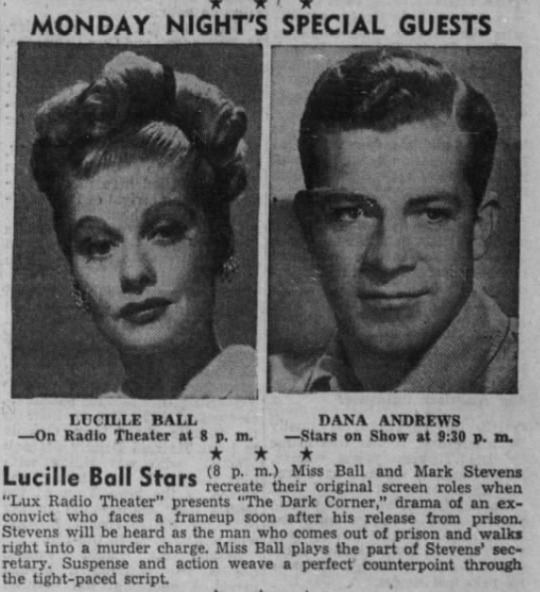
Directed by Fred MacKaye with musical direction by Louis Silvers and sound effects by Charlie Forsyth
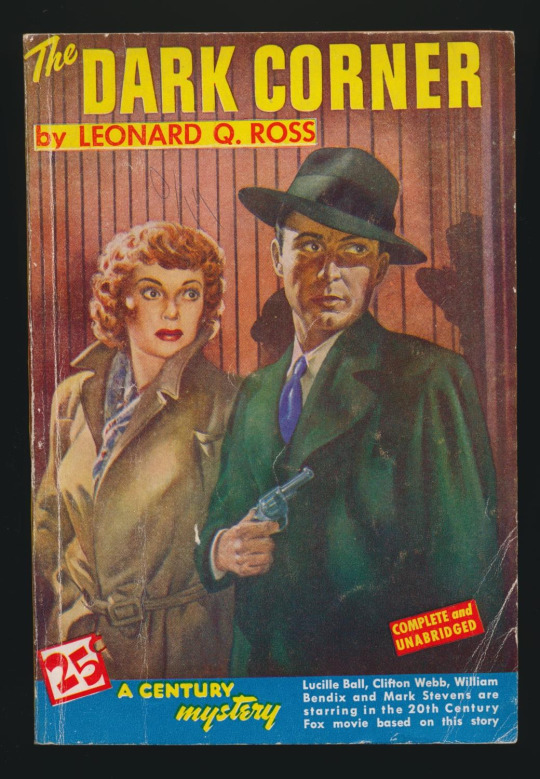
Adapted for radio by Sanford Barnett from the screenplay by Jay Dratler and Bernard Schoenfeld based on the book by Leo Rosten.
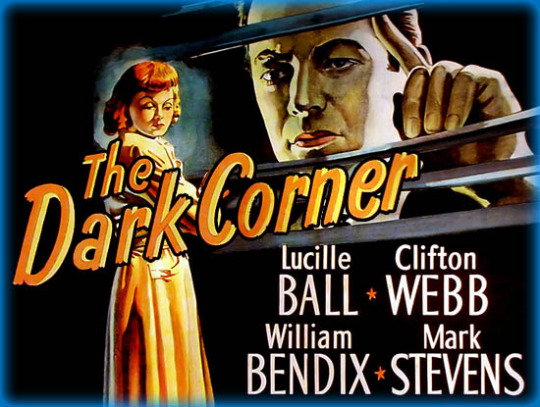
It was based on the 20th Century Fox motion picture of the same name released on May 8, 1946.
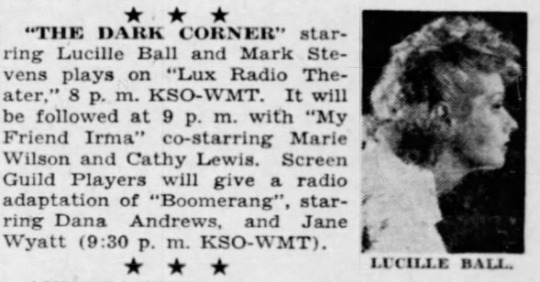
In later years, Lucille Ball was vocal about hating the experience of shooting The Dark Corner. Director Henry Hathaway's bullying reduced Ball to stuttering on set, at which point Hathaway accused her of being inebriated. At the time, Lucille Ball was suing to get out of her contract with MGM. As a result, MGM loaned her to Fox for this picture, which included a significant pay cut.

Lux Radio Theatre (1935-55) was a radio anthology series that adapted Broadway plays during its first two seasons before it began adapting films (”Lux Presents Hollywood”). These hour-long radio programs were performed live before studio audiences in Los Angeles. The series became the most popular dramatic anthology series on radio, broadcast for more than 20 years and continued on television as the Lux Video Theatre through most of the 1950s. The primary sponsor of the show was Unilever through its Lux Soap brand.
CAST

Lucille Ball (Kathleen Stewart) was born on August 6, 1911 in Jamestown, New York. She began her screen career in 1933 and was known in Hollywood as ‘Queen of the B’s’ due to her many appearances in ‘B’ movies. “My Favorite Husband” eventually led to the creation of “I Love Lucy,” a television situation comedy in which she co-starred with her real-life husband, Latin bandleader Desi Arnaz. The program was phenomenally successful, allowing the couple to purchase what was once RKO Studios, re-naming it Desilu. When the show ended in 1960 (in an hour-long format known as “The Lucy-Desi Comedy Hour”) so did Lucy and Desi’s marriage. In 1962, hoping to keep Desilu financially solvent, Lucy returned to the sitcom format with “The Lucy Show,” which lasted six seasons. She followed that with a similar sitcom “Here’s Lucy” co-starring with her real-life children, Lucie and Desi Jr., as well as Gale Gordon, who had joined the cast of “The Lucy Show” during season two. Before her death in 1989, Lucy made one more attempt at a sitcom with “Life With Lucy,” also with Gordon.
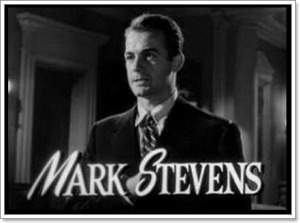
Mark Stevens (Bradford Galt) reprises his role from the film version of The Dark Corner (1946). He became a contract player for Warners at $100 a week in 1943 but they darkened and straightened his curly ginger-colored hair and covered his freckles. At first he was billed as Stephen Richards, he later changed it to Mark Stevens at the suggestion of Darryl F. Zanuck when he switched to 20th Century-Fox. He died in 1994 at age 77.

Joseph Kearns (Ralph Wickett) appeared on “I Love Lucy” as the psychiatrist in “The Kleptomaniac” (ILL S1;E27) and later played the theatre manager in “Lucy’s Night in Town” (S6;E22). His most famous role was as Mr. Wilson on TV’s “Dennis the Menace” (1959). When he passed away during the show’s final season, Lucy regular Gale Gordon took over for him, playing his brother.
In the film, the character was named Hardy Cathcart and was played by Clifton Webb.
Norma Jean Nilsson (Little Girl at the Boarding House) was a child actress who left Hollywood at age 19 after appearing in 16 films and television shows.
In the film, the character carries a slide whistle, which is not used here. She was played by Colleen Alpaugh.
Wally Maher (Fred Foss aka Stauffer) was born on August 4, 1908 in Cincinnati, Ohio. He was known for Mystery Street (1950), The Reformer and the Redhead (1950) and Hollywood Hotel (1937). He was married to Molly Bruno. He died on December 27, 1951.
In the feature film, the role was played by William Bendix, who would go on to fame as the title character in TV’s “The Life of Riley.”
Dan O'Herlihy (Anthony Jardine) was an Irish-born actor nominated for an Oscar in 1954 for Robinson Crusoe. In 1960 he made an appearance on Desilu’s “The Untouchables.” He was in two of the RoboCop movies. He died in 2005 at age 85.
In the feature film, the role was played by German-born actor Kurt Krueger.
Fay Baker (Mari Wickett) was born on January 31, 1917 in New York City as Fanita Baker Schwager. She was known for Notorious (1946), The House on Telegraph Hill (1951) and Deadline - U.S.A. (1952). She died on December 8, 1987.
In the feature film, the role was taken by Cathy Downs, making her first credited screen appearance.
ENSEMBLE
Trude Marson was seen in uncredited roles in four films from 1937 to 1947.
Noreen Gammill started her screen career as the voice of Catty the Elephant in Disney’s Dumbo (1941). She made two background appearances on “The Andy Griffith Show” (1963 and 1964), filmed on the Desilu backlot.
William Johnstone is probably best remembered as Judge Lowell on the long-running daytime drama “As The World Turns”. Prior to that he worked extensively in radio and took over the role of Lamont Cranston on "The Shadow" playing opposite Agnes Moorehead when Orson Welles left the series.
Janet Scott was a regular background voice on “Lux Radio Theatre” with dozens of episodes to her credit from 1937 to 1955.
Lois Corbett was married to Don Wilson of “The Jack Benny Program” and as such did more than a dozen episodes of the television shows with him from 1954 to 1964.
Edward Marr was seen in The Affairs of Annabel with Lucille Ball in 1938. He was also in two Bob Hope TV specials with Hope and Ball in 1966 and 1970.
Stanley Farrar was seen on “I Love Lucy” in “Home Movies” (ILL S3;E20) and “Staten Island Ferry” (ILL S5;E12). He on “The Lucy Show” in “Lucy and Arthur Godfrey” (TLS S3;E23) and “Lucy Meets Danny Kaye” (TLS S3;E15).
Herb Butterfield was born on October 28, 1895 in Providence, Rhode Island. He was known for The Halls of Ivy (1954), The House on Telegraph Hill (1951) and Shield for Murder (1954). On radio, he portrayed the Commissioner on NBC 's "Dangerous Assignment" (1949-53) and Clarence Wellman on "The Halls of Ivy" (1950-52). He died on May 2, 1957
Cliff Clark was seen with Lucille Ball in Her Husband’s Affairs (1947), Miss Grant Takes Richmond (1949), and The Fuller Brush Girl (1950).
OTHERS

William Keighley (Host and Producer) was the director of nearly 40 feature films between 1932 and 1953. His film The Adventures of Robin Hood (1938) was selected for the National Film Registry by the Library of Congress as being culturally significant.
Dorothy Lovett (Commercial Spokeswoman as Libby Collins, Hollywood Reporter) appeared as Meta Bauer on radio’s “The Guiding Light" (1945-47) and as Toni Sherwood in "The Adventures of Rocky Jordan". She did three films with Lucille Ball from 1939 to 1941.
Betty Ann Lynn (Herself, Act Two Intermission Guest) is best known for playing Thelma Lou on “The Andy Griffith Show” (1961 to 1965) which was filmed on the Desilu back lot.
John Milton Kennedy (Announcer) was the announcer of all 35 episodes of “The Loretta Young Show” from 1954 to 1955.
ACT ONE

William Keighley introduces the program, noting that many years earlier, director Fred Kohlmar saw a titian-haired young model who had great possibilities - Lucille Ball. He later had the privilege of presenting her in the film version of The Dark Corner. After a mention of Lux Toilet Soap, the program begins.
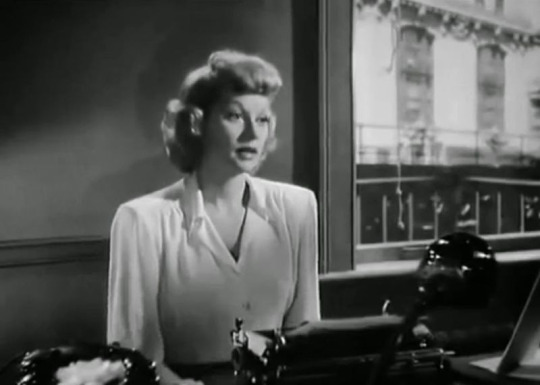
The action opens in a New York City office building on a sultry summer afternoon. Police detective Reeves visits the Offices of Bradford Galt, Private Investigator and speaks to his secretary, Kathleen Stewart.
Galt enters and Reeves wonders why Galt didn’t notify him that he moved offices after his prior unpleasantness. Galt asks Kathleen to have dinner with him. After dinner, Galt asks her to go dancing but she’s wise to his advance. As they walk down the street, they realize that they are being followed.
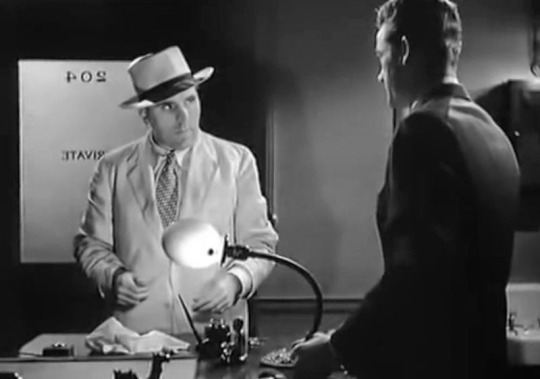
Kathleen takes a cab back to the office, while Galt confronts the pursuer at gunpoint, taking him back to his office for questioning. He says his name is Fred Foss, and that he’s also a private detective. Galt doesn’t believe him and decides to beat the truth out of him.

After some roughing up, Fred discloses that he is being paid to tail Galt by Anthony Jardine. In the tussle, some ink spills on Foss’s white suit. He lets Foss leave. Kathleen was supposed to tail Foss after he left the office, but he tricked her and got away.
Back at his rooming house, Foss uses the hall telephone to call art gallery owner Ralph Wickett, and his ink-stained suit is noticed by a Little Girl neighbor.
At a party for his third wedding anniversary, Wickett hangs up and is greeted by Jardine, a lawyer. Mrs. Lucy Wilding takes Jardine aside pretending to ask legal advice, but it is revealed that he is blackmailing her.
Meanwhile, Galt confides in Kathleen about his past. Jardine is trying to kill Galt because he was a former partner that Galt confronted about his blackmailing female clients. Now Jardine wants to finish the job.
Mari Wickett, Ralph’s wife, is having an affair with Anthony Jardine. She wants to run away with him. At the same time, Galt is headed there to settle the score.
End of Act One

A Lux commercial break takes the form of a story from Libby Collins, Hollywood Reporter. She says she saw Universal’s The Lost Moment starring Robert Cummings and Susan Hayward. Libby says she was on location when they filmed the big fire scene, the biggest fire ever done on a sound stage. She says that she and Susan Hayward washed the soot off their faces with Lux Toilet Soap!
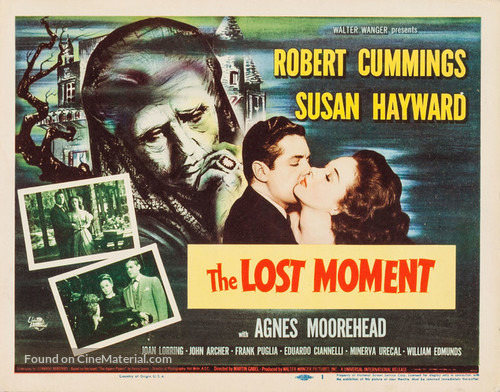
At the time of the broadcast, The Lost Moment was still two weeks from being released. It opened in cinemas on November 27, 1947. The story is set in Italy, so the cast included Edward Ciannelli, who played pizzeria owner Mr. Martinelli in “Visitor from Italy” (ILL S6;E5) and Saverio LoMedico who played the Rome hotel bellboy in “Lucy’s Italian Movie” (ILL S5;E23). The film was not a box office success.
ACT TWO

An hour has past since the end of Act One and Galt is at Jardine’s door. Galt threatens Jardine, who denies tailing him.The two fight while Mari is hiding in the other room. After Galt leaves, she convinces him to run away with her.
At the Gallery, Wickett is visited by Foss. It is clear Wickett is setting up Jardine to take the fall when he has Galt killed. Foss calls Galt to betray Jardine for a price. Galt suggests a one-on-one meeting at his apartment - 904 West 52nd, apartment 307 at 8pm sharp. Wickett will send Jardine to Galt’s apartment at 7:30pm.
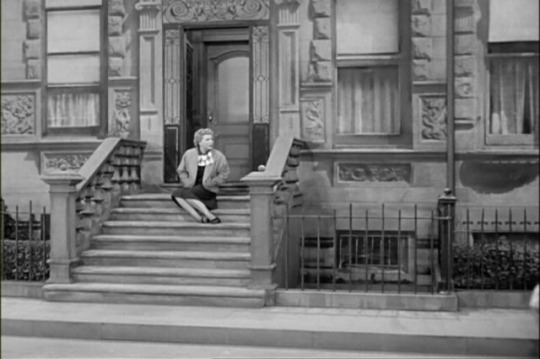
In reality, there is no such address. West 52nd Street in New York City ends at the the 600s block. This is similar to the Ricardo and Mertz apartment building. 623 East 68th Street, which, if real, would be in the East River!
Kathleen and Galt are supposed to meet at the movies, but he doesn’t show so he goes to his apartment at 8:30. Galt opens the door and reveals that Jardine is dead. Galt was ambushed with and knocked out with ether. He woke up to find Jardine’s body bludgeoned by the fireplace poker. Galt realizes he was set up.
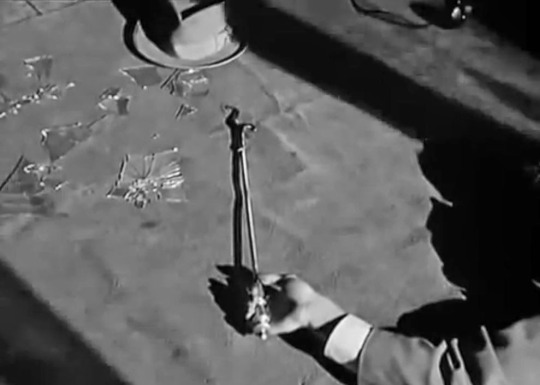
Later, Galt meets Kathleen at her apartment. He couldn’t find Foss and doesn’t know where to look next.
Wickett reminds Mari that they are due at the Kinsglsey’s that night, but she begs off. He strongly hints that he knows that Mari is stepping out on him and looking to run off.
Galt suddenly realizes that Foss would have to have his white suit cleaned, so he is determined to search all the cleaners for the suit and get his address.
Foss phones Wickett, and the Little Girl is there to overhear his conversation. Foss makes a plan to meet Wickett on the 31st floor of the Grant building.
Galt and Kathleen are about to give up on the search for the suit when a cleaner comes through. They get his address and trace Foss to the rooming house where he lives. His name turns out to be Stauffer, not Foss. The landlady reports that he moved out an hour ago and doesn’t know where he went. But the Little Girl does - and spills the beans for a quarter! Galt and Kathleen head for the Grant Building.
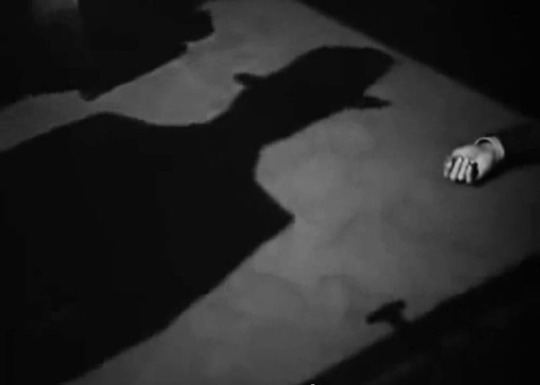
End of Act Two
In the break, Keighley interviews Fox contract player Betty Ann Lynn, who saw filming of Daryl F. Zanuck’s Gentleman’s Agreement starring Gregory Peck and Dorothy McGuire in a “very unusual picture”.

Gentleman’s Agreement premiered on November 11, one day after this broadcast, in both New York City and Chicago. It dealt with anti-Semitism and went on to win three Oscars, including Best Picture. The cast included Lucycom alumni Mike Lally, Shep Houghton, Roy Roberts, and Amzie Strickland in uncredited roles. Betty Ann Lynn says that she also likes to watch the filming of a costume picture like The Foxes of Harrow starring Rex Harrison and Maureen O’Hara, who had 26 costumes made just for her. She notes that O’Hara has a Lux complexion.
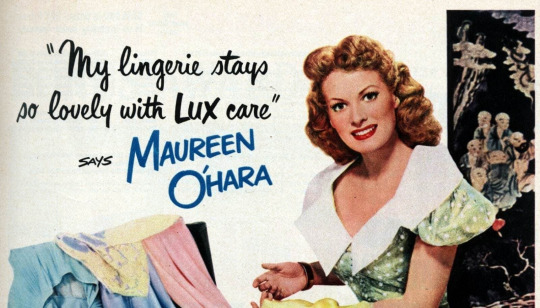
The Foxes of Harrow was released September 13, 1947. "Lux Radio Theater" broadcast a sixty minute radio adaptation of this movie on December 6, 1948, with Maureen O'Hara reprising her movie role. The movie was the screen debut of William Schallert, who did several episodes of “The Lucy Show.” O’Hara and Lucille Ball became lifelong friends after their 1940 film Dance, Girl, Dance. Like Gentleman’s Agreement, The Foxes of Harrow also features Roy Roberts, who went on to play bank president Mr. Cheever on “The Lucy Show.”
ACT THREE
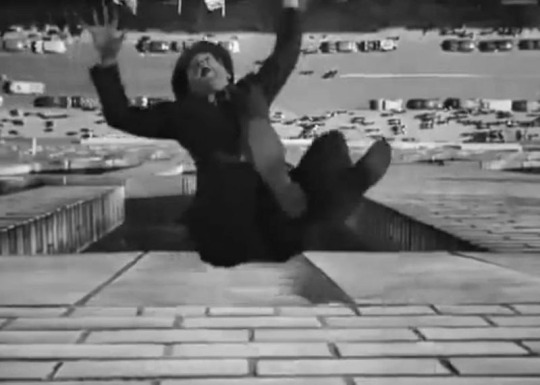
Kathleen and Galt rush to the Grant Building, where Mr. Wickett is about to settle accounts on a remote fire escape. Foss / Stauffer brings proof that Jardine is dead but Wickett throws him from the fire escape to his death.
Galt and Kathleen witness the whole incident from the street, as does the cab driver who was waiting for Foss / Stauffer. Thinking fast, Galt steals the cab which still contains Foss’s luggage. Later, we hear that the bags were only full of clothes. Kathleen urges him to keep thinking. Kathleen suddenly remembers that the Little Girl mentioned galleries. They put the pieces together and all evidence leads them to the Wickett Galleries. Galt heads there and questions the clerk. Under the guise of buying a painting, Galt inquires about meeting Mr. Wickett, and the clerk departs. Mari comes in the side door, and Galt tells her that Anthony Jardine has been murdered. She faints. Wickett comes in and when Galt tells him the truth, Ralph locks him in the gallery vault. Mari has revived and overhears Ralph’s threats, holding a gun on him. She shoots her husband dead.
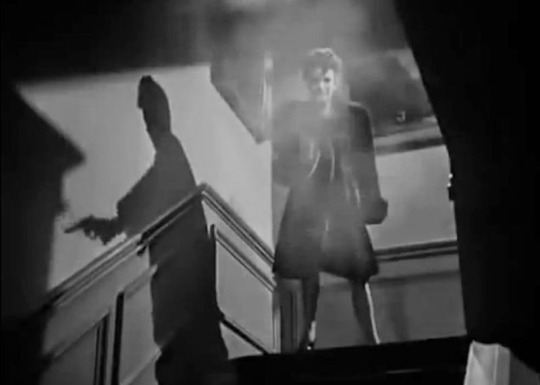
Kathleen has tipped off the police, who only want to charge him with stealing a taxi cab. Kathleen asks if he can be booked at another time because they have a date at the City Hall - to get married.
End of Story
As a curtain call, Keighley chats with Lucille Ball and Mark Stevens. He congratulates Ball on the success of her stage show, Dream Girl, a play she says she will do again in San Francisco. When Keighley asks how Lucille’s busy schedule and that of her husband Desi Arnaz’s leave any time for a personal life, Ball says that they will be playing in San Francisco at the same time.

In June 1947, Lucille Ball performed at New Jersey’s McCarter Theatre in Dream Girl, a play by Elmer Rice. It also played Brooklyn, Detroit and Boston.

The San Francisco production opened just a week after this radio telecast. As Ball states, Desi Arnaz was also in San Francisco at the time, playing in the Rose Room of the Palace Hotel, a fact that was advertised in the Dream Girl program. During the Los Angeles engagement in January 1948, Ball fell ill and had to withdraw. Although she love performing on stage, her radio career and then television success did not allow her to return to the footlights until 1960.

Lucy notes that like many other busy stars, she owes her good complexion to Lux Soap!
Turning to Mark Stevens, Lucille notes that he will play an FBI man in his next project at Fox, with Keighley as director.
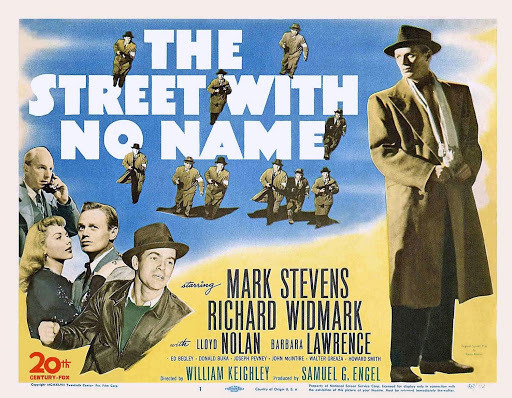
Although the film’s title is not mentioned, they are referring to The Street With No Name, which won’t be released until June 1948. Stevens plays Gene Cordell aka George Manley, a covert FBI agent who infiltrates a ruthless gangster mob. "Lux Radio Theater" broadcast a 60-minute radio adaptation of the movie on January 31, 1949 with Mark Stevens reprising his film role.
Keighley notes that next week “Lux Radio Theatre” will present Jane Wyman and Ronald Reagan in Nobody Lives Forever.

The Warner Brothers picture Nobody Lives Forever was released on November 1, 1946. It originally starred John Garfield and Geraldine Fitzgerald in roles taken on radio by Reagan and Wyman, who were husband and wife at the time. Of course, Reagan left Hollywood for a grander stage, first in California as Governor, then as President of the United States. He bestowed Lucille Ball with The Kennedy Center Honor in 1986.
A public service announcement asks housewives to salvage kitchen fats and turn them in at their local butcher for cash!
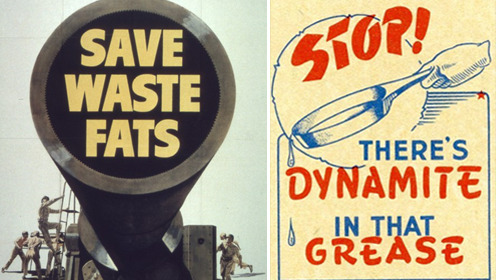
These were used to make supplies for wartime, such as ammunition and weapons.
Announcer Kennedy notes that Mark Stevens appeared through the courtesy of 20th Century Fox, producers of Forever Amber.

Forever Amber is a 1944 romance novel by Kathleen Winsor set in 17th-century England. It was made into a film in 1947 starring Cornel Wilde, who appeared in “The Star Upstairs” (ILL S4;E25). When “Lucy Writes A Novel” (ILL S3;E24), Ethel jokes about finding Lucy’s hidden manuscript and burning it: “We pulled down the kitchen blind and changed the name of your novel to 'Forever Ember.'”
‘DARK’ TRIVIA

In a September 1985 episode of “Remington Steele,” a character played by Stephen Dillane has the name Bradford Galt! The stories, however, are not otherwise connected.
In both the film and the radio show, Fred Foss gives his phone number as CH-elsea 4-43510. However, according to the Manhattan phone book for 1946, there were only CH-elsea 2 and CH-elsea 3 exchanges. Real phone numbers were rarely used in film or television.

When television began to supplant radio, “The Lux Video Theatre” was introduced. It was seen from 1950 to 1959. Initially, the show was a thirty-minute weekly show featuring live stage plays, but when it moved to NBC in August 1954, the show was extended to sixty minutes. As on radio, the programs were then primarily adaptations of motion pictures. The host would introduce each act, and would conduct an interview with the stars at the end of the play. Of the cast of this radio version of The Dark Corner:
William Keighley directed an episode in 1951.
Mark Stevens did an episode in 1955.
Dan O’Herlihy did five episodes.
Joseph Kearns did three episodes.
The character name Ralph Wickett replaced Hardy Cathcart for the radio show. It is likely that they could no longer get legal clearance to use the name Hardy Cathcart, necessitating the change.
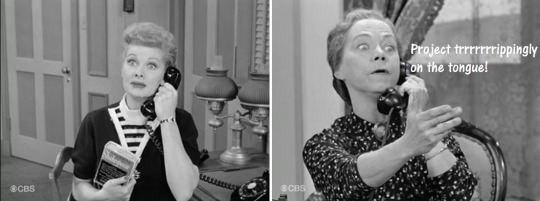
The film featured Ellen Corby as a maid, a role not in the radio drama. Corby went on to be seen as Lucy Ricardo’s high school acting teacher and in several small roles on “The Lucy Show” before her best-loved role of Grandma on “The Waltons.”

The film also features background work by Sam Harris, who did 15 films with Lucille Ball, in addition to multiple episodes of “I Love Lucy” and “The Lucy Show” as well as Harold Miller, who did eight films with Lucy and two episodes of “I Love Lucy”.

The film is available on DVD complete with DVD commentary and original trailer.

#The Dark Corner#Lucille Ball#Mark Stevens#Lux Radio Theatre#Radio#1948#Joseph Kearns#William Keighley#1947
8 notes
·
View notes
Text
Favorite film discoveries of 2019
Every year, my new-to-me favorites list always shocks me in some way. This year, the sheer amount of movies made in the 2010s on display is INSANE by my standards. Of course, most of the modern movies here are throwbacks or tributes to older styles of cinema, so maybe it’s not that shocking in the long run.
Another running trend this year: movies that are old but not as dated as we would wish. Many of the older films here deal with xenophobia and political strife in ways that still feel shockingly prescient today-- the more things change...
ONCE UPON A TIME... IN HOLLYWOOD (DIR. QUENTIN TARANTINO, 2019)
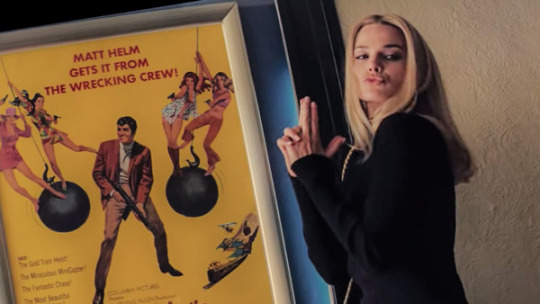
I never thought the day would come where my favorite movie of the year would actually be made after the 1970s, let alone by Quentin Tarantino. Then again, this movie is all about the end of Old Hollywood as well as a big love letter to the 1960s, so maybe it’s not that shocking a state of affairs. I adored this movie, the level of detail, the laidback yet elegaic vibe, the comedy and the relationships between all the characters. It was one of those movies where I loved even the scenes where nothing seems to be happening at all-- I mean, who knew Brad Pitt feeding his dog and watching TV could be entertaining?? But it is and I can't wait to see this one again!
INTENTIONS OF MURDER (DIR. SHOHEI IMAMURA, 1964)
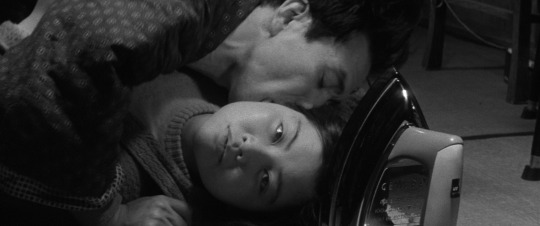
Intentions of Murder has an insane premise, one that runs the risk of being tasteless: a housewife in a miserable, exploitative marriage is raped by a sickly burglar during a home invasion. Even worse, she can’t shake him, as he’s suddenly infatuated and wants her to run away with him to the city. And weirder still: her current existence is so miserable that she’s TEMPTED. While abuse and rape are grim subjects for any story, Intentions is actually about a woman coming into her own and finally standing strong against all these men trying to use her. It’s a weird blend of drama and dark comedy, a truly savage satire on patriarchy and class-snobbery.
JOKER (DIR. TODD PHILLIPS, 2019)
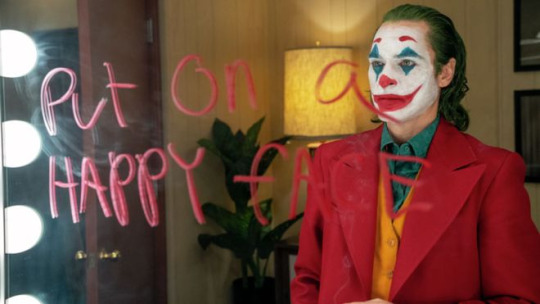
I went into this movie expecting to think it was overhyped and when I first left the theater, I was all ready to say “it’s good but not THAT good.” But it ended up haunting me for weeks afterward, and I found myself thinking about how everything just tied up so well together, from the grotty urban hellscape which serves as the setting to Phoenix’s brilliant performance. It reminded me a lot of A Clockwork Orange in how intimate it lets you get to this violent man while never pretending he is someone to be glamorized or imitated.
SIMON (DIR. MARSHALL BRICKMAN, 1980)
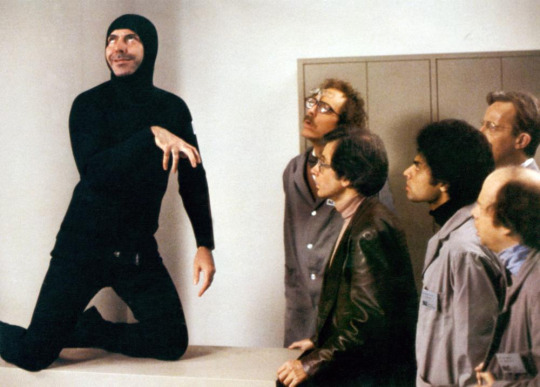
How do I even describe Simon? Alan Arkin is brainwashed by a group of overpaid intellectuals into believing he is descended from an alien toaster. Then he gets a messiah complex and starts gathering disciples as he rails against television, condiment packets, and muzak. It’s a little uneven at times, sure, but the satire is really inspired. The whole thing is like a combination of Mel Brooks, Stanley Kubrick, and Woody Allen’s styles, and it is quite hilarious for those who thrive on cult oddities.
PEEPING TOM (DIR. MICHAEL POWELL, 1960)
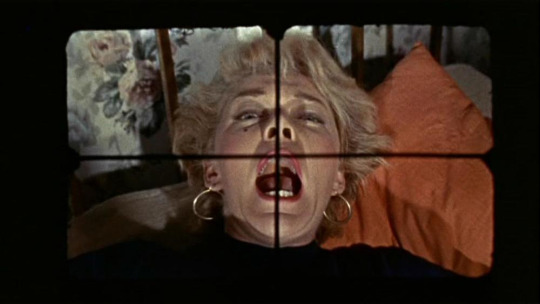
Though it came out the same year as Hitchcock’s Psycho and has been nearly as influential for horror cinema, Peeping Tom remains underseen by everyone save for film theorists. And what a shame that is, because this movie is more frightening than Psycho. Sure, that may be because Psycho is so predominant in popular culture and just so influential that it no longer has the same shock value, but there’s something about Peeping Tom that gets under my skin, something sad, even disgusting. I felt dirty after watching it-- and this is 2019!
MIDNIGHT MARY (DIR. WILLIAM WELLMAN, 1933)
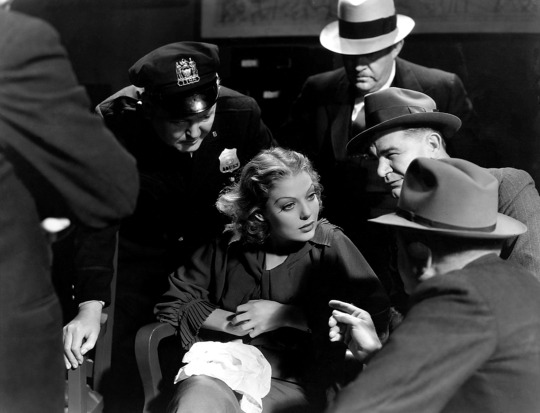
Loretta Young got one of her juiciest roles in this pre-code crime drama. Her Mary Martin is more than just a good girl forced into criminal circles-- she’s a complicated creature, compassionate and desperate and lonely and bitter and sensual all at once. This movie is a fast-paced, beautifully filmed ride, cloaked in that Depression-era cynicism that makes pre-code Hollywood of such interest to movie geeks the world over.
WILD BOYS OF THE ROAD (DIR. WILLIAM WELLMAN, 1933)
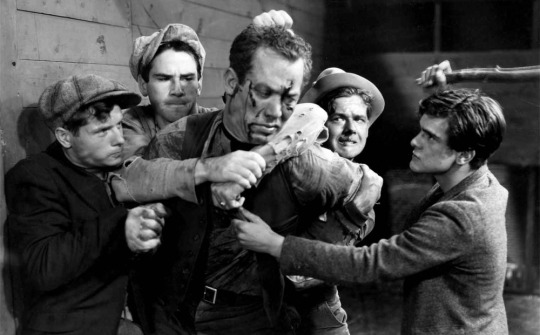
Wild Boys of the Road is a quintessential Depression-era movie, relentless in its bleakness and rage. That the main characters are all starving kids only looking for work makes their struggles all the harder to watch. William Wellman is quickly becoming one of my favorite directors: his gritty style and compact storytelling are just perfect for a ripped-from-the-headlines drama such as this. And the “happy” ending has one little moment that just knocks any smile you have right off your mug. Absolutely see this.
THE RUSSIANS ARE COMING, THE RUSSIANS ARE COMING (DIR. NORMAN JEWISON, 1966)
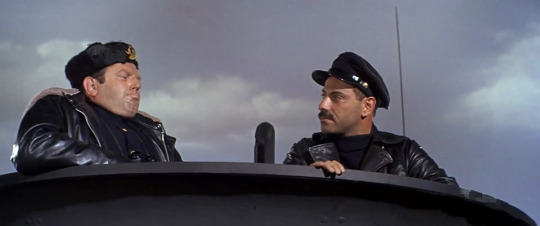
Sometimes, when you watch a movie only because a favorite actor is in it, you get subjected to pure trash like Free and Easy (oh, the things I do for Buster Keaton). Other times, you get cute gems like The Russians are Coming, The Russians are Coming, which, as you probably guessed, I mainly sought out for Alan Arkin. But the whole movie is hilarious, the best kind of farce comedy, populated by enjoyable characters and a sweet-tempered humanism that grounds the wackiness. While a little overlong, this movie is quite underrated-- and sadly, its satire of American xenophobia and Cold War panic is not as dated as we would like to believe.
ALL THE PRESIDENT’S MEN (DIR. ALAN J. PAKULA, 1976)
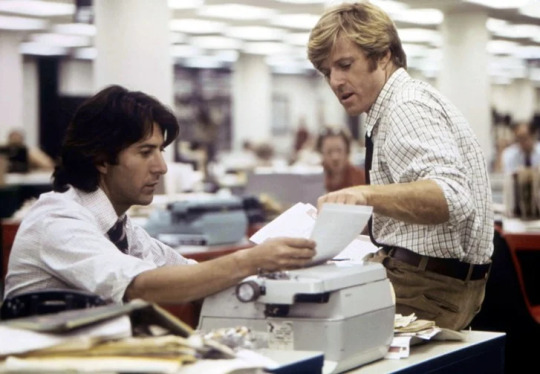
Who knew a political thriller where most people know the twist could be so intense and riveting? It’s about as nonsensical as feeling suspense when you watch a movie about the Titanic and hope the boat won’t sink-- but damn, it’s magical. All the President’s Men is real white-knuckle stuff, with Robert Redford and Dustin Hoffman projecting both youthful excitement and deep panic as they proceed with their investigation. It scarcely seems to have aged at all.
WHISPER OF THE HEART (DIR. YOSHIFUMI KONDOU, 1995)
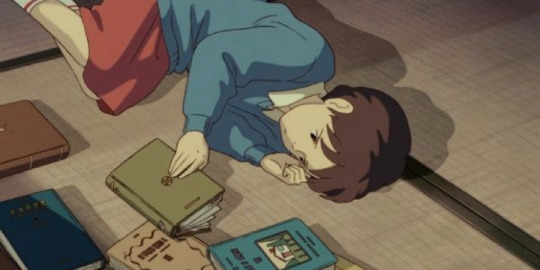
There’s a scene near the end of Whisper of the Heart where the protagonist Shizuku shows the finished first draft of her fantasy novel to her first reader, the grandpa of one of her schoolmates. She weeps because it isn’t the perfect image she had in her head, despite how hard she worked on it, but the old man tells her that it takes polishing and discipline to make the work come to its full potential. Few movies about artists are so honest about how hard it can be, how unsupportive others can be in their demand that everyone be “practical.” As a writer who struggles to create and constantly doubts herself, this movie spoke strongly to me. I recommend it to any creative person.
THE PHANTOM OF THE PARADISE (DIR. BRIAN DE PALMA, 1976)
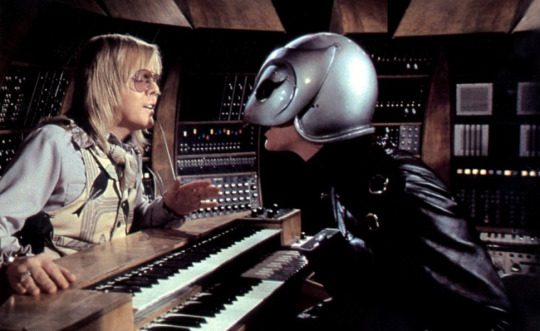
I’d been wanting to see this movie since my high school phan days. Holy crap, is it WEIRDER than I could have ever imagined, a true camp masterpiece. I’m shocked it was never tuned into a stage show actually, but then again, we would miss those trippy camera angles and we wouldn’t have Paul Williams as one of the greatest villains of all time.
DUEL (DIR. STEVEN SPIELBERG, 1971)
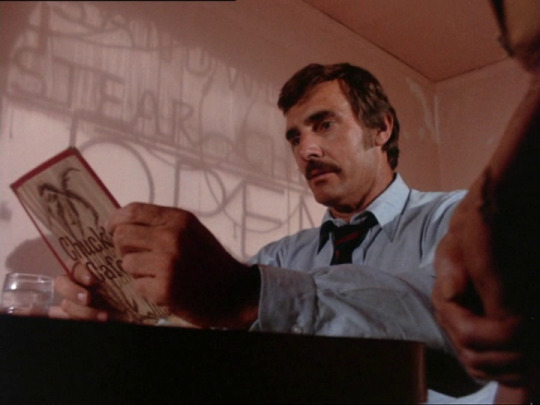
When people talk about the best movies made in the “Hitchcock without Hitchcock directing” tradition, why is Duel so seldom mentioned? The scene in the cafe, packed with paranoid tension and tense camerawork, alone should qualify it. Duel is most known as the movie which put the young Steven Spielberg on the map. It’s quite different from his later work, grittier and less whimsical for sure. Even the ending seems almost nihilistic, depending on how you view it. But damn, if it isn’t fine filmmaking.
CAROL (DIR. TODD HAYNES, 2015)
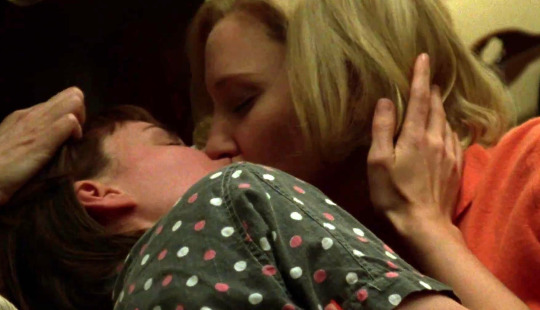
This gorgeous throwback to Douglas Sirk melodramas is also one of the best romantic movies I’ve seen in a while. Cate Blanchett and Rooney Mara have the sweetest, tenderest chemistry-- it was like seeing Lauren Bacall and Audrey Hepburn as love interests in a film. Unlike Sirk, there is little in the way of ripe melodrama here-- everything is underplayed, aching, mature. And I can say this is an adaptation that is better than the source book: it just feels so much warmer.
12 ANGRY MEN (DIR. SIDNEY LUMET, 1957
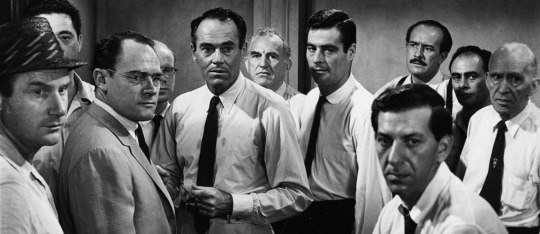
All I can say is that this was every bit equal to the hype. Common movie wisdom says people sitting and talking in a room is going to be boring on film, but movies like 12 Angry Men prove this is not so when you’ve got an excellently tense atmosphere, an inspired script, and a stable of fine actors to work with. Like The Russians are Coming, the Russians are Coming, this movie has not significantly aged-- much to society’s discredit.
A STAR IS BORN (DIR. GEORGE CUKOR, 1954)
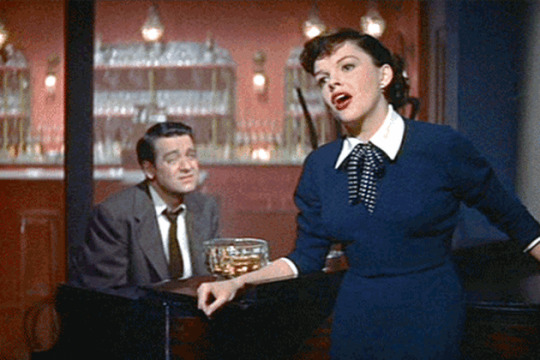
Another movie I went into not expecting to love as much as I did. When movies from the 20s or 30s tended to get remakes in the 1950s, I always find them too garish and big, victims of glossy Cinemascope and overlong runtimes. Compared to the lean 1937 classic original, I expected sheer indulgence from this three-hour remake. Instead, I got my heart torn out all over again-- the longer runtime is used well, fleshing out the characters to a greater degree. Judy Garland and James Mason both give what might be the best efforts of their respective careers, and the satire of the celebrity machine remains as relevant and scathing as ever.
BLANCANIEVES (DIR. PABLO BERGER, 2012)
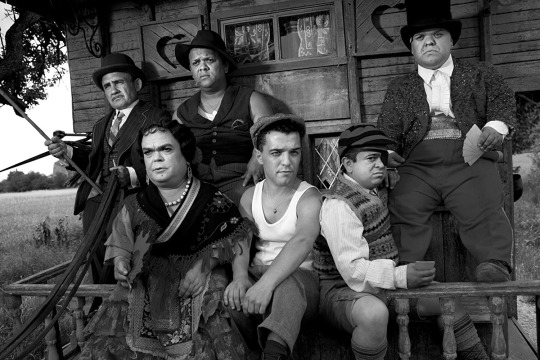
Oh, it feels like this movie was made for me specifically. It’s shot in gorgeous, expressionistic black-and-white. It’s set in the 1920s. It’s a clever adaptation of a classic fairy tale. It’s as funny and charming as it is bittersweet and macabre. Instead of more superhero movies, can we get more neo-silent movies like this? PLEASE?
THE FAVOURITE (DIR. YORGOS LANTHIMOS, 2018)
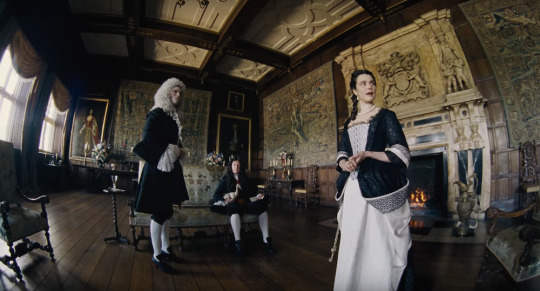
I’ve heard The Favourite described as a “bitchy lesbian Shakespeare play,” but this description, while a little true in terms of general tone, does not get to the heart of what makes this film brilliant. More than love or sex, this movie is about power-- particularly the corrupting influence of power. And it corrupts not only morals but love itself. Innocents become Machiavellian schemers. Lovers become sadomasochistic enemies. Good intentions turn to poison. This certainly isn’t a happy movie, but it is moving and, strangely enough, also hilarious. I was reminded of the chilly, satirical world of Kubrick’s Barry Lyndon more than once-- and for me, that is not a bad movie to be reminded of.
ON THE WATERFRONT (DIR. ELIA KAZAN, 1954)
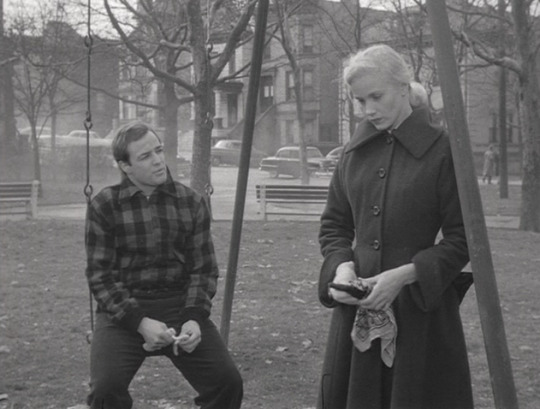
Another classic that’s been on my list forever that I was delighted to find worthy of its reputation. It’s a classic tale of redemption and social justice, perfectly acted and shot. While I still prefer A Streetcar Named Desire as far as Kazan is concerned, this might be a better movie in the objective sense. Actually, more than even Brando, Karl Malden is the acting highlight for me-- he plays a priest torn between staying silent or truly speaking for the Gospel by demanding justice for the poor parish he serves. Just brilliant work.
KLUTE (DIR. ALAN J. PAKULA, 1971)
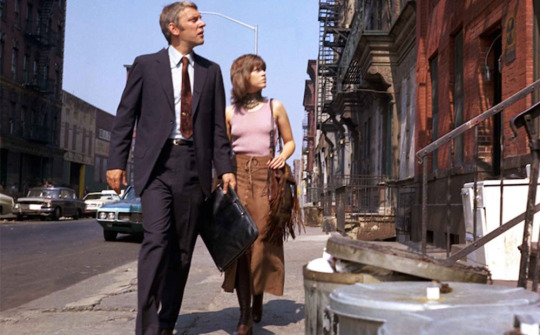
A perfect thriller, just about, and a great example of the “NYC is hell on earth” subgenre of the 1960s and 1970s. Jane Fonda is a revelation: she feels so real, not at all like a starlet trying to seem normal if you know what I mean.
KISS KISS BANG BANG (DIR. SHANE BLACK, 2005)
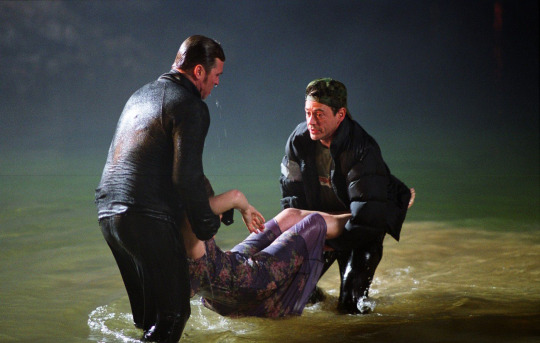
As far as subversive noir goes, this is the most entertaining. I would put it up there with The Big Lebowski as far as goofy takes on Raymond Chandler are concerned-- I don’t even really know what to make of it, but I laughed my ass off anytime I wasn’t going “WHAT???”
What were your favorite film discoveries in 2019?
#thoughts#peeping tom#simon 1980#kiss kiss bang bang#intentions of murder#once upon a time in hollywood#joker#a star is born#blancanieves#the russians are coming the russians are coming#all the president's men#whisper of the heart#carol#the favourite#12 angry men#klute#the phantom of the paradise#on the waterfront#wild boys of the road#midnight mary#duel
151 notes
·
View notes
Text
The Movie List
Hi all,
As promised, here’s the list. Once a movie has been reviewed, I’ll turn the movie into a link to the review on this list. Any movie we can’t find will be marked with a cross through. There were double ups in the categories, movies being listed twice, so I’ve only let them be in the first category they show up in (Hence why there isn’t 100 movies in the fourth category). The list is below:
1. GENRE
Action-Aventure
The Mark of Zorro (Fred Niblo, 1920)
The Adventures of Robin Hood (Michael Curtiz and William Keighley, 1938)
The Seven Samurai (Akira Kurosawa, 1954)
Top Gun (Tony Scott, 1986)
Lethal Weapon (Richard Donner, 1987)
Thelma and Louise (Ridley Scott, 1991)
Mission: Impossible (Brian De Palma, 1996)
Kill Bill: Volume 1 (Quentin Tarantino, 2003)
Animation
Steamboat Willie (Ub Iwerks, 1928)
Snow White and the Seven Dwarfs (David Hand and William Cottrell, 1937)
Pinocchio (Ben Sharpsteen and Hamilton Luske, 1940)
Yellow Submarine (George Dunning, 1968)
Akira (Katsuhiro Otomo, 1988)
Toy Story (John Lasseter, 1995)
Spirited Away (Hayat Miyazaki, 2001)
Belleville Rendez-vous (Sylvain Chomet, 2003)
Wallace and Gromit: The Curse of the Were-Rabbit (Steve Box and Nick Park, 2005)
Wall-E (Andrew Stanton, 2008)
Up (Pete Docter and Bob Peterson, 2009)
How To Train Your Dragon (Chris Sanders and Dean DeBlois, 2010)
Avante-Garde
L’Inhumaine (Marcel L’Herbier, 1924)
Un Chien Andalou (Luis Bunuel, 1929)
L’Age d’Or (Luis Bunuel, 1930)
Biopic
Young Mr. Lincoln (John Ford, 1939)
Gandhi (Richard Attenborough, 1982)
A Beautiful Mind (Ron Howard, 2001)
The Aviator (Martin Scorsese, 2004)
Ray (Taylor Hackford, 2004)
The Last King of Scotland (Kevin Macdonald, 2006)
Milk (Gus Van Sant, 2008)
Comedy
The General (Clyde Bruckman and Buster Keaton, 1927)
Duck Soup (Leo McCarey, 1933)
His Girl Friday (Howard Hawks, 1940)
The Ladykillers (Alexander Mackendrick, 1955)
The Pink Panther (Blake Edwards, 1963)
Annie Hall (Woody Allen, 1977)
Airplane! (Jim Abrahams, David Zucker, and Jerry Zucker, 1980)
Four Weddings and a Funeral (Mike Newell, 1994)
The Full Monty (Peter Cattaneo, 1997)
Meet the Parents (Jay Roach, 2000)
Bridget Jone’s Diary (Sharon Maguire, 2001)
The Devil Wears Prada (David Frankel, 2006)
Costume Drama
Jezebel (William Wyler, 1938)
Les Enfants du Paradis (Marcel Carne, 1945)
Senso (Luchino Visconti, 1954)
Barry Lyndon (Stanley Kubrick, 1975)
Dangerous Liaisons (Stephen Frears, 1988)
Howards End (James Ivory, 1992)
Sense and Sensibility (Ang Lee, 1995)
Bright Star (Jane Campion, 2009)
Cult
Plan 9 from Outer Space (Edward D. Wood, 1958)
Faster, Pussycat! Kill! Kill! (Russ Meyer, 1965)
Pink Flamingos (John Waters, 1972)
The Wicker Man (Robin Hardy, 1973)
The Rocky Horror Picture Show (Jim Sharman, 1975)
Withnail and I (Bruce Robinson, 1987)
Fight Club (David Finch, 1999)
Disaster
Airport (George Seaton, 1970)
The Poseidon Adventure (Ronald Neame, 1972)
The Towering Inferno (John Guillermin, 1974)
Independence Day (Roland Emmerich, 1996)
Titanic (James Cameron, 1997)
Documentary
Man with a Movie Camera (Dziga Vertov, 1929)
Night and Fog (Alain Resnais, 1955)
Don’t Look Back (D.A. Pennebaker, 1967)
The Sorrow and the Pity (Marcel Ophuls, 1969)
Bowling for Columbine (Michael Moore, 2002)
Capturing the Friedmans (Andrew Jarecki, 2003)
The Story of the Weeping Camel (Byambasuren, Dava and Luigi Falorini, 2003)
March of the Penguins (Luc Jacquet, 2005)
An Inconvenient Truth (Davis Guggenheim, 2006)
Epic
The Birth of a Nation (D.W. Griffith, 1915)
Alexander Nevsky (Sergei M. Eisenstein and Dmitri Vasilyev, 1938)
The Robe (Henry Koster, 1953)
The Ten Commandments (Cecil B. DeMille, 1956)
Ben-Hur (William Wyler, 1959)
Spartacus (Stanley Kubrick, 1960)
Doctor Zhivago (David Lean, 1965)
Gladiator (Ridley Scott, 2000)
Kingdom of Heaven (Ridley Scott, 2005)
Film Noir
Double Indemnity (Billy Wilder, 1944)
Fallen Angel (Otto Preminger, 1945)
The Big Sleep (Howard Hawks, 1946)
Kiss Me Deadly (Robert Aldrich, 1955)
Touch of Evil (Orson Welles, 1958)
Chinatown (Roman Polanski, 1974)
L.A. Confidential (Curtis Hanson, 1997)
Sin City (Frank Miller and Robert Rodriguez, 2005)
Gangster
Little Caesar (Mervyn Leroy, 1931)
Public Enemy (William Wellman, 1931)
Angels with Dirty Faces (Michael Curtiz, 1938)
Bonnie and Clyde (Arthur Penn, 1967)
The Godfather (Francis Ford Coppola, 1972)
GoodFellas (Martin Scorsese, 1990)
Pulp Fiction (Quentin Tarantino, 1994)
Snatch (Guy Ritchie, 2000)
Gangs of New York (Martin Scorsese, 2002)
Road to Perdition (Sam Mendes, 2002)
Horror
Nosferatu (F.W. Murnau, 1922)
The Bride of Frankenstein (James Whale, 1935)
Cat People (Jacques Tourneur, 1942)
The Night of the Living Dead (George A. Romero, 1968)
The Exorcist (William Friedkin, 1973)
Halloween (John Carpenter, 1978)
Ring (Hideo Nakata, 1998)
The Blair Witch Project (Daniel Myrick and Eduardo Sanchez, 1999)
Martial Arts
Fists of Fury (Wei Lo, 1971)
The Chinese Connection (Wei Lo, 1972)
Enter the Dragon (Robert Clouse, 1973)
The Karate Kid (John G. Avildsen, 1984)
Once Upon a Time in China (Tsui Hark, 1991)
Crouching Tiger, Hidden Dragon (Ang Lee, 2000)
Hero (Zhang Yimou, 2002)
Melodrama
Imitation of Life (John M. Stahl, 1934)
Stella Dallas (King Vidor, 1937)
Now, Voyager (Irving Rapper, 1942)
Mildred Pierce (Michael Curtiz, 1945)
Brief Encounter (David Lean, 1945)
The Life of Oharu (Kenji Mizoguchi, 1952)
Musical
Le Million (Rene Clair, 1931)
42nd Street (Lloyd Bacon, 1933)
The Merry Widow (Ernst Lubitsch, 1934)
Top Hat (Mark Sandrich, 1935)
Meet Me in St. Louis (Vincente Minnelli, 1944)
Singin’ in the Rain (Gene Kelly and Stanley Donen, 1952)
Gigi (Vincente Minnelli, 1958)
West Side Story (Robert Wise and Jerome Robbins, 1961)
Cabaret (Bob Fosse, 1972)
Grease (Randal Kleiser, 1978)
Dirty Dancing (Emile Ardolina, 1987)
Moulin Rouge! (Baz Luhrmann, 2001)
Hairspray (Adam Shankman, 2007)
Propaganda
The Triumph of the Will (Leni Riefenstahl, 1935)
The Plow that Broke the Plains (Pare Lorentz, 1936)
Der Fuehrer’s Face (Jack Kinney, 1943)
Science Fiction and Fantasy
Metropolis (Fritz Lang, 1927)
The Wizard of Oz (Victor Fleming, 1939)
The Time Machine (George Pal, 1960)
2001: A Space Odyssey (Stanley Kubrick, 1968)
Solaris (Andrei Tarkovsky, 1972)
Star Wars (George Lucas, 1977)
The Matrix (Larry and Andy Wachowski, 1999)
Avatar (James Cameron, 2009)
Inception (Christopher Nolan, 2010)
Serial
The Perils of Pauline (Louis Gasnier, 1914)
Flash Gordon (Frederick Stephani, 1936)
The Lone Ranger (John English and William Witney, 1938)
Series
Charlie Chan (Various, 1931-49)
Don Camillo (Various, 1951-65)
Zatoichi (Various, 1962-2003)
The Lord of the Rings (Peter Jackson, 2001-03)
Harry Potter (Various, 2001-11)
The Chronicles of Narnia (Various, 2005-)
Teens
Rebel Without a Cause (Nicholas Ray, 1955)
American Graffiti (George Lucas, 1973)
The Breakfast Club (John Hughes, 1985)
Mean Girls (Mark Waters, 2004)
Thriller
The Third Man (Carol Reed, 1949)
Psycho (Alfred Hitchcock, 1960)
The Silence of the Lambs (Jonathan Demme, 1991)
The Constant Gardener (Fernando Meirelles, 2005)
The Girl Who Played with Fire (Daniel Alfredson, 2009)
Underground
Meshes of the Afternoon (Maya Deren, 1943)
Wavelength (Michael Snow, 1967)
Flesh (Paul Morrissey, 1968)
War
J’Accuse (Abel Gance, 1919)
Paths of Glory (Stanley Kubrick, 1957)
Apocalypse Now (Francis Ford Coppola, 1979)
Das Boot (Wolfgang Peterson, 1981)
Full Metal Jacket (Stanley Kubrick, 1987)
Saving Private Ryan (Steven Spielberg, 1998)
No Man’s Land (Danis Tanovic, 2001)
The Hurt Locker (Kathryn Bigelow, 2008)
Western
Stagecoach (John Ford, 1939)
The Man from Laramie (Anthony Mann, 1955)
The Searchers (John Ford, 1956)
The Magnificent Seven (John Sturges, 1960)
The Man who Shot Liberty Valance (John Ford, 1962)
The Wild Bunch (Sam Peckinpah, 1969)
Once Upon a Time in the West (Sergio Leone, 1968)
Unforgiven (Clint Eastwood, 1992)
True Grit (Joel and Ethan Coen, 2010)
2. WORLD FILM
Africa
The Money Order (Ousmane Sembene, Senegal, 1968)
The Night of Counting the Years (Shadi Abdelsalam, Egypt, 1969)
Xala (Ousmane Sembene, Senegal, 1975)
Chronicle of the Burning Years (Mohammed Lakhdar-Hamina, Algeria, 1975)
Alexandria… Why? (Youssef Chahine, Egypt, 1978)
Man of Ashes (Nouri Bouzid, Tunisia, 1986)
Yeelen (Souleymane Cisse, Mali, 1987)
The Silences of the Palace (Moufida Tlatli, Tunisia, 1994)
Waiting for Happiness (Abderrahmane Sissako, Mauritania, 2002)
The Middle East
Divine Intervention (Elia Suleiman, Palestine, 2002)
The Syrian Bride (Eran Riklis, Palestine, 2004)
Thirst (Tawfik Abu Wael, Palestine, 2004)
Paradise Now (Hand Abu-Assad, Palestine, 2005)
Iran
The Cow (Dariush Mehrjui, 1968)
The White Balloon (Jafar Panahi, 1995)
Taste of Cherry (Abbas Kiarostami, 1997)
The Children of Heaven (Majid Majidi, 1997)
Blackboards (Samira Makmalbaf, 2000)
The Day I Became a Woman (Marzieh Meshkini, 2000)
Secret Ballot (Babek Payami, 2001)
Kandahar (Mohsen Makmalbaf, 2001)
Turtles Can Fly (Bahman Ghobadi, 2004)
Eastern Europe
Knife in the Water (Roman Polanski, Poland, 1962)
The Shop on the High Street (Jan Kadar, Czechoslovakia, 1965)
The Round-Up (Miklos Jansco, Hungary, 1965)
Loves of a Blonde (Milos Foreman, Czechoslovakia, 1965)
Daisies (Vera Chytilova, Czechoslovakia, 1966)
Closely Observed Trains (Jiri Menzel, Czechoslovakia, 1966)
Man of Marble (Andrzej Wajda, Poland, 1976)
The Three Colours trilogy (Krzysztof Kieslowski, Poland, 1993-94)
Divided We Fall (Jan Hrebejk, Czech Republic, 2000)
The Turin Horse (Bela Tarr, Hungary, 2011)
The Balkans
A Matter of Dignity (Michael Cacoyannis, Greece, 1957)
I Even Met Happy Gypsies (Aleksandar Petrovic, Yugoslavia, 1967)
The Goat Horn (Metodi Andonov, Bulgaria, 1972)
Yol (Yilmaz Güney and Serif Goren, Turkey, 1982)
Underground (Emir Kusturica, Yugoslavia, 1995)
Eternity and a Day (Theo Angelopoulos, Greece, 1998)
Uzak (Nuri Bilge Ceylan, Turkey, 2002)
The Death of Mr. Lazarescu (Cristi Puiu, Romania, 2005)
4 Months, 3 Weeks, and 2 Days (Cristian Mungiu, Romania, 2007)
Russia
The Battleship Potemkin (Sergei Eisenstein, 1925)
Storm Over Asia (Vsevolod Pudovkin, 1928)
Earth (Alexander Dovzhenko, 1930)
Ivan the Terrible Parts I and II (Sergei Eisenstein, 1944/58)
The Cranes are Flying (Mikhail Kalatozov, 1957)
Ballad of a Soldier (Grigori Chukhrai, 1959)
The Colour of Pomegranates (Sergei Parajanov, 1969)
Come and See (Elem Klimov, 1985)
Russian Ark (Aleksandr Sokurov, 2002)
The Nordic Countries
The Phantom Carriage (Victor Sjostrom, Sweden, 1921)
Day of Wrath (Carl Dreyer, Denmark, 1943)
Persona (Ingmar Bergman, Sweden, 1966)
Babette’s Feast (Gabriel Axel, Denmark, 1987)
Festen (Thomas Vinterberg, Denmark, 1998)
Songs from the Second Floor (Roy Andersson, Sweden, 2000)
O’Horten (Bent Hamer, Norway, 2007)
The Girl with the Dragon Tattoo (Niels Arden Oplev, Sweden/Denmark/Germany/Norway, 2009)
Germany
The Last Laugh (F.W. Murnau, 1924)
Pandora’s Box (G.W. Pabst, 1929)
The Blue Angel (Josef von Sternberg, 1930)
M (Fritz Lang, 1931)
The Bridge (Bernhard Wicki, 1959)
Kings of the Road (Wim Wenders, 1976)
The Marriage of Maria Braun (Rainer Werner Fassbinder, 1978)
The Tin Drum (Volker Schlöndorff, 1979)
Run Lola Run (Tom Tykwer, 1998)
France
Napoleon (Abel Gance, 1927)
L’Atalante (Jean Vigo, 1934)
La Grande Illusion (Jean Renoir, 1937)
Le Jour se Leve (Marcel Carne, 1939)
Diary of a Country Priest (Robert Bresson, 1951)
Hiroshima Mon Amour (Alain Resnais, 1959)
Jules et Jim (Francois Truffaut, 1962)
Weekend (Jean-Luc Godard, 1967)
La Haine (Mathieu Kassovitz, 1995)
The Taste of Other (Agnes Jaoui, 2000)
The Class (Laurent Cantet, 2008)
A Prophet (Jacques Audiard, 2009)
Of Gods and Men (Xavier Beauvois, 2010)
Italy
The Flowers of St. Francis (Roberto Rossellini, 1950)
Umberto D. (Vittorio De Sica, 1952)
La Notte (Michelangelo Antonioni, 1961)
The Leopard (Luchino Visconti, 1963)
The Gospel According to St. Matthew (Pier Paolo Pasolini, 1964)
Amarcord (Federico Fellini, 1973)
1900 (Bernardo Bertolucci, 1976)
Cinema Pardiso (Giuseppe Tornatore, 1988)
Il Postino (Michael Radford, 1994)
The Best of Youth (Marco Tullio Giordana, 2003)
Gomorrah (Matteo Garrone, 2008)
Vincere (Marco Bellocchio, 2009)
United Kingdom
The Lady Vanishes (Alfred Hitchcock, 1938)
Odd Man Out (Carol Reed, 1947)
Black Narcissus (Michael Powell and Emeric Pressburger, 1947)
Whiskey Galore (Alexander Mackendrick, 1949)
The Servant (Joseph Losey, 1963)
If… (Lindsay Anderson, 1968)
Local Hero (Bill Forsyth, 1983)
Brazil (Terry Gilliam, 1985)
Billy Elliot (Stephen Daldry, 2000)
Touching the Void (Kevin Macdonald, 2003)
The King’s Speech (Tom Hooper, 2010)
Spain
Welcome Mr. Marshall! (Luis Garcia Berlanga, 1953)
Death of a Cyclist (Juan Antonio Bardem, 1955)
Viridiana (Luis Bunuel, 1961)
The Spirit of the Beehive (Victor Erice, 1973)
Cria Cuervos (Carlos Saura, 1976)
Tierra (Julio Medem, 1996)
Talk to Her (Pedro Almodovar, 2002)
The Sea Inside (Alejandro Amenabar, 2004)
Portugal
Hard Times (Joao Botelho, 19880
Abraham’s Valley (Manoel de Oliveira, 1993)
God’s comedy (Joao Cesar Monteiro, 1995)
River of Gold (Paulo Rocha, 1998)
O Delfim (Fernando Lopes, 2002)
Canada
My Uncle Antoine (Claude Jutra, 1971)
The True Nature of Bernadette (Gilles Carles, 1972)
The Apprenticeship of Duddy Kravitz (Ted Kotcheff, 1974)
The Decline of the American Empire (Denys Arcand, 1986)
I’ve Heard the Mermaids Singing (Patricia Rozema, 1987)
Dead Ringers (David Cronenberg, 1988)
Jesus of Montreal (Denys Arcand, 1989)
Exotica (Atom Egoyan, 1994)
The Sweet Hereafter (Atom Egoyan, 1997)
The Barbarian Invasions (Denys Arcand, 2003)
Twist (Jacob Tierney, 2003)
Central America
Maria Candelaria (Emilio Fernandez, Mexico, 1944)
La Perla (Emilio Fernandez, Mexico, 1947)
Los Olvidados (Luis Bunuel, Mexico, 1950)
I am Cuba (Mikhail Kalatozov, Soviet Union/Cuba, 1964)
Memories of Underdevelopment (Tomas Gutierrez Area, Cuba, 1968)
Lucia (Humberto Solas, Cuba, 1968)
Like Water for Chocolate (Alfonso Area, Mexico, 1992)
Amores Perros (Alejandro Gonzales Inarritu, Mexico, 2000)
Y Tu Mama También (Alfonso Cuaron, Mexico, 2001)
Pan’s Labyrinth (Guillermo del Toro, Mexico, 2006)
South America
The Hand in the Trap (Leopoldo Torre Nilsson, Argentina, 1961)
Barren Lives (Nelson Pereira dos Santos, Brazil, 1963)
Antonio das Mortes (Glauber Rocha, Brazil, 1969)
The Hour of the Furnaces (Fernando Solanas and Octavio Getino, Argentina, 1970)
The Battle of Chile (Patricio Guzman, Chile, 1975/79)
The Official Story (Luis Puenzo, Argentina, 1985)
Central Station (Walter Salles, Brazil, 1998)
City of God (Fernando Meirelles, Brazil, 2002)
The Secret in Their Eyes (Juan Jose Campanella, Argentina, 2010)
China, Hong Kong, and Taiwan
Two Stage Sisters (Xie Jin, China, 1965)
A Touch of Zen (King Hu, Taiwan, 1969)
The Way of the Dragon (Bruce Lee, Hong Kong, 1972)
Yellow Earth (Chen Kaige, China, 1984)
City of Sadness (Hsiou-Hsein Hou, Taiwan, 1989)
Ju Dou (Zhang Yimou and Yang Fengliang, Japan/China, 1990)
Raise the Red Lantern (Zhang Yimou, China, 1991)
Yi Yi (Edward Yang, Taiwan, 2000)
Still Life (Jia Zhang Ke, China, 2006)
Korea
The Day a Pig Fell into the Well (Hong Sang-Soo, 1996)
Shiri (Kang Je-Gyu, 1999)
Chihwaseon (Im Kwon-Taek, 2002)
The Way Home (Lee Jong-Hyang, 2002)
Oasis (Lee Chang-dong, 2002)
Spring, Summer, Fall, Winter… and Spring (Kim Ki-Duk, 2003)
Secret Sunshine (Lee Chang-Dong, 2007)
Japan
Equinox Flower (Yasujiro Ozu, 1958)
An Actor’s Revenge (Kon Ichikawa, 1963)
Boy (Nagisa Oshima, 1969)
Vengeance is Mine (Shohei Imamura, 1979)
Hana-Bi (Takeshi Kitano, 1997)
After Life (Hirokazu Koreeda, 1998)
Still Walking (Hirokazu Koreeda, 2008)
Catepillar (Koji Wakamatsu, 2010)
India
Devdas (Bimal Roy, 1955)
Rather Panchali (Satyajit Ray, 1955)
Mother India (Mehboob Khan, 1957)
Charulata (Satyajit Ray, 1964)
Bhuvan Shome (Mrinal Sen, 1969)
Sholay (Ramesh Sippy, 1975)
Nayagan (Mani Ratnam, 1987)
Salaam Bombay! (Mira Nair, 1988)
Bandit Queen (Shekhar Kapur, 1994)
Dilwale Dulhaniya Le Jayenge (Aditya Chopra, 1995)
Kannathil Muthamittal (Mani Ratnam, 2002)
Shwaas (Sandeep Sawant, 2004)
Harishchandrachi Factory (Paresh Mokashi, 2009)
People Live (Anusha Rizvi, 2010)
Australia and New Zealand
Picnic at the Hanging Rock (Peter Weir, Australia, 1975)
The Getting of Wisdom (Bruce Beresford, Australia, 1977)
Newsfront (Phillip Noyce, Australia, 1978)
My Brilliant Career (Gillian Armstrong, Australia, 1979)
Mad Max (George Millar, Australia, 1979)
Crocodile Dundee (Peter Faiman, Australia, 1986)
An Angel at My Table (Jane Campion, New Zealand, 1990)
Heavenly Creatures (Peter Jackson, New Zealand, 1994)
Happy Feet (George Millar, Australia, 2006)
Australia (Bax Luhrmann, Australia, 2008)
3. DIRECTORS
Woody Allen
Sleeper (1973)
Love and Death (1976)
Manhattan (1979)
Broadway Danny Rose (1984)
The Purple Rose of Cairo (1985)
Hannah and Her Sisters (1986)
Crimes and Misdemeanors (1989)
Husbands and Wives (1992)
Match Point (2005)
Vicky Cristina Barcelona (2008)
Pedro Almodovar
What Have I Done to Deserve This (1984)
Law of Desire (1987)
Women on the Verge of a Nervous Breakdown (1988)
High Heels (1991)
All About My Mother (1999)
Bad Education (2004)
Volver (2006)
Robert Altman
M*A*S*H* (1970)
McCabe and Mrs. Miller (1971)
Nashville (1975)
The Player (1992)
Short Cuts (1993)
Gosford Park (2001)
A Prairie Home Companion (2006)
Theo Angelopoulos
The Traveling Players (1975)
Landscape in the Mist (1988)
The Weeping Meadow (2004)
Michelangelo Antonioni
L’Avventua (1960)
L’Eclisse (1962)
Il Deserto Rosso (1964)
Blow-Up (1966)
The Passenger (1975)
Ingmar Bergman
Summer Interlude (1951)
Smiles of a Summer Night (1955)
The Seventh Seal (1957)
Wild Strawberries (1957)
The Face (1958)
Cries and Whispers (1972)
Autumn Sonata (1978)
Fanny and Alexander (1982)
Bernardo Bertolucci
Before the Revolution (1964)
The Conformist (1970)
Last Tango in Paris (1972)
The Last Emporero (1987)
The Dreamers (2003)
Luc Besson
The Big Blue (1988)
Nikita (1990)
Leon (1995)
The Fifth Element (1997)
Robert Bresson
Ladies of the Park (1945)
A Man Escaped (1956)
Balthazar (1966)
L’Argent (1983)
Tod Browning
The Unholy Three (1925)
The Blackbird (1926)
The Unknown (1927)
West of Zanzibar (1928)
Dracula (1931)
Freaks (1932)
The Devil-Doll (1936)
Luis Bunuel
An Andalusian Dog (1929)
Age of Gold (1930)
The Young and the Damned (1950)
Nazarin (1958)
The Exterminating Angel (1962)
Diary of a Chambermaid (1964)
Belle de Jour (1967)
Tristana (1970)
The Discreet Charm of the Bourgeoisie (1972)
Frank Capra
Platinum Blonde (1931)
The Bitter Tea of General Yen (1933)
Lady for a Day (1933)
It Happened One Night (1934)
Mr. Deeds Goes to Town (1936)
You Can’t Take It with You (1938)
Mr. Smith Goes to Washington (1939)
It’s a Wonderful Life (1946)
Marcel Carne
Bizarre Bizarre (1937)
Port of Shadows (1938)
The Devil’s Envoys (1942)
John Cassavetes
Shadows (1959)
Faces (1968)
Minnie and Maskowitz (1971)
Gloria (1980)
Claude Chabrol
The Cousins (1959)
The Good Time Girls (1960)
The Unfaithful Wife (1969)
The Hatter’s Ghost (1982)
The Ceremony (1995)
Nightcap (2000)
Charlie Chaplin
The Kid (1921)
A Woman of Paris (1923)
The Gold Rush (1925)
The Circus (1928)
City Lights (1931)
Modern Times (1936)
The Great Dictator (1940)
Rene Clair
The Italian Straw Hat (1928)
Under the Roofs of Paris (1930)
The Million (1931)
Freedom for Us (1931)
The Last Billionaire (1934)
The Ghost Goes West (1935)
It Happened Tomorrow (1944)
Night Beauties (1952)
Summer Manoeuvres (1955)
Henri-Geoges Clouzot
The Raven (1943)
Quay of the Goldsmiths (1947)
The Wages of Fear (1953)
Diabolique (1955)
The Picasso Mystery (1956)
Jean Cocteau
The Blood of a Poet (1930)
Beauty and the Beast (1946)
Orpheus (1950)
The Testament of Orpheus (1960)
Joel and Ethan Coen
Blood Simple (1984)
Raising Arizona (1987)
Barton Fink (1991)
Fargo (1996)
The Big Lebowski (1998)
No Country for Old Men (2007)
A Serious Man (2009)
Francis Ford Coppola
The Conversation
The Outsiders
Tucker: The Man and His Dreams
George Cukor
Dinner at Eight (1933)
Little Women (1933)
Sylvia Scarlett (1935)
David Copperfield (1935)
Camille (1936)
Holiday (1938)
The Women (1939)
The Philadelphia Story (1940)
Adam’s Rib (1949)
A Star is Born (1954)
My Fair Lady (1964)
Michael Curtiz
Kid Galahad (19370
Casablanca (1942)
Cecil B. DeMille
The Cheat (1915)
The Ten Commandments (1923)
Cleopatra (1934)
The Plainsman (1936)
Union Pacific (1939)
Reap with Wild Wind (1942)
Unconquered (1947)
Samson and Delilah (1949)
The Greatest Show on Earth (1952)
Vittorio De Sica
Shoeshine (1946)
Bicycle Thieves (1948)
Miracle in Milan (1951)
Two Women (1960)
The Garden of the Finzi-Continis (1970)
Carl Dreyer
Master of the House (1925)
The Passion of Joan of Arc (1928)
The Vampire (1932)
The Word (1955)
Gertrud (1964)
Clint Eastwood
Play Misty for Me
The Outlaw Josey Wales (1976)
Bird (1988)
Mystic River (2003)
Million Dollar Baby (2004)
Flags of Our Fathers (2006)
Letters From Iwo Jima (2006)
Invictus (2009)
Sergei Eisenstein
Strike (1924)
October (1927)
The General Line (1928)
Rainer Werner Fassbinder
The Merchant of Four Seasons (1971)
The Bitter Tears of Petra von Kant (1972)
Fear Eats the Soul (19740
Effi Briest (1974)
Fox (1975)
Mother Kusters’ Trip to Heaven (1975)
In aYear of 13 Moons (1978)
Lola (1981)
Veronika Voss (1982)
Federico Fellini
I Vitelloni (1953)
La Strada (1954)
La Dolce Vita (1960)
8 1/2 (1963)
Juiletta of the Spirits (1945)
Roma (1972)
Fellini’s Casanova (1976)
Robert J. Flaherty
Nanook of the North (1922)
Moana (1926)
Man of Aran (1934)
Louisianna Story (1948)
John Ford
The Grapes of Wrath (1940)
Fort Apache (1948)
Milos Forman
The Firemen’s Ball (1967)
One Flew Over the Cuckoo’s Nest (1975)
Amadeus (1984)
Man on the Moon (1999)
Abel Gance
The Tenth Symphony (1918)
The Wheel (1923)
The Life and Loves of Beethoven (1936)
Jean-Luc Godard
Breathless (1960)
My Life to Live (1962)
Contempt (1963)
Band of Outsiders (1964)
Alphaville (1965)
Two or Three Things I Know About Her (1967)
New Wave (1990)
In Praise of Love (2001)
Our Music (2004)
D.W. Griffith
Intolerance (1916)
True Heart Susie (1919)
Broken Blossoms (1919)
Way Down East (1920)
Orphans of the Storm (1921)
Howard Hanks
Scarface (1932)
Twentieth Century (1934)
Bringing Up Baby (1938)
Only Angels Have Wings (1939)
To Have and Have Not (1944)
Red River (1948)
Rio Bravo (1959)
Werner Herzog
Signs of Life (1967)
Fata Morgana (1971)
Aguirre, Wrath of God (1972)
Enigma of Kasper Hauser (1974)
Fitzcarraldo (1982)
My Best Friend (1999)
Grizzly Man (2005)
Encounters at the End of the World (2007)
The Bad Lieutenant: Port of Call - New Orleans (2009)
Alfred Hitchcock
The 39 Steps (1935)
Shadow of a Doubt (1943)
Strangers on a Train (1951)
Rear Window (1954)
Vertigo (1958)
North by Northwest (1959)
The Birds (1963)
Marnie (1964)
John Huston
The Maltese Falcon (1941)
The Treasure of the Sierra Madre (1948)
Key Largo (1948)
The Asphalt Jungle (1950)
The African Queen (1951)
Beat the Devil (1953)
The Misfits (1961)
Reflections in a Golden Eye (1967)
Fat City (1972)
The Dead (1987)
Miklos Jancso
My Way Home (1965)
The Red and the White (1968)
The Confrontation (1969)
Agnus Dei (1971)
Red Psalm (1972)
Beloved Electra (1974)
Elia Kazan
A Streetcar Named Desire (1951)
On the Waterfront (1954)
East of Eden (1955)
A Face in the Crowd (1957)
Wild River (1960)
Splendor in the Grass (1961)
Abbas Kiarostami
Where is the Friend’s Home? (1987)
And Life Goes On… (1992)
Through the Olive Trees (1994)
The Wind Will Carry Us (1999)
Ten (2002)
Krzysztof Kieslowski
- Blind Chance (1981)
- A Short Film About Killing (1988)
- A Short Film About Love (1988)
- The Double Life of Veronique (1991)
Stanley Kubrick
Lolita (1962)
Dr. Strangelove (1964)
A Clockwork Orange (1971)
Akira Kurosawa
Rashomon (1950)
To Live (1952)
Throne of Blood (1957)
The Hidden Fortress (1958)
The Bodyguard (1961)
Sanjuro (1962)
Dersu Uzala (1975)
Kagemusha (1980)
Ran (1985)
Fritz Lang
Dr. Mabuse: The Gambler (1922)
Fury (1936)
Hangmen Also Die! (1943)
The Woman in the Window (1944)
Scarlet Street (1945)
Clash by Night (1952)
The Big Heat (1953)
Human Desire (1954)
David Lean
In Which We Serve (1942)
Great Expectations (1946)
Oliver Twist (1948)
Hobson’s Choice (1954)
The Bridge on the River Kwai (1957)
A Passage to India (1984)
Spike Lee
She’s Gotta Have It (1986)
Do the Right Thing (1989)
Jungle Fever (1991)
Malcolm X (1992)
Crooklyn (1994)
Clockers (1995)
Ernst Lubitsch
Trouble in Paradise (1932)
Design for Living (1933)
Desire (1936)
Angel (1937)
Ninotchka (1939)
The Shop Around the Corner (1940)
To Be or Not to Be (1942)
David Lynch
Eraserhead (1977)
The Elephant Man (1980)
Blue Velvet (1986)
Twin Peaks (1992)
The Straight Story (1999)
Mulholland Drive (2001)
Louis Malle
The Lovers (1958)
Murmur of the Heart (1971)
Lacombe Lucien (1974)
Pretty Baby (1978)
Atlantic City (1980)
Au Revoir Les Enfants (1987)
Joseph L. Mankiewicz
The Ghost and Mrs. Muir (1947)
A Letter to Three Wives (1949)
All About Eve (1950)
5 Fingers (1952)
Julius Caesar (1953)
The Barefoot Contessa (1954)
Guys and Dolls (1955)
Suddenly, Last Summer (1959)
Leo McCarey
Ruggles of Red Gap (1935)
Make Way for Tomorrow (1937)
The Awful Truth (1937)
Love Affair (1939)
Going My Way (1944)
The Bells of St. Mary’s (1945)
An Affair to Remember (1957)
Jean-Pierre Melville
The Strange Ones (1950)
Bob the Gambler (1956)
Doulos: The Finger Man (1962)
Magnet of Doom (1963)
Second Breath (1966)
The Samurai (1967)
Army of Shadows (1969)
Vincente Minnelli
The Pirate (1948)
An American in Paris (1951)
The Bad and the Beautiful (1953)
The Band Wagon (1953)
Lust for Life (1956)
Some Came Running (1959)
Kenji Mizoguchi
Osaka Elegy (1936)
Sister of the Gion (1936)
The Story of the Last Chrysanthemums (1939)
Utamaro and his Five Women (1946)
Ugetsu Monogatari (1953)
Sansho the Bailiff (1954)
Street of Shame (1956)
F.W. Murnau
Faust (1926)
Sunrise (1927)
Tabu (1931)
Manoel de Oliveira
Aniki Bobo (1942)
Doomed Love (1979)
Francisca (1981)
The Cannibals (1988)
The Convent (1995)
I’m Going Home (2001)
A Talking Picture (2003)
O Estranho Caso de Angelica (2010)
Max Ophuls
Leiberlei (1933)
Mayerling to Sarajevo (1940)
Letter from an Unknown Woman (1948)
La Ronde (1950)
House of Pleasure (1952)
Madame de… (1953)
Lola Montes (1955)
Nagisa Oshima
The Sun’s Burial (1960)
Death by Hanging (1968)
Diary of Shinjuku Thief (1969)
The Ceremony (1971)
In the Realm of the Sense (1976)
Empire of Passion (1978)
Taboo (1999)
Yasujiro Ozu
Record of a Tenement Gentleman (1947)
Late Spring (1949)
Early Summer (1951)
Tokyo Story (1953)
Early Spring (1956)
Good Morning (1959)
Late Autumn (1960)
The End of Summer (1961)
An Autumn Afternoon (1962)
Georg Wilhelm Pabst
The Love of Jeanne Ney (1927)
Diary of a Lost Girl (1929)
The Threepenny Opera (1931)
Comradeship (1931)
Sergei Parajanov
The Stone Flower (1962)
Shadows of Forgotten Ancestors (1964)
Ashik Kerib (1988)
Pier Paolo Pasolini
Accatone (1961)
Oedipus Rex (1967)
Theorem (1968)
The Decameron (1971)
The Canterbury Tales (1972)
The Arabian Nights (1974)
Salo, or the 120 Days of Sodom (1975)
Sam Peckinpah
Ride the High Country (1962)
Major Dundee (1965)
The Ballad of Cable Hogue (1970)
Pat Garrett and Billy the Kid (1973)
Bring Me the Head of Alfredo Garcia (1974)
Roman Polanski
Repulsion (1965)
Cul-de-Sac (1965)
Rosemary’s Baby (1968)
The Tenant (1976)
The Pianist (2002)
The Ghost Writer (2010)
Michael Powell and Emeric Pressburger
The Life and Death of Colonel Blimp (1943)
A Canterbury Tale (1944)
I Know Where I’m Going (1945)
A Matter of Life and Death (1946)
The Red Shoes (1948)
The Small Back Room (1948)
The Tales of Hoffman (1951)
Otto Preminger
Laura (1944)
Daisy Kenyon (1947)
The Man with the Golden Arm (1955)
Anatomy of a Murder (1959)
Exodus (1960)
Advise and Consent (1962)
Vsevolod Pudovkin
Mother (1926)
The End of St. Petersburg (1927)
Nicholas Ray
They Live By Night (1949)
In a Lonely Place (1950)
Johnny Guitar (1954)
Bigger Than Life (1956)
Wind Across the Everglades (1958)
Satyajit Ray
Pather Panchali (1955)
The Unvanquished (1956)
The Music Room (1959)
The World of Apu (1959)
The Big City (1964)
The Lonely Wife (1964)
Days and Nights in the Forest (1970)
Distant Thunder (1973)
The Middleman (1976)
The Chess Players (1977)
Jean Renoir
Boudu Saved from Drowning (1932)
The Crime of Monsieur Lange (1936)
Grand Illusion (1937)
The Human Beast (1938)
The Rulers of the Game (1939)
The Southerner (1945)
The Golden Coach (1952)
French Can-Can (1954)
Elena and Her Men (1956)
Alain Resnais
Last Year at Marienbad (1961)
Muriel (1963)
The War is Over (1966)
Stavisky (1974)
Providence (1977)
Same Old Song (1997)
Les Herbes Folles (2009)
Jacques Rivette
Paris Belongs to Us (1961)
The Nun (1966)
Mad Love (1969)
Celine and Julie Go Boating (1974)
La Belle Noiseuse (1991)
Jeanne la Pucelle I - Les Batailles (1994)
Va Savior (2001)
The Duchess of Langeais (2007)
Eric Rohmer
My Night at Maud’s (1969)
Claire’s Knee (1970)
The Aviator’s Wife (1981)
Pauline at the Beach (1983)
The Green Ray (1986)
A Tale of Springtime (1990)
A Tale of Winter (1992)
A Summer’s Tale (1996)
An Autumn Tale (1998)
Les Amours d’astres et de Celadon (2007)
Roberto Rossellini
Rome, Open City (1945)
Paisan (1946)
Germany Year Zero (1948)
Stromboli (1950)
The Greatest Love (1952)
Voyage to Italy (1953)
General della Rovere (1959)
The Rise of Louis XIV (1966)
Martin Scorsese
Mean Streets (1973)
Taxi Driver (1976)
New York, New York (1977)
Raging Bull (1980)
After Hours (1985)
The Colour of Money (1986)
The Last Temptation of Christ (1988)
The Age of Innocence (1993)
The Departed (2006)
Shutter Island (2010)
Ousmane Sembene
God of Thunder (1971)
The Camp of Thiaroye (1989)
Moolaade (2004)
Douglas Sirk
Has Anybody Seen My Gal? (1952)
Take Me to Town (1953)
All I Desire (1953)
Magnificent Obsession (1954)
All That Heaven Allows (1955)
Written on the Wind (1956)
The Tarnished Angels (1957)
Imitation of Life (1959)
Steven Spielberg
Jaws (1975)
Close Encounters of the Third Kind (1977)
Raiders of the Lost Ark (1981)
E.T.: The Extra-Terrestrial (1982)
Jurassic Park (1993)
Schindler’s List (1993)
Munich (2005)
Indiana Jones (2008)
Josef von Sternberg
Morocco (1930)
Dishonored (1931)
Shanghai Express (1932)
Blonde Venus (1932)
The Scarlet Express (1934)
The Devil is a Woman (1935)
The Saga of Anatahan (1953)
Erich von Sternheim
Blind Husbands (1919)
Foolish Wives (1922)
Greed (1924)
The Merry Widow (1925)
The Wedding March (1928)
Queen Kelly (1929)
Preston Sturges
The Lady Eve (1941)
Sullivan’s Travels (1941)
The Palm Beach Story (1942)
The Miracle of Morgan’s Creek (1944)
Hail the Conquering Hero (1944)
Andrei Tarkovsky
Ivan’s Childhood (1962)
Andrei Rublev (1966)
The Mirror (1975)
Stalker (1979)
The Sacrifice (1986)
Jacques Tati
Jour de fete (1949)
Mr. Hulot’s Holiday (1953)
Mon Oncle (1958)
Playtime (1967)
Lars von Trier
Epidemic (1987)
Europa (1991)
Breaking the Waves (1996)
The Idiots (1998)
Dancer in the Dark (2000)
Dogville (2003)
Antichrist (2009)
François Truffaut
The 400 Blows (1959)
Shoot the Piano Player (1960)
Fahrenheit 451 (1966)
The Bride Wore Black (1968)
The Wild Child (1970)
Bed & Board (1970)
Day for Night (1973)
The Green Room (1978)
Agnes Varda
Cleo from 5 to 7 (1962)
Happiness (1965)
One Sings, the Other Doesn’t (1977)
Vagabond (1985)
Jacquot da Nantes (1991)
The Gleaners & I (2000)
Les plagues d’Agnes (2008)
King Vidor
The Big Parade (1925)
The Crowd (1928)
Hallelujah! (1929)
The Champ (1931)
Our Daily Bread (1934)
Duel in the Sun (1946)
The Fountainhead (1949)
War and Peace (1956)
Jean Vigo
A Propos de Nice (1930)
Zero for Conduct (1933)
Luchino Visconti
Ossessione (1942)
La Terra Trema (1948)
Rocco and his Brothers (1960)
Death in Venice (1971)
Andrzej Wajda
A Generation (1954)
Canal (1957)
Ashes and Diamonds (1958)
Innocent Sorcerers (1960)
Siberian Lady Macbeth (1961)
Landscape After Battle (1970)
Man of Iron (1981)
Danton (1983)
Katyn (2007)
Tatarak (2009)
Orson Welles
Citizen Kane (1941)
The Magnificent Ambesons (1942)
The Lady from Shanghai (1947)
Macbeth (1948)
Othello (1952)
Confidential Report (1955)
Chimes at Midnight (1965)
William Wellman
Wings (1927)
Wild Boys of the Road (1933)
The Call of the Wind (1935)
Nothing Sacred (1937)
Beau Geste (1939)
Roxie Hart (1942)
The Ox-Bow Incident (1943)
The Story of G.I. Joe (1945)
The High and the Mighty (1954)
Wim Wenders
Alice in the Cities (1973)
The American Friend (1977)
Paris, Texas (1984)
Wings of Desire (1987)
Buena Vista Social Club (1999)
Don’t Come Knocking (2005)
James Whale
Frankenstein (1931)
The Old Dark Horse (1932)
The Invisible Man (1933)
Show Boat (1936)
Billy Wilder
The Major and the Minor
The Lost Weekend (1945)
Sunset Boulevard (1950)
Ace in the Hole (1951)
Stalag 17 (1953)
Some Like It Hot (1959)
The Apartment (1960)
One, Two, Three (1961)
Wong Kar Wai
Ashes of Time (1994)
Chungking Express (1994)
Fallen Angels (1995)
Happy Together (1997)
In the Mood for Love (2000)
2046 (2004)
My Blueberry Nights (2007)
William Wyler
The Little Foxes (1941)
Mrs. Miniver (1942)
The Best Years of Our Lives (1946)
Roman Holiday (1953)
Friendly Persuasion (1956)
The Big Country (1958)
Funny Girl (1968)
4. TOP 100 MOVIES
The Cabinet of Dr. Caligari (Robert Wiene, 1920)
All Quiet on the Western Front (Lewis Milestone, 1930)
King Kong (Merian C. Cooper and Ernest B. Schoedsack, 1933)
A Star is Born (William A. Wellman, 1937)
Olympia (Lena Reifenstahl, 1938)
The Rules of the Game (Jean Renoir, 1939)
Gone with the Wind (Victor Fleming, 1939)
Passport to Pimlico (Henry Cornelius, 1949)
Panther Panchali (Satyajit Ray, 1955)
The Night of the Hunter (Charles Laughton, 1955)
Saturday Night and Sunday Morning (Karel Reisz, 1960)
Lawrence of Arabia (David Lean, 1962)
The Sound of Music (Robert Wise, 1965)
The Battle of Algiers (Gillo Pontecorvo, 1966)
The Chelsea Girls (Andy Warhol and Paul Morrissey, 1966)
Easy Rider (Dennis Hopper, 1969)
The Deer Hunter (Michael Cimino, 1978)
Blade Runner (Ridley Scott, 1982)
Heimat (Edgar Reitz, 1984/1992/2004)
Shoah (Claude Lanzmann, 1985)
A Room with a View (James Ivory, 1985)
Reservoir Dogs (Quentin Tarantino, 1992)
Traffic (Steven Soderbergh, 2000)
Eternal Sunshine of the Spotless Mind (Michel Gondry, 2004)
7 notes
·
View notes
Text
Since I don’t plan on putting on another one in the next two hours, I apparently watched exactly 200 movies for the first time in 2019. We’ll see if we can beat that. They are, if anyone cares:
Searching (2018, Aneesh Chhaganty)
Black Mirror: Bandersnatch (2018, David Slade)
Upgrade (2018, Leigh Whannell)
Pather Panchali (1955, Satyajit Ray)
Aparajito (1956, Satyajit Ray)
The Vampire Lovers (1970, Roy Ward Baker)
Bad Lieutenant: Port of Call New Orleans (2009, Werner Herzog)
*Can You Ever Forgive Me? (2018, Marielle Heller)
Cape Fear (1991, Martin Scorsese)
Wild Strawberries (1957, Ingmar Bergman)
The Seven Year Itch (1955, Billy Wilder)
A Star is Born (2018, Bradley Cooper)
You Were Never Really Here (2017, Lynne Ramsay)
Vampire’s Kiss (1988, Robert Bierman)
Gangs of Wasseypur—Part 1 (2012, Anurag Kashyap)
*Destroyer (2018, Karyn Kusama)
Gangs of Wasseypur—Part 2 (2012, Anurag Kashyap)
Under the Silver Lake (2018, David Robert Mitchell)
Night Moves (1975, Arthur Penn)
*Spider-Man: Into the Spider-Verse (2018, Bob Persichetti/Peter A Ramsey/Rodney Rothman)
The Thin Red Line (1998, Terrence Malick)
*Shogun Assassin (1980, Robert Houston/Kenji Misumi)
Secret Window (2004, David Koepp)
Gemini (2017, Aaron Katz)
Velvet Buzzsaw (2019, Dan Gilroy)
A Field in England (2013, Ben Wheatley)
Fyre: The Greatest Party That Never Happened (2019, Chris Smith)
Daisies (1966, Věra Chytilová)
The Devils (1971, Ken Russell)
Beyond the Black Rainbow (2010, Panos Cosmatos)
Bohemian Rhapsody (2018, Bryan Singer)
Bye Bye Birdie (1963, George Sidney)
Body Heat (1981, Lawrence Kasdan)
Being There (1979, Hal Ashby)
Logan’s Run (1976, Michael Anderson)
Escape From Tomorrow (2013, Randy Moore)
The Double (2014, Richard Ayoade)
Days of Heaven (1978, Terrence Malick)
The Blackcoat’s Daughter (2015, Oz Perkins)
Submarine (2010, Richard Ayoade)
*The Wandering Earth (2019, Frant Gwo)
Abducted in Plain Sight (2017, Skye Borgman)
The Thomas Crown Affair (1968, Norman Jewison)
Certain Women (2016, Kelly Reichardt)
Green Book (2018, Peter Farrelly)
Cold War (2018, Pawel Pawlikowski)
*The Boxer’s Omen (1983, Kuei Chih-Hung)
Vox Lux (2018, Brady Corbett)
A Most Violent Year (2014, JC Chandor)
Leaving Neverland (2019, Dan Reed)
Barbarella: Queen of the Galaxy (1968, Roger Vadim)
The Clovehitch Killer (2018, Duncan Skiles)
The Wicker Man (1973, Robin Hardy)
Jubilee (1978, Derek Jarman)
Blithe Spirit (1945, David Lean)
Burning (2018, Lee Chang-Dong)
Starchaser: The Legend of Orin (1985, Steven Hahn)
First Man (2018, Damien Chazelle)
*Us (2019, Jordan Peele)
Re-Animator (1985, Stuart Gordon)
The Dirt (2019, Jeff Tremaine)
Brokeback Mountain (2005, Ang Lee)
All That Heaven Allows (1955, Douglas Sirk)
The Blues Brothers (1980, John Landis)
Unfaithfully Yours (1948, Preston Sturges)
Hustle & Flow (2005, Craig Brewer)
Yojimbo (1961, Akira Kurosawa)
The Detective (1968, Gordon Douglas)
Support the Girls (2018, Andrew Bujalski)
The Age of Innocence (1993, Martin Scorsese)
Boys Don’t Cry (1999, Kimberly Peirce)
Eyes of Laura Mars (1978, Irvin Kershner)
*Long Day’s Journey Into Night (2019, Bi Gan)
Pet Sematary (1989, Mary Lambert)
*Avengers: Endgame (2019, Anthony & Joe Russo)
Fear (1996, James Foley)
Shivers (1976, David Cronenberg)
The Brood (1979, David Cronenberg)
Drowning by Numbers (1988, Peter Greenaway)
Like Someone in Love (2012, Abbas Kiarostami)
Society (1989, Brian Yuzna)
The Perfection (2019, Richard Shepard)
Lords of Chaos (2018, Jonas Åkerlund)
Perfect Blue (1997, Satoshi Kon)
Happy Death Day 2 U (2019, Christopher Landon)
The Dunwich Horror (1970, Daniel Haller)
Three Days of the Condor (1975, Sydney Pollack)
The Parallax View (1974, Alan J Pakula)
Klute (1971, Alan J Pakula)
The Day of the Jackal (1973, Fred Zinneman)
Play Misty for Me (1971, Clint Eastwood)
The Craft (1996, Andrew Fleming)
Charade (1963, Stanley Donen)
Her Smell (2019, Alex Ross Perry)
Gattaca (1997, Andrew Niccol)
Hackers (1995, Iain Softley)
The Paperboy (2012, Lee Daniels)
They Live (1988, John Carpenter)
*Midsommar (2019, Ari Aster)
A Murder of Crows (1999, Rowdy Herrington)
The Predator (2018, Shane Black)
*Once Upon a Time… in Hollywood (2019, Quentin Tarantino)
Bullitt (1968, Peter Yates)
Basic Instinct (1992, Paul Verhoeven)
The Da Vinci Code (2006, Ron Howard)
The Trip (1967, Roger Corman)
X: The Man with the X-Ray Eyes (1963, Roger Corman)
The Falcon and the Snowman (1985, John Schlesinger)
Inside Daisy Clover (1965, Robert Mulligan)
The Falls (1980, Peter Greenaway)
Cannibal Holocaust (1980, Ruggero Deodato)
Pokémon Detective Pikachu (2019, Rob Letterman)
War & Peace (1967, Sergei Bondarchuk)
A Zed and Two Noughts (1985, Peter Greenaway)
The Man with the Golden Arm (1955, Otto Preminger)
Maniac (1934, Dwain Esper)
Possession (1981, Andrzej Żuławski)
High Life (2018, Claire Denis)
Catch Me If You Can (2002, Steven Spielberg)
The Souvenir (2019, Joanna Hogg)
Gow the Killer (1931, Edward A Sailsbury)
Jurassic World: Fallen Kingdom (2018, JA Bayona)
Suicide Squad (2016, David Ayer)
Jaws of the Jungle (1936, Eddie Granemann)
*IT, Chapter Two (2019, Andy Muschietti)
Rocketman (2019, Dexter Fletcher)
Booksmart (2019, Olivia Wilde)
A Futile and Stupid Gesture (2018, David Wain)
Goodbye Lover (1998, Roland Joffé)
24 Hour Party People (2002, Michael Winterbottom)
Wild Women of Wongo (1958, James L Wolcott)
Body of Evidence (1993, Uli Edel)
Capricorn One (1978, Peter Hyams)
Identification of a Woman (1982, Michelangelo Antonioni)
Marihuana (1936, Dwain Esper)
*Ad Astra (2019, James Gray)
The Violent Years (1956, William Morgan)
Salvatore Giuliano (1962. Francesco Rosi)
Metropolis (2001, Rintaro)
Mom and Dad (1945, William Beaudine)
The Eye of Vichy (1993, Claude Chabrol)
Harper (1966, Jack Smight)
The House That Dripped Blood (1971, Peter Duffell)
The Fearless Vampire Killers (1967, Roman Polanski)
Plan 9 From Outer Space (1959, Edward D Wood Jr)
*Joker (2019, Todd Phillips)
Attack of the Crab Monsters (1956, Roger Corman)
Fracture (2007, Gregory Hoblit)
The Bedroom Window (1987, Curtis Hanson)
The Celluloid Closet (1995, Rob Epstein & Jeffrey Friedman)
Echoes in the Darkness (1987, Glenn Jordan)
No Way Out (1987, Roger Donaldson)
Pumpkinhead (1988, Stan Winston)
Corman’s World: Exploits of a Hollywood Rebel (2011, Alex Stapleton)
McLuhan’s Wake (2002, Kevin McMahon)
Taking Lives (2004, DJ Caruso)
Spine Tingler!: The William Castle Story (2009, Jeffrey Schwarz)
House on Haunted Hill (1959, William Castle)
The Tingler (1959, William Castle)
The Virgin Spring (1960, Ingmar Bergman)
Last House on the Left (1972, Wes Craven)
*Judy (2019, Rupert Goold)
Judgment at Nuremberg (1961, Stanley Kramer)
Cam (2018, Daniel Goldhaber)
Dolemite is My Name (2019, Craig Brewer)
Dolemite (1975, D’Urville Martin)
*The Lighthouse (2019, Robert Eggers)
The Defilers (1965, David F Friedman)
A Nightmare on Elm Street 2: Freddy’s Revenge (1985, Jack Sholder)
Paranormal Activity 2 (2010, Tod Williams)
Paranormal Activity 3 (2011, Henry Joost & Ariel Schulman)
Kill List (2011, Ben Wheatley)
Krull (1983, Peter Yates)
Ginger Snaps (2000, John Fawcett)
Blood Feast (1963, Herschell Gordon Lewis)
Primal Fear (1996, Gregory Hoblit)
The World of Apu (1959, Satyajit Ray)
Man of Steel (2013, Zack Snyder)
Superman: The Movie (1978, Richard Donner)
Coffy (1973, Jack Hill)
In the Shadow of the Moon (2019, Jim Mickle)
The Irishman (2019, Martin Scorsese)
Marriage Story (2019, Noah Baumbach)
Echo in the Canyon (2019, Andrew Slater)
Shock Corridor (1963, Samuel Fuller)
The Road to Wellville (1994, Alan Parker)
The Last Temptation of Christ (1988, Martin Scorsese)
*Knives Out (2019, Rian Johnson)
Howl (2010, Rob Epstien & Jeffrey Friedman)
Hustlers (2019, Lorene Scafaria)
Late Night (2019, Nisha Ganatra)
Reefer Madness (2005, Andy Fickman)
Soapdish (1991, Michael Hoffman)
Happy Together (1997, Wong Kar-Wai)
The Cloud-Capped Star (1960, Ritwik Ghatak)
Jodorowsky’s Dune (2013, Frank Pavich)
Thief (1981, Michael Mann)
Detour (1945, Edgar G Ulmer)
The Bank Dick (1940, Edward F Cline)
Blinded by the Light (2019, Gurinder Chadha)
18 notes
·
View notes
Photo

TV Guide - June 27 - July 3, 1959
Lloyd Vernet Bridges Jr. (January 15, 1913 – March 10, 1998) Film, stage and television actor who starred in a number of television series and appeared in more than 150 feature films. He was the father of actors Beau Bridges and Jeff Bridges.
On TV Bridges performed in "Broadway Trust" for Crossroads (1955), "The Dark Fleece" and "Edge of Terror" for Climax! (1955) (the latter directed by John Frankenheimer), "The Ainsley Case" for Front Row Center (1956), "Across the Dust" and "Prairie Dog Court" for Chevron Hall of Stars (1956), and "The Silent Gun" and "American Primitive" for Studio One in Hollywood (1956).
Bridges gained attention in 1956 for his emotional performance on the live anthology program The Alcoa Hour, in an episode titled "Tragedy in a Temporary Town", written by Reginald Rose and directed by Sidney Lumet.During the performance, Bridges inadvertently used profanity while ad-libbing. Although the slip of the tongue generated hundreds of complaints, the episode won a Robert E. Sherwood Television Award, with Bridges' slip being defended even by some members of the clergy. Bridges received an Emmy Award nomination for the role.
Bridges did "The Regulators" for Studio 57 (1956), "They Never Forget" for The United States Steel Hour (1957), "Ride the Wild Mare" for The Alcoa Hour (1957), "Man on the Outside" for Studio 57 (1957), "The Sound of Silence", "Figures in Clay" and "The Disappearance of Amanda Hale" for Climax!, "Heritage of Anger" (1956) and "Clash by Night" (1957) for Playhouse 90, the latter with Kim Stanley. Bridges also made several episodes of Zane Grey Theatre including "Time of Decision" (1957) and "Wire" (1958).
He did "A Time to Cry" on The Frank Sinatra Show (1958) and directed "Piano to Thunder Springs" for Target (1958).
Bridges gained wide recognition as Mike Nelson, the main character in the television series Sea Hunt, created by Ivan Tors, which ran in syndication from 1958–1961. He also wrote a book with a co-author about skin-diving entitled Mask and Flippers.
After Sea Hunt he starred in The Lloyd Bridges Show from 1962-1963, The Loner from 1965-1966, San Francisco International Airport in 1970-1971, Joe Forrester from 1975-1976, Paper Dolls in 1984, Capital News in 1990 and Harts of the West from 1993-1994. In addition he starred or appeared in numerous telemovies and guest starred in a number of TV series, ncluding Battlestar Galactica, Here's Lucy and The Outer Limits. (Wikipedia)
#TV Guide#Tv#1959#Lloyd Bridges#Sea Hunt#The Lloyd Bridges Show#The Loner#Joe Forrester#Paper Dolls#Capital News#Harts of the West
14 notes
·
View notes
Text
Dust Volume 4, Number 10

Underworld and Iggy Pop photo by Rob Ashton Baker
The fall rush of record releases is in full swing, and unopened promos are piling up like leaves on hard drives, kitchen counters and office floors. We’ll never catch up, but that doesn’t mean it’s not worth trying, as Dusted writers crack open the obscure and the celebrated, the familiar and the new to us, the comfortably in our lanes and the way out there. As always this edition of Dust covers a lot of ground, from retro New Orleans R&B to grind to dream pop to some eyebrow raising cross-genre collaborations. There is also a surprising amount of improvised bass music. Contributors this time include Jennifer Kelly, Ian Mathers, Bill Meyer and Jonathan Shaw.
Carlo Ditta — Pass the Hatchet b/w Life in Heaven (Orleans)
youtube
After a lifetime of making other people sound good — as the songwriter for the Mighty Sam McClain, Willie Deville and others and as the long-time proprietor of Orleans records — Carlo Ditta carves out a space in the front for himself in this smoldering R&B single. “Pass the Hatchet” on side A revives a slithery 1966 classic by New Orleans songwriter Earl “Stereo” Stanley Oropeza, with Oropeza himself in tow. The song is a marvel of shimmery swamp guitars, squalling sax and back-slanting swagger, like Andre Williams in a deep ruminative groove. “Life in Heaven” is slower, blearier and more rickety, like a Tom Waits cut lost in the rain. There’s no hurry anywhere in these two sides, no particular urgency in catching your ear, but give it time and a moody magic will take hold, hot, humid and indolent.
Jennifer Kelly
EMA — Outtakes from Exile EP (City Slang)
youtube
As you might expect from an EP of offcuts from a very strong album, only a few of the five tracks on the newest release from Erika M. Anderson are truly essential, but nothing here is really lacking either. And those two tracks are at near opposite ends of the spectrum of EMA’s work; the 20-minute “Breathalyzer Instrumental (EMA Long Cut)” is pretty much what it says on the tin, one-third of an hour worth of the sinister, fuzzed out, gradually shifting drone and clang that underscored one of the highlights of Exile in the Outer Ring. To listeners not into this kind of thing it probably feels indulgent; for the converted, it could easily be doubled or tripled (or just, you know, looped). Whereas “From the Love That We Made,” which Anderson feels strongly enough about to play at recent shows is more distinctly song-like and intensely emotional in a way that links it to everything from Exile opening track “Seven Years” all the way back to Anderson’s “Cherylee” from her years in Gowns. The other three songs here are worthy of being collected (two being fun, darkly electronic tunes and “Anything Good” feeling like a dry run for “Down and Out” from the album with different subject matter) but it’s in those two tracks, one of which it feels like a shame there wasn’t room for on Exile and one which absolutely would not have fit in, that are the best reminders of EMA’s talents.
Ian Mathers
Billy Gomberg — Beginners (Dinzu Artifacts)
Beginners by Billy Gomberg
Billy Gomberg is no beginner. He’s been releasing music of his own and with Fraufraulein, a duo with Anne Guthrie, for nearly a decade. And the sound sources he uses on this tape are familiar ones — electric bass, urban field recordings, synthesizer and hand-manipulated objects. Even so, it feels like something new is happening here. Gomberg’s music has often seemed to stretch away from the listener, luring you to follow it through virtual expanses of space and time. Now it seems closer at hand, the sounds like sunning fish just under a pond’s surface. They’re simultaneously more recognizable and more processed that what he’s played in the past, creating a discreet reality that never quite loses its mystery no matter how often you play it.
Bill Meyer
Brandon Lopez — Quoniam Facta Sum Vilis (Astral Spirits)
quoniam facta sum vilis by Brandon Lopez
One door closes, others open. Barre Phillips, the grand-père of solitary improvised double bass performance, has just closed out a half century of exploration with a final solo CD. In the same year, two musicians young enough to be his grandkids have taken up the gauntlet by releasing albums on Astral Spirits. Luke Stewart’s wasn’t quite solo; he gave his amplifier a co-starring role. But Brandon Lopez’s Quoniam Facta Sum Vilis is full-on mano a contrabass. Each of its eight tracks zeros in on a particular way to attack the instrument. Fittingly, “Vanitas” sounds like it arises from some great sonic depth to ascend to a writing platform. On “Lay,” stark figures blossom and twist like bursts of turbulent cloud erupting from a soon-to-blow volcano. The energy that Lopez expends on each track might give the listener pause. Will he stay in his corner? Will he throw the fight? No, he comes back for another round, and the listener’s the winner.
Bill Meyer
Stefan Neville / Greg Malcolm — A Nuance (Feeding Tube)
A Nuance (2017) by Greg Malcolm + Stefan Neville
Sometimes you can listen to a record and know who engineered or produced it. Steve Albini, Steve Lillywhite, Roy Thomas Baker — these guys have a signature sound or respect for certain kinds of sound that stands out no matter who they’re recording. To that number, add New Zealander Stefan Neville. He’s mostly recorded himself, performing under the name Pumice, and anytime he gets his hands on the two-track he favors a blown-speaker distorted quality that’s unmistakably his own. That sound meets a song selection process that could best be described as “let’s call our favorite tunes and whack ‘em down” on this record, which was mostly recorded live one night in 2015 in Ohope, a surfer’s haven situated on the Bay of Plenty. Research turned up no evidence that Neville, who plays drums, keyboards, and tapes, and Malcolm, a marvelously idiosyncratic guitarist whose aesthetic cherry-picks the best of rock, jazz and the folk musics of the world, caught any waves while making this record. But their treatment of the Klezmer tune “Sirba” evokes mental images of dudes with sidecurls riding their boards right through that hole in your woofer. They aren’t confined to one mode of transportation, though; in their hands “Telstar” becomes an ode to a rocket ship held together by duct tape and the Scottish hornpipe “Banish Misfortune” soundtracks a dogged march through ruins.
Bill Meyer
The Papercuts—Parallel Universe Blues (Slumberland)
Parallel Universe Blues by Papercuts
Jason Quever’s sixth album as Papercuts gets the balance between daydream and muscle right, shoring up his delicate melodies and shimmery guitar textures with drums in a way that much of his work between the stellar Can’t Go Back and now have not. Thus while tremulous organs and feathery fretwork strew glitter dust on tracks like “Mattress on the Floor,” while lush, choral harmonies buttress its wistful wondering, you don’t get lost in the clouds. A swaggering Spector beat punctuates airy “Laughing Man,” underlining the keen ache of its melody and resolutely preventing the cut from evaporating into mist. “Clean Living,” with its strident bowed cello and pounding toms, is even more emphatic, a drifty melancholia anchored to the here and now, and “Walk Backwards” slips a drum-pumping adrenaline into its narcotic haze. Quever’s world maintains its soft, evocative edges—there’s plenty of space for moody contemplation—but runs a through line of rhythmic motion from one end to another of his songs. Always lovely, his songs here are unusually purposeful and gripping.
Jennifer Kelly
Pig Destroyer — Head Cage (Relapse)
Pig Destroyer’s new LP opens with 20 seconds’ worth of Ray Noble and His Orchestra’s “Midnight, Stars and You” (which some listeners will recognize from a certain scene in Kubrick’s The Shining); over the strings, a cultivated English voice, sounding much like Margaret Thatcher, intones, “We will not be held responsible for any hearing impairments or damage caused to you from excessive exposure to this sound.” Then the record proper starts. It’s not a particularly new device, but it’s sort of funny, and it signals something about this record: Pig Destroyer are making music you can enjoy. That’s a big shift. On 2012’s terrific Book Burner, the band distanced themselves from the gratuitous gross-out splatter (and the even grosser misogyny) of earlier records like Terrifyer and Prowler in the Yard. But like that early music, Book Burner was a grindcore record: uncompromising, unrelenting, deeply pissed off. Head Cage varies the sonic palate. There’s still a heavy dose of grind, but there are also hearty portions of death metal, hardcore and even suggestions of slam. That’s not to suggest that the record is incoherent or opportunistic. Pig Destroyer have been at their craft for the better part of two decades, and all that experience shows. Songs this precise and athletic are hard to perform, and harder to compose. In addition to all the pace and volume, Pig Destroyer have discovered a groove: check out the supple bottom end and nigh-danceable riffing of “Army of Cops” and the first minute of “The Adventures of Jason and JR.” There’s even a sort-of love song. Fun may not have been on the agenda when Pig Destroyer were creating these songs, but it’s hard not to have some fun listening to this madly pinballing, energetic album.
Jonathan Shaw
Quietus—Volume Four (Ever/Never)
Volume Four by Quietus
Geoffrey Bankowski makes slow, somnolent, surreal music, employing the usual tools of bedroom recording—hushed voice, lingering tones of guitar and piano, tape hiss—in hypnotic, idiosyncratic patterns. Here, simple melodies course through complex architectures of noise and music. A clarinet soars over clatter and dissonance. Odd, evocative fragments of lyrics drift in and out of focus. It’s a gentle ride, but surreptitiously wild, lulling you into calm, even as it takes you to some very odd places. “Airfield” for instance has a sleepy indie rock surface, all strummy guitar backdrop and whispered fantasies. Still anarchy lurks in the sounds between phrases, muted clashes and hums and booms suggesting a fight in the room down the hall. Likewise “Whisper into Muddy Cloth” slouches into being, a dirty rain of guitar chords pelting slack murmured phrases; it could be home-taped Pavement or nascent Silver Jews. And yet, a scrim of noise obscures whatever’s pop at the core of these songs, grounds them in a lo-fi bank of decomposing organic matter and makes them both realer and harder to grasp than you’d expect.
Jennifer Kelly
Underworld/Iggy Pop — Teatime Dub Encounters EP (Caroline International)
youtube
Other than, er, both appearing on the soundtrack of Trainspotting (the sequel to which was the catalyst to this EP, where soundtrack supervisor Rick Smith met with Iggy Pop and to the latter’s surprise were ready with a portable studio if he was willing to seize the moment…) it’s unclear how much overlap the fan bases of these two titans in their fields actually have, but the unexpectedly winning Teatime Dub Encounters ought to have something for both. “Bells and Circles” immediately establishes the mood, with a clearly whimsical Pop talking about having wings and smoking on airplanes and trying to pick up stewardess while Karl Hyde and opera singer/Smith’s daughter Esme Bronwen-Smith (both in fine voice) coax him into a refrain of “sunlight on my wings” that’s as beatific as anything on Barbara, Barbara We Face a Shining Future. While much of the EP’s material works in that register, with beautifully sculpted productions from Smith given an appealingly ramshackle feel by Pop’s vamping about losing his shirt and being trapped in the suburbs, there’s also the slightly melancholy, surprisingly moving “I’ll See Big,” where Pop reminisces about the nature of friendship and the way life changes relationships. As one element of a more joyous overall work it’s strongly effective, but much of Teatime Dub Encounters suggests neither Underworld nor Iggy Pop need are in any hurry to stop creating.
Ian Mathers
Various Artists — Seed Blunt / AC DC (Gilded Records)
Seed Blunt / AC DC by Vibrating Skull Trio // Packard/Hoogland
When two ensembles share a recording, one hopes to find some shared resonance. You could listen for a while and keep puzzling, but you don’t have to look too far to find the common vibe on this tape. Both sessions were improvised in Chicago, mostly by Chicagoans. Vibrating Skull Trio, which includes drummer Phil Sudderberg, prepared guitar player Eli Namay and clarinetist John McCowen, obtain an electronic-sounding foundation from the latter’s contrabass clarinet. Further pursuing paradox, their music feels patient even when it arises from the collision of agitated actions. Flip the tape and you’ll find a more fractious encounter between Dutch keyboardist Oscar Jan Hoogland and Chicago-based drummer Ryan Packard. Both men bring plenty of electronics into the fray, so that it often sounds like a sound clash between a drum machine and an old radio tuned to somewhere east of Istanbul. Electric sputter gives way to reluctant exchanges of feedback squiggles punctuated by cheap electric key plunks. The two sides of this tape don’t sound like each other, but they jointly make a strong case for not sounding like those who have come before you.
Bill Meyer
Matt Weston—This Is Your Rosemont Horizon (7272 Music)
This Is Your Rosemont Horizon by Matt Weston
Chicagoans of a certain age will get the reference. But for the benefit of everyone else, the Rosemont Horizon was once the name of an arena situated just northeast of O’Hare Airport. Depending on your age and tastes, you might have had your life changed there by Madonna, Andrea Bocelli, Taylor Swift or Queen; this writer cherishes memories of a pretty rocking night involving Sonic Youth, Neil Young & Crazy Horse and thousands of pissed-off Neil Young fans. Matt Weston might have been there that night, but this record doesn’t sound like anything you’ve ever heard coming from any stadium PA. People move on, and Weston’s moved into an idiosyncratic extension of INA-GRM electro-acoustic composition filtered through some more contemporary rock and glitch moves. Keyboards dance, needles scratch and bump and monolithic sound walls grow out of the splatter and evaporate in the echoing space of some airport terminal. It’s just the thing for when you don’t want any questions answered.
Bill Meyer
Xylouris White — Mother (Bella Union)
youtube
George Xylouris and Jim White have, for three albums now, shown that their collaboration is among the best places to catch these two supremely talented musicians. Even existing fans of the Xylouris musical dynasty in Greece (George specializing in the lute-like laouto) and White’s drumming with the Dirty Three and Nick Cave’s band might have been surprised at just how much the two have shone together. With Mother, for the first time one of their albums begins with the big bang rather than moving towards it, with the one-two punch of the forbidding “In Media Res” and the incredibly fun “Only Love” beginning things strongly and the album gradually exploring less urgent rhythms until it winds up with a beautiful closing “Lullabye.” About the faintest praise you can damn Mother with is that it’s another excellent, compulsively listenable album from the duo, but whereas 2016’s Black Peak marked a leap forward from their debut, here there’s less of a significant progression than a refinement. And that’s not really a criticism; when you’re as adroit and compelling in conversation as Xylouris White is, it’s hard to hope for much more than many future albums like this.
Ian Mathers
#dusted magazine#dust#carlo ditta#jennifer kelly#ema#ian mathers#billy gomberg#bill meyer#brandon lopez#stefan neville#greg malcolm#papercuts#pig destroyer#jonathan shaw#quietus#underworld#iggy pop#vibrating skull trio#matt weston#xylouris white
6 notes
·
View notes
Text
CANTLON: HOCKEY NEWS AND NOTES VOLUME 4 PART 1

eing t: Gerry Cantlon, Howlings HARTFORD, CT - The Hartford Wolf Pack hockey season stopped suddenly but is still getting awards from across the hockey universe. Wolf Pack captain, Steven Fogarty, was named the winner of the Wolf Pack's IOA/American Specialty Team Man-Of-The-Year. He and the winners from the other 31 AHL Teams became eligible to win the AHL Yanick Dupre Award. Over the past five seasons and recently as the Wolf Pack team captain this year, Fogarty is one of the most admired players both on-and-off the ice. Fogarty is a Notre Dame grad and always expresses his calm and friendly demeanor toward fans, teammates, and media alike, and always willing to participate in ways to help the community. He's attended several fan-related events, volunteered his time at shelters, worked with youth programs such as the Police Athletic League (PAL), the annual Bowl-a-Thon for Special Olympics, and many other team-related community initiatives. Fogarty, of Edina, MN, was actively involved in youth/school reading programs, has made several hospital visits at the Connecticut Children's Medical Center in Newington, and has been a leader behind the commitment and participation of Wolf Pack players at community and team events. Fogarty is now one of 31 finalists for the AHL's 2019-20 Yanick Dupre Memorial Award, honoring the overall winner of the IOA/American Specialty AHL Man-Of-The-Year. The naming of the Yanick Dupre Award is after the former Hershey Bears forward and AHL All-Star who died in 1997 following a 16-month battle with leukemia. The announcement of the winner of the Yanick Dupre Memorial Award will be later this spring. The first winner of the award was defenseman John Jakopin from the Beast of New Haven in 1997-98. Jakopin played one season for the Wolf Pack 2003-04. Some other team winners include Sound Tigers winner, goaltender, Christopher Gibson, former Wolf Pack, Daniel Walcott (Syracuse), and former Yale University Bulldog, Kenny Agostino (Toronto). Another milestone day would be this Good Friday. It would have been the last regular season home game for the Wolf Pack scheduled against the Lehigh Valley Phantoms. The day was to be the celebration of the 2000 Calder Cup Championship team complete with the Calder Cup, autograph and picture signings, and a post-game party at the Tavern, but, like everything else, the COVID-19 pandemic caused its cancelation. Those scheduled to attend included Derek Armstrong, Brad "Shooter" Smyth, Terry Virtue, Todd Hall, J.F. Labbe, Tony Tuzzolino, P.J. Stock, Daniel Goneau, Mike Harder, Chris Kenady, Stefan Cherneski, and head coach John Paddock. Also on the invite list would have been Medical trainer Tim Macre and equipment manager Jason Levy, then Wolf Pack GM, Don Maloney, and Rangers president Neil Smith. Former Wolf Pack reporters, Bruce Berlet (Hartford Courant), and George Dalek (Meriden Record-Journal) were also going to take part in the festivities. TOM WEBSTER Sad news for New Englan / Hartford Whaler fans was the passing of Tom Webster, 71, of brain cancer at his home in Windsor, Ontario, with family at his side. His wife, Carole, passed away earlier in the past year. His daughter, Stacy, and his son, Brent, as well as grandchildren, survive him. Webster was "Mr. New England Whaler." He played six-of-their-seven WHA years, and his number 8 brought many a cheer at Hartford Civic Center in the glistening early years of professional hockey in Hart City. Bruce Landon, the then goalie for the New England Whalers, was complimentary in praise, "Tom was a great guy and good teammate, tremendous player. It's a sad day for hockey," Webster finished first with 215 career goals and 425 points. He was third in assists with 205, just behind Larry Pleau and Rick Ley. Webster was fourth in games played at 352 games behind only Rick Ley, Brad Selwood, and Larry Pleau. He finished as the 13th all-time leading goalscorer in the seven wild years of the WHA. The WHA elected him to their Hall-Of-Fame in 2012. He hung with the best of the WHA, including Real "Buddy" Cloutier, Robbie Ftorek, Anders Hedberg, and eventual teammate, Andre Lacroix. Webster topped the Whalers as their only 50-goal scorer in franchise history (53) and 103 points in their first season in Boston winning their Avco Cup title and first and only franchise title. "He was a dynamic player," commented former teammate, Tim Sheehy from Florida. "He, Terry Caffery, and Brit Silby were an excellent line. Silby was an NHL Calder Trophy winner (with Toronto in 1965-66), and Caffery (WHA Rookie of the Year) set him up so many times. He was a great finisher." In Webster's second season, he didn't lead the team in scoring. He was second by two points behind John French with 43 goals and 70 points. In the first year in Hartford, 1974-'75, he finished second to Wayne Carleton but tallied 40 goals and 64 points. In 1975-76 Webster was limited to just 55 games due to injuries but still managed to lead the Whalers with 33 goals and 83 points for the Kelly-Green harpooned logo Whalers. In 1976-77 he scored 33 goals and 85 points behind only Mike Rogers in assists. In 1977-78 his last active season in Hartford, his severe back injury limited him to just 20 games, but he was a point-a-game producer still with 15 goals and 20 points. The Whalers knocked off Edmonton and Quebec before losing in four to the mighty Winnipeg Jets in the Avco Cup final. He missed the entire last season of New England Whaler 1978-79 because of third back surgery. Many New England Whaler fans felt Webster's number eight should have been retired instead of the late Johnny "Pie" McKenzie's 19. Howard Baldwin, Sr. strictly did it, to antagonize the Bruins. The Bruins led by owner Jeremy Jacobs never voted for the Whalers to be a part of the NHL and forced them to abandon New England from their team name as a price of admission into the NHL. It was then and still is, a glaring oversight that it was never retired. After a low-ball post-career job offer, Webster ended his playing days in Glen Falls, NY, with a brand new AHL team, the Adirondack Red Wings as a player-coach and got in his last NHL game with Detroit. Before landing in Hartford, Webster was drafted by the Boston Bruins with the fourth pick, 19th overall, in the 1966 NHL Draft. They were the last six team draft before the first NHL expansion in 1967. He led the Niagara Falls Flyers and then OHA (now OHL) ins scoring 50 goals and 114 points in 54 games winning the Eddie Powers Trophy, but was voted only to the OHA Second All-Star team. The team won their second Memorial Cup in three years by downing the Estevan Bruins in five games with Webster scoring the double-overtime winner in Game 4, still the longest game in Memorial Cup history. Webster posted 18 points in 10 games of the tournament In 1965, they beat the Edmonton Oil Kings in five games as well in Edmonton. The 1968 team would feature three future New England Whaler teammates in Gary Swain, who finished number two behind him in scoring, Rick Ley and Brad Selwood and two future NHL'ers, Phil Roberto and Phil Myre. He played at the beginning of the early big, bad Bruins before they won a pair of Stanley Cups, but only got 11 games in three years. He played two years in Oklahoma City (CHL) before being involved in a merry-go-round of transactions. The Buffalo Sabres took him in the 1970 NHL expansion draft on June 10, 1970, but before he ever got to wear a Sabres sweater, he was dealt the same day to Detroit for Roger Crozier. Webster took advantage of the chance with the Red Wings and, in 1970-71, led them in scoring in 78 games with 30 goals and 67 points. Webster played on the last Gordie Howe Red Wing team that also featured Alex Delvecchio, Garry Unger, Red Berenson, and future star a rookie named, Mickey Redmond. He would play against Howe in the WHA when he was in Houston and was reunited with him on the New England Whalers in 1977. In 1971-72 his back problems first surfaced that saw him limited him to five games with the Red Wings and was traded again to the California Golden Seals for Ron Stackhouse on October 22, 1971. Then four months later, on February 12, 1972, he was taken in the WHA General Draft by the New England Whalers, and his hockey course was set. Webster had an even longer coaching career starting with an AHL Calder Cup championship for Adirondack in 1980-81 in just their second year of existence and the first of four the franchise would have. After two years, he went to coach the Tulsa Oilers in the old Central Hockey League, winning the title with future Whaler Dave Barr and future Ranger and current Vegas President of Hockey Ops, George McPhee. He then migrated to Salt Lake City (IHL) and was hired by the Rangers, but he coached just 15 games with Rangers in 1985-86 before resigning, because an acute inner ear infection prevented him from flying. Webster then spent two years with Windsor (OHL) in a bus orientated league from 1987-89, leading the Spitfires to their first OHL championship. The team had a 21 game playoff winning streak in 1988, getting to the Memorial Cup final in Chicoutimi, Quebec, but wound up losing in heartbreaking fashion 7-6 to the Medicine Hat Tigers coached by Barry Melrose. The team featured Ranger great Adam Graves and two current NHL coaches Peter DeBoer and Paul Maurice and NHL playing brothers, Darryl and Darrin Shannon. Maurice, who collected his 700th win this season, holds Webster as his primary coaching role model. "Tom Webster would be the guy," he said." He was my junior coach, who I eventually hired as an assistant coach in the NHL. He would absolutely be the man who influenced me the most. Really, really intense guy, but a big family guy, very emotional guy. Systems. That was kind of the first time I heard of the word systems, like, 'Hey, we've got a plan here.' After coaching the 1989 Canadian National Junior Team at the WJC tournament in Anchorage, Alaska finishing fourth, Webster returned to the NHL. He spent four years as the head coach of the Los Angeles Kings from 1989-1992 amassing, a solid record of 115-94-31 helping the Kings win their first franchise division title in 1991. Ironically, he was replaced with Barry Melrose. Webster coached the Detroit Jr. Red Wings (OHL) for one year in 1992-'93, then the next five seasons, he was as an Assistant Coach in the NHL for the two years in Philadelphia, the last season of the Hartford Whalers in Connecticut and their first two seasons in Carolina with the Hurricanes. He concluded his coaching career back in Windsor with the OHL Spitfires for four seasons till 2002. He was a long time pro and amateur scout with the Calgary Flames from 2003-2014 before retiring. Webster is the seventh member of the 1972 championship team to pass away being preceded by Mike Byers, John Cunniff, Teddy Green, Rick Jordan, Al Smith, and Tommy Williams. Read the full article
#ADA#AdamGraves#AHL#AndersHedberg#AndreLacroix#BarryMelrose#BeastofNewHaven#BostonBruin#BostonBruins#BruceBerlet#BruceLandon#BuffaloSabres#CalderCup#CalgaryFlames#CentralHockeyLeague#CHL#ChristopherGibson#DerekArmstrong#DonMaloney#EdmontonOilKings#FamilyGuy#GeorgeMcPhee#GerryCantlon#GordieHowe#HartfordCivicCenter#HartfordCourant#HartfordWhalers#HartfordWolfPack#HersheyBears#HowardBaldwin
0 notes
Text
#Press Trip
Just So 2019 will go down in history, maybe because it was the 10th birthday of the now well established festival, but mainly because it was the year of ALL THE MUD! It certainly was NOT for the faint hearted! I‘ll quickly explain that this was our first time at Just So…and, did the conditions put us off? Did they heck! I’m not gonna lie, it made getting around the site with a trolley and a baby in a stroller much much harder, but we got a free workout (I used muscles I didn’t know I had!), and the boys absolutely loved doing their best ‘We’re going on a Bear Hunt’ impressions squelching through the deep oozy mud!
In fact, from what I saw there were A LOT of mud loving littles about. I might suggest to organisers Wild Rumpus that from now on they create a mud pit area regardless of the weather so that we can chuck the kids in while us parents relax nearby on dry land!
We had an absolutely amazing weekend despite [or maybe because of] the mud. Full of magic, fun and laughter. Just So Festival really is the perfect place to spend some quality time together as a family.
These were our favourite muddy moments:
Dressing Up and Letting Go
We decided to go big or go home and threw ourselves into the craziness of the Just So tribal tournament, we were all kitted out as a shimmering shoal of five fish – read how I made our costumes here. For those of you planning a Just So adventure, I highly recommend dressing up letting go of your inhibitions.
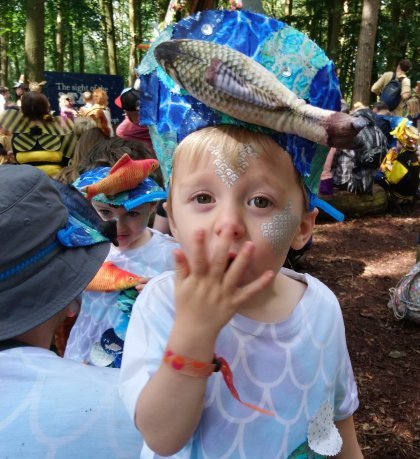
Seeing herds of stags, swarms of bees and some roarsome lions strolling around the aptly named Spellbound Forest, really is truly magical. A sight you’ll honestly never forget, and your photos will look absolutely amazing too!
Feeding the fish
Eli small fry
It was like being part of a real life fairytale and really helped us to see the wonder of the weekend through our childrens eyes. Stanley really got involved and was instantly drawn to other fishy families, we enjoyed a game of Giant Guess Who with some fellow fish team mates and won a golden pebble in a wager! Woo hoo!
The humongous Tribal Scoreboard situated on The Village Green is updated throughout the weekend as golden pebbles are handed in to Tribal leaders and counted.

Keeping Score!
We earned pebbles for our costumes, picking up somebody elses litter when the wind blew it away, for the Guess Who game, and then for ingenious costume repairmanship using duck tape – note to self: need to vastly improve sewing skills! I’m still not sure if there are any hard and fast rules on how to earn pebbles but it’s certainly fun trying.

Meeting our Tribal leader blub blub blub!
Stanley really was rooting for the fish team to win and was cheering us on all weekend, he also got involved in some lighthearted taunting of the other teams too. We came 5th overall, the Foxes bagged 1st place this year! I think it teaches children a great lesson about competition, teamwork, loyalty and doing your best.
Getting Our Groove On
One of the things we all agreed on when we looked at the programme was that we wanted to take in as much live music as possible. We joyfully discovered at Timber Festival that we have two little groovers on our hands.

My little fish swimming at High Seas
The Footlights stage was at High Seas and after a true trek to get there via the mud (it was at it’s worst at this point), a toilet stop, more mud, then skirting around the field with the trolley, and a bit more mud we finally set up our ‘base’. After all that effort it made sense to stay put for a bit and it was a great excuse to enjoy the music, we were also reasonably close to a bar and some yummy food vendors – perfect!
The Baghdaddies’ exuberant and rampant brand of world music is an exhilarating cocktail of Balkan melodies, ska and latin grooves and sizzling brass played with furious energy and theatrical humour, making them as unforgettable on stage as they are when performing as wandering brass troubadours. They take themselves incredibly seriously so you don’t have to…
The Baghdaddies blew us away, they got everybody (including us) up on their feet and dancing! The lyrics are also hilarious, and you cant help but smile. It’s pure feel good music!
We also caught Harry Bird & The Rubber Wellies who again provided a very toe tapping mix of folk inspired sea shanties, Mexican rancheras and reggae. And finally Mr. Tea & The Minions for some gypsy flavoured party music. Not your average playlist eh?

One of the Baghdaddies songs included the line ‘Have a Tequila son’ which Eli took literally!
Oh, and just in case you’re wondering, YES mud does make dancing in a field absolutely 100% more enjoyable if your aged 5 and 2!

We also tried out the silent disco hosted by Our Kids Social in the Flamingo Lounge. My boys weren’t sure at first and found it all a bit odd, but they soon got into the swing of it for a bit of oops upside your head! There was a parents vs kids dance off battle that got very animated – think Dadtastic air guitar moves on one side with some fierce flossing on the other. Great fun!
And finally, it was a bit of a surprise when my cautious 5 year old wanted to try out Circus Swing! So on Sunday we had a lesson in swing dancing that included some neat circus tricks too. I only dropped him on his head once while he did the no hands cartwheel over my legs, so I’m calling that a win!
I love the fact that Stanley was willing to try out new things, James has experienced a silent disco at the ripe old age of 2 and that we all got to listen to some excellent live music.
Singing Along
Watching David Gibb perform in the natural amphitheatre of the Woodland Theatre on with Stanley was my highlight of the weekend. He’s not a big fan of sitting still but the combination of catchy tunes, audience participation and easy to remember lyrics meant that we made it through the entire performance with big smiles on our faces.
We learned all about bats, discovered that we (and the rest of the audience) couldn’t count to five, became roses and showed off our muscles. Stanley also became a huge fan of Teddy at the Disco and has been singing it on repeat ever since. We sat next to our good friends over at Typical Mummy (there’s nothing like sharing a plastic poncho to sit on, to really cement a friendship) and we were all happily singing along together.
It was during this performance that I experienced what I’ll always remember as the Just So spirit, a real sense of camaraderie. The steep incline of the Woodland Theatre plus wet ground made it more than a bit treacherous underfoot. Getting in and out was no easy task and to this purpose I saw children being passed along rows, hands and arms being offered to help steady balance and people sharing seating arrangements to ensure everyone had a great time. There was a real sense of we’re in this togetherness, the mud was not going to stop anyone having fun!

I’m happy to say we now have David’s new album Rolling down the Road (released 23rd August) winging it’s way to us (order yours here) and also Climb that Tree for our Teddy at the Disco fix – my car journeys are never going to be the same again!
Slowing Down
In a way the conditions did us a favour, it made us really think about what we wanted to see and do. Most of Saturday was spent in and around High Seas and the nearby Roll Up Roll Up simply due to logistics, we took in the music as I’ve previously mentioned but we also watched Clown about Town which thoroughly entertained the boys and only mildly terrified me (she was absolutely lovely but I’m not a fan of clowns!)
A clown on the run, wanted for a crime she didn’t commit. In trying to prove her innocence, she finds that the silver lining is daring to be yourself in a world that’s trying to make you like everyone else. A joyous celebration of what it is to be human with slap-stick comedy, puppets and silly dancing!
Even I admit that the overly theatrical blood scenes (not as bad as it sounds, honest!) were really funny! This then inspired Daddy and the boys to wade over to the big top to try their hand at some circus skills while I stayed with a snoozing Eli.
Again, after watching David Gibb in the Woodland Theatre we ambled to The Spellbound Forest via the Corn Shack and settled in to watch our old favourites at Campfire Stories. I’d been eyeing up the huge corn cobs all weekend and me and Stan treated ourselves on Sunday – they were absolutely delicious!

We love Ian Douglas and have been lucky enough to sit and listen to his stories at several different events so he was an easy and relaxing watch while we nibbled away.
Then it was onto our crazy haired friend Professor Pumpy-Knickers Pumpernickel who we first encountered at Timber Festival. Once again he was thoroughly entertaining, and made the forest come alive with explosive science!
Embracing the Eccentricity
Just So proved to be just as bonkers as we were expecting – we’ve experienced nothing else like it! One thing we definitely wanted to catch was the lantern parade on Saturday evening. We didn’t make a lantern at the workshop as we’d heard that it gets very busy but we were armed with our Jelly fish umbrellas which lit up and looked the part.
Well, it’s hard to describe the spectacle that was the lantern parade, there was a clog wearing lady singing and dancing with some enormous Ghost Caribou. Then, the Baghdaddies arrived, the Caribou suddenly lit up and off we went, following the craziness towards Footlights!
Over the weekend we also bumped into the Dream Antelopes, Boudicca in her chariot (the moving puppet/sculpture horse was AMAZING) and got soaked as water pistol wielding passengers sped past in Vesaqua, shooting at us as they went. What’s Vesaqua? It’s a bathtub on wheels attached to a 1966 Vespa of course!

Vesaqua
Anything We Would Change?
The weather played such a huge part this year that I’m not sure what a ‘normal’ Just So looks and feels like. I would have liked a few more seating areas – we took chairs luckily, but pulling them around in the trolley was really hard work because of the ground conditions. I’m assuming that there are usually more hay bales dotted about to perch on but again due to the weather these were probably repurposed as ground cover on the worst affected areas.
The golden pebbles – are still a complete mystery to us! I don’t know who can give them out, or what they can be earned for! Having said that I’m not sure if a full explanation of this via the programme or a information board would take the magic away? It felt like a secret that you had to learn about from fellow more experienced Just So’ers…but maybe that’s the point, to get people talking and build a community of seasoned Just So families? I will say this – once you’ve earned one it quickly becomes a quest to get more, it’s so addictive!
And Finally…
There you have it, if you want to let go of the stresses of everyday life then this is the festival for you. You can completely immerse yourself in a bubble of make believe for an entire weekend. Got kids? Then it’s a super family friendly festival (mud aside), it has everything to entertain little ones and baby changing, bathing and quiet areas too. We can’t wait for next year!

Earlybird tickets for Just So Festival 2020 (21/22/23 August 2020) will be available from TODAY (Friday 30th August). Visit the Just So Festival website to grab yours.
We would like to extend our heartfelt thanks to all the team at Wild Rumpus, the volunteers and site staff who when faced with almost biblical conditions on Friday went the extra mile to ensure people got on and off the site safely and pushed cars out of the mud, all with a smile on their faces.

Disclosure: we were invited to attend Just So Festival by Wild Rumpus as part of their Press Team. Our weekend tickets were gifted in exchange for a review of our experience and promotion across my social media channels. All opinions are my own. All images and media are my own.
Five Go to Just So! 2019 Festival Review #Press Trip Just So 2019 will go down in history, maybe because it was the 10th birthday of the now well established festival, but mainly because it was the year of…
#10 years#10th Birthday#carrotproductions#Family Festival#Just So Festival#Kids Festival#Press Trip#Wild Rumpus#Family of five#festival review#festivals for kids#Five Go!
0 notes
Text
LUCY MAKES CURTIS BYTE THE DUST
S1;E6 ~ November 1, 1986

[Photos © Getty Images]
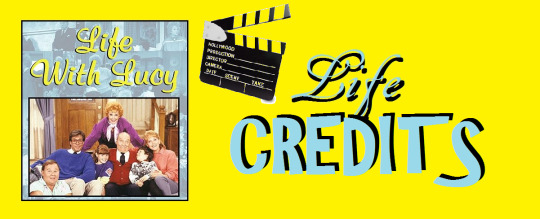
Directed by Marc Daniels ~ Written by Bob Fisher and Arthur Marx
Synopsis
Lucy's attempt to computerize M&B Hardware results in a a shop full of lawnmowers and with Curtis listed in the obituary column.
Regular Cast
Lucille Ball (Lucy Barker), Gale Gordon (Curtis McGibbon), Ann Dusenberry (Margo Barker McGibbon), Larry Anderson (Ted McGibbon), Jenny Lewis (Becky McGibbon), Philip Amelio (Kevin McGibbon), Donovan Scott (Leonard Stoner)
[For biographies of the Regular Cast, see “One Good Grandparent Deserves Another” (S1;E1)]
Guest Cast

Dave Madden (Stanley Bigelow) is probably best remembered for playing Reuben Kincaid, the manager of “The Partridge Family” (1970-74). He was a regular performer on “Rowan and Martin's Laugh-In,” which (for some seasons) was programmed opposite “Here's Lucy.” Madden died in 2014 at age 82.
Stanley is a sales representative selling lawnmowers. His last name is only listed in the final credits but is not spoken aloud in the episodes.
Billy Van Zandt (Delivery Guy) is an actor and writer of more than 25 plays with Jane Millmore. A native of Red Bank, New Jersey, he is married to Adrienne Barbeau. In 1990, Van Zandt won an Emmy Award for “I Love Lucy: The First Show,” which introduced the long-lost pilot to TV viewers.

This was the eighth episode filmed, but it was aired sixth. “Life With Lucy” loses its time slot with an 8 share, the lowest to date and the second lowest of all those aired.

When Lucy activates the leaf blower and scatters seed packets all over the Hardware Store, Curtis says “We were hit by Hurricane Lucy.” In 1957's “Building a Bar-B-Q” (ILL S6;E24), Ricky says that he thinks the re-built monstrosity of a brick barbecue was caused by Hurricane Lucy.
Curtis: “You know me, always keeping up with the times.” Lucy: “Yeah, he's almost up to 1956.”
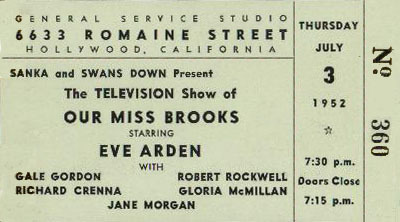

In 1956, Gale Gordon had finished playing Osgood Conklin on “Our Miss Brooks” and started a playing Harvey Box in “The Brothers” (aka “The Box Brothers”), a Desilu series that lasted just one season on CBS. Lucille Ball began 1956 with “I Love Lucy” touring Europe and ended it with the Ricardos and Mertzes visiting Cuba.

Bigelow (Stanley’s credited surname) was the name of a Department Store in Jamestown, New York, Lucille Ball's hometown that it is said rejected a teenage Ball when she applied for a job in their ribbon department! One of Lucille Ball's distant relatives was also named Bigelow. In the 1950s Lucy and Desi promoted Bigelow carpeting. She used the name Bigelow on both “I Love Lucy” and “The Lucy Show” (above).
Stanley: [To Curtis] “We've been through a lot together. From the pot-bellied stove to the microwave. Then back to the pot belly.” [Pats Curtis's belly]

When Curtis compares the extinction of wild animals to the human race being replaced by computers, Lucy says he's been watching too much “Wild Kingdom.” “Mutual of Omaha's Wild Kingdom” was an educational series about the lives of wild animals that aired on NBC from 1963 to 1988. Until 1984 it was hosted by zoologist Marlin Perkins.
Lucy: “Change is hard on everybody.”
In the episode, Lucy attaches file cards to the computer using magnets, which wipes out the inventory data. In reality, refrigerator magnets placed on the computer would not be strong enough to have caused any harm.
Curtis: [To Leonard, furious] “You gave our trash to the trash man?!?”

Using the computer, Lucy orders a lawnmower. She accidentally presses the ‘1′ key three times and orders 111 lawnmowers for a cost of $4,192.67! This means the push lawnmowers were wholesale priced at $37.77. Adjusting for inflation, that would be nearly $90 today.
Curtis: [To Lucy] “I'm dead!” Lucy: “You're not dead, you're just not a lot of fun.”
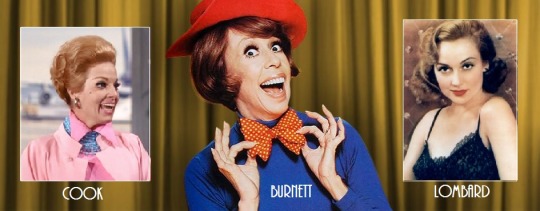
To straighten out Curtis's obituary, Lucy calls her friend at the newspaper, Carol. The name may be an homage to any or all of Lucille Ball's friends Carol Burnett, Carole Lombard, or Carole Cook. The unseen Carol tells Lucy she learned of Curtis's passing from the bank. Lucy used the computer to stop the check to Chadwick Mowers with the phrase “CM decreased” but types “CM deceased.” The bank interprets CM as Curtis McGibbon. [Only on television, folks!]

Lucy returns the computer, but buys a Robot named Rupert! In 1928, British schoolboys built a robot named Rupert which contained mechanical representations of human organs!
Curtis: [To Lucy] “Listen to me!” Lucy: “I don't have to, you're dead!”
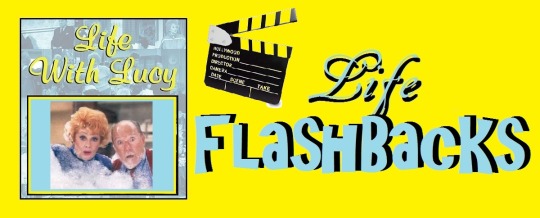

On “The Lucy Show,” Mr. Mooney (Gale Gordon) installed a computer at the bank in “Lucy, the Superwoman” (TLS S4;E26)…

and again in “Lucy and Bob Crane” (TLS S4;E22). Both aired in 1966!

On a 1972 “Here's Lucy” Harry Carter (Gale Gordon) installed a giant computer named EXMO III in the office as “Lucy's Replacement” (HL S4;E19).
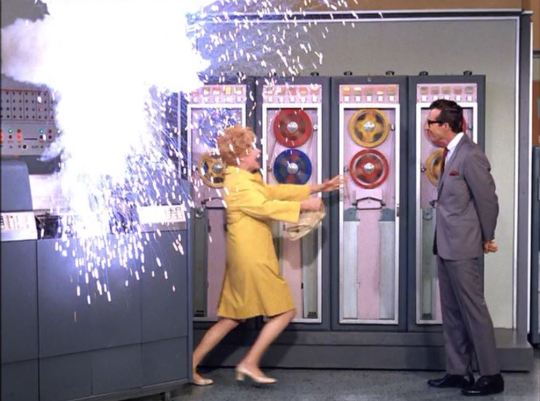
Prior to that Lucy Carter tried her hand at computer dating in 1968′s “Lucy the Matchmaker” (HL S1;E12). The comic payoff of most episodes featuring computers was having them short-circuit and run amok!

Lucy Carmichael encountered robots played by mime Larry Dean in “Lucy and the Ceramic Cat” (TLS S3;E16)...

and again in “Lucy and the Robot” (TLS S4;E23).
This Day in Lucy History ~ November 1st
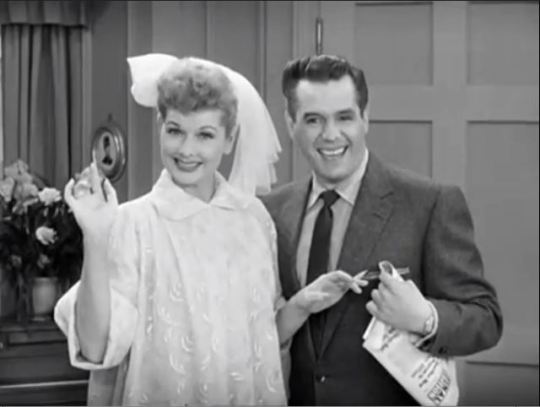
"Mr. and Mrs. TV Show" (ILL S4;E5) – *November 1, 1954
* This episode's original broadcast was pre-empted. It eventually aired Monday, April 11, 1955.

“Lucy Helps Danny Thomas” (TLS S4;E7) – November 1, 1965
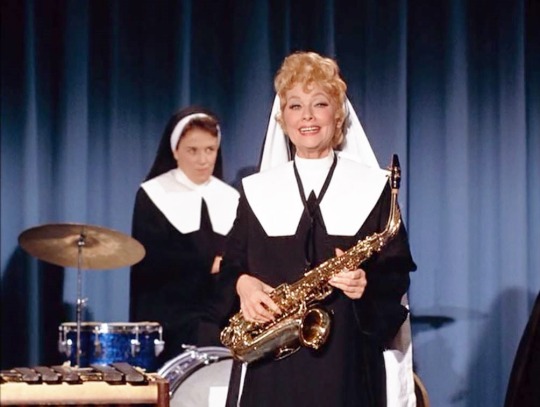
"Lucy and Her All-Nun Band" (HL S4;E8) – November 1, 1971
#Life With Lucy#Lucille Ball#Gale Gordon#Ann Dusenberry#Larry Anderson#Philip Amelio#Jenny Lewis#Donovan Scott#Dave Madden#Billy Van Zandt#Robot#Computer#Lawn Mower#Marc Daniels#Bob Fisher#Arthur Marx#1956#Bigelow#Mutual of Omaha's Wild Kingdom#Wild Kingdom#Carol Burnett#Carole Lombard#Carole Cook#1986#tv#ABC#November 1 1986
2 notes
·
View notes
Text
Remembrance hump of Garrincha published in The Blizzard
Bird of Passage
A personal quest into the life-story of Garrincha, Brazil’s unrefined legend
By Andrew Lees
1st June 2017
Money talks but it don't sing and dance, and it don't walk
Neil Diamond
Under an unremarkable sky there were four of us out on the backstreet making our rings fly. I thrust my ring away then pulled it in, creating ellipses in the summer air. If it dared to slip I coaxed it back up, bending my knees and bracing my shoulders as I tried to circle the sun. Jill Clapham and Karen Pullen were streets ahead, looping their hoops in a swaying 2/4 rhythm and creating double flirts with their ductile hips. That morning as the larks rose into the sky above Little Switzerland I twirled my first ton.
At two o’clock we all ran in to watch Sweden play Brazil. My father was already crouched in front of our Bush console. I sat beside him on the hearthrug and my mother brought in a jug of Kia-Ora orange squash. On the other side of the bulbous screen a thickset man in a raincoat was triumphantly brandishing a large Swedish flag. The magic mirror then moved its focus to show the opposing teams jogging up and down uncomfortably in the silent rain. At last the referee blew his whistle and the final was afoot. A quarter of an hour into the game the commentator informed us that the effervescent Brazilian fans were singing, “Samba, Samba” even though they were losing 1-0. Garrincha, their right-winger attacked from the fringes. Twice in succession in the first half, he beat three players and his inch-perfect goalmouth crosses resulted in Vavá goals. As the game went on my eyes were drawn more and more to this hunched man who never passed the ball. On 29 June 1958 I was transported to a field of dreams somewhere on another planet.
That winter I gave up hula-hooping and started to kick a rubber ball against our coal house door. I learned to keep the pill on the ground, tame its wicked bounce and make it run. I gained a rhythm that allowed me to twist and dart past imaginary opponents. I found that with the slightest of taps from my left foot I was able to alter the ball’s speed and trajectory. I kept my feet apart, flexed my body and imagined I was Garrincha. My ball slept with me under the sheets as I listened to Bobby Vee on my portable radio.
I set unregistered record after record with that small rubber ball and became a star of the school playground. It was also the last time the skylarks darted out of the turf and diminished to dark specks in the porcelain sky, the last time they would sing their hearts out, momentarily disembodied as they summoned the sun.
It was now 1959 and I had started to go to football matches with my father. I loved the communal walk to the ground, the baying wit of the tribe and the surging swell of bodies tumbling down the terraces. But what I watched on the pitch was a war in which tough men battled it out for a paltry win bonus. The game was prosaic, forbidding and merciless and bore no resemblance to the fluidity of the Brazilian champions.
In the summer of 1966 I got to watch Brazil play for a second time. Garrincha emerged from the Goodison Park tunnel wearing the number 16 shirt. His unstoppable swerving banana kick that had hit the top right hand corner of the Park End net three days earlier had led me to anticipate a repeat performance of the mesmeric sequence of steps I had watched as an 11 year old with my father. After the band had played the national anthems Brazil’s bandy-legged outside-right ambled over to position himself next to two policemen patrolling the far touchline.
Under the floodlights and with the Liverpool crowd’s chants of “Hungary, Hungary” and “ee ay adio ” echoing in their ears Flórián Albert and Ferenc Bene set about putting the ageing world champions to the sword with fast incisive counter-attacks. Just before half-time Kenneth Wolstenholme, the BBC sportscaster, lamented, “Ah, Garrincha seems to have gone now. He has lost all the feistiness and fire and that devastating burst of speed.”
In the second half I noticed that Garrincha sometimes came inside looking for help and on the rare occasions when he tried to get round the outside of the Hungarian defence he was easily cut off and forced to pass. At the final whistle a delirium of appreciation burst forth, as toilet rolls rained onto the pitch. A stray balloon blew up from the Gwladys Street terrace, drifting forlornly in the direction of Stanley Park.
It is 2006 and I am sitting in the Bar Vesuvio in the old cocoa port of Ilhéus watching Botafogo play Vasco da Gama. The ball rarely leaves the ground and always seems to be angled perfectly through the narrowest of channels. Periodically it shoots out to the flanks and is then rifled back across the box. In this game corners and throw-ins are irrelevant. The ball dips and bends as it fires towards goal. Then out of the blue a Botafogo player goes round his opponent on the outside and I blurt out the words, “Alma de Garrincha.” An old man sitting beside me smiled kindly and said, “Garrincha jogou futebol do mesmo modo que viveu sua vida, divertindo-se e irresponsalvelmente!” [Garrincha played football the same way he lived his life, pleasing himself and running wild!]
Back in England football was now an acceptable topic of conversation in the hospital canteen. In fact there were many similarities between the modus operandi of university teaching hospitals and Premier League football clubs. One Tuesday lunchtime after rounds I explained that ‘Garrincha’ was a drab little Brazilian bird with a buzzing flight and a bubbly song that could not survive in a cage. Nobody had heard of Garrincha.
I then got out my laptop and showed them extracts from the 1963 Cinema Novo film Alegria do Povo [The Happiness of the People]. The film begins with black and white photographs of Garrincha to a soundtrack of samba. I fast-forwarded so they could see the Lone Star of Botafogo mesmerising his opponents in the Maracanã stadium.
One of the house officers, a Manchester United supporter reflected, “He plays a bit like George Best.” I replied caustically that Garrincha was Best, Stanley Matthews and John Barnes and a snake charmer rolled into one. “What’s more you don’t need slow motion/3D/surround sound from 23 angles to prove he has more tricks than Messi and more grace than Ronaldo.” I knew that my fuzzy evidence had not convinced them. They smiled benignly but knew their chief was basking in the emotional overglow of an unhealthy reminiscence bump.
Undeterred I continued to watch web compilations of the Little Bird’s sillage, much of which had been posthumously embellished by music. To Moacyr Franco’s song Balada no.7 (Mané Garrincha) I watch him double back before arrowing away to the right. A magnet seemed to be always attracting him to the margin of the pitch. His style was casual, irreverent and highly improbable but never disrespectful. He tormented and teased but never mocked. He was wordless and indefinable. For Garrincha, football was no more than a series of duels against instantly forgettable defenders and foreplay was far more enjoyable than scoring. The more joyous he made the crowd, the sterner became his facial expression. He was football’s Buster Keaton cracking jokes with his bandy legs and dancing to the gaps in the music. In one game playing for Botafogo he was even admonished by the official for flirtatious play. He was a one-man carnival who could turn life upside down with his antics. ‘Seu Mané’ expunged the prison of cause and effect from the game of football.
By the second half of the 19th century Lancashire cotton goods had become almost worthless in Brazil. Even the turbines coming in on the Liverpool boats from Manchester were in far less demand. As a consequence the 1000 or so English expatriates began to invest more in local textile production. John Sherrington, a man who had strong commercial links with Manchester, purchased a stretch of verdant land that nestled below the forested Serra dos Órgãos in the centre of the sate of Rio de Janeiro. Here in 1878 in the grounds of the old fazenda he and his two Brazilian partners constructed a textile mill. The project got off to an ill-omened start when the ancient tree said to have been more than 50m tall and with a trunk circumference greater than 30 human arm spans came down during the construction of a road, but within a few years the factory was functional, converting natural fibres into yarn and then fabric.
The municipality of Pau Grande in the district of Vila Inhomirim 50km outside Rio de Janeiro already had a small railway line. It had been constructed by the English engineer William Bragge in 1853 and connected Raiz da Serra and the Imperial City of Petrópolis with the wharf in the small port of Mauá at the mouth of the Rio Inhomirim. This railway provided a reliable form of transport from the mill to the coast.
The Francisco dos Santos family were descendants of the Fulni-ô Indians, who after being ousted from their coastal homeland by the Portuguese had settled in Águas Belas, a municipality close to the Rio Ipanema. Although they had finally been hounded down near Quebrangulo and forced to take the surname of their oppressor these ‘people of the river and stones’ refused to bow to outside discipline. As their traditional lifestyle was eroded some of their number assimilated with renegade black slaves in the quilombo hideouts of the Brazilian outback.
Manuel Francisco dos Santos was the first to travel the 2000km from the tribal homelands to the boomtown dominated by the mill owned by the América Fabril company. Although the landscape bore similarities with the countryside on the borders of the states of Alagoas and Pernambuco from where he had travelled, Pau Grande itself more closely resembled Delph or Saddleworth on the Pennine ridge.
The several hundred labourers had come from all over Brazil but the mill managers were exclusively English. In return for the privileges of secure employment and accommodation the predominantly illiterate mill workers were obliged to comply with the strict discipline and moral code of the British Empire. Mr Hall, the manager, would sometimes deal with misdemeanours that had occurred outside the factory by administering a caning to the miscreant. Mr Smith, the director, emphasised the virtues of hard work and self discipline and encouraged football on the premise of ‘healthy body, healthy mind’.
On 28 October 1933 Manuel’s brother Amaro dos Santos, who worked at América Fabril as a security guard, became a father for the fifth time. The midwife was the first to notice that the baby boy’s left leg bent out and the right turned in. Manuel Francisco dos Santos had to grow up fast and his love of trapping and caging birds led his older sister Rosa to nickname him Garrincha. In his school reports he was described as quiet but mischievous and impulsive and his teachers considered him uneducable. For the young Mané by far the best thing about Pau Grande was a secluded potholed stretch of grass 60m by 40m high on a bluff that overlooked the factory. There were days when he would return two or three times for peladas [kickabouts]. Barefooted and dressed only in shorts Garrincha and a couple of mates would regularly thrash older opponents. His hunting spear was the ball and his prey lay nestled in the back of the net guarded by a goalkeeper. When he was not running with the ball he would be fishing or hunting with his friends Pincel and Swing, two brothers from the neighbouring Raiz de Serra.
His first job, at 14, was in the cotton room of the mill with its blistering heat, lung-damaging dust and deafening machines. The air had to be kept hot and humid in this the most unpleasant working environment of the factory to prevent the thread from breaking. He was always going absent, often to drink cachaça in a local bar or have sex with the mill girls at the back of the small football stadium belonging to SC Pau Grande, which had been founded in 1908 by workers from the factory. His employers soon gave up any hope of getting a decent day’s work out of him and it was only his footballing deftness that saved him from the sack. With Garrincha in SC Pau Grande’s side the factory team went two years without a defeat.
The coach likened Garrincha to Saci, the pipe-smoking mulatto imp whose spellbinding one-legged footwork created whirlwinds of chaos wherever he went. It was impossible to outrun Saci, who could make himself disappear at will. Sometimes he would transform into Matita Pereira, an elusive bird whose melancholic song seemed to come from nowhere. The only way to placate this legendary trickster was to leave him a bottle of cachaça.
Eventually Garrincha’s dazzling dribbles came to the attention of scouts from Rio de Janeiro and he was offered trials for the big clubs. He arrived at Vasco da Gama’s São Januário ground without boots, turned up late for a trial with São Cristóvão and when asked to stay overnight by Fluminense feared for his job and returned on the last train home. His insouciance counted heavily against him. Eventually a supporter and scout from Botafogo, a modest football and regatta club, but one that had a strong journalistic and intellectual following, dragged SC Pau Grande’s number 7 back to the capital.
On clapping eyes on Garrincha, the Botafogo coach Gentil Cardoso is said to have muttered, “Now they’re bringing cripples to me.” He then asked the young bumpkin, “How do you play, son?” to which Garrincha replied, “With boots!” After watching him kick a ball around Cardoso had seen enough to throw Garrincha into the first-team squad’s practice match. After the game the Brazil left-back Nílton Santos, who had been nutmegged for the first time in his career by the upstart, is said to have told Cardoso that the boy was a monster and should be signed on the spot if only to prevent him being snapped up by one of their rivals. The Rio press enthusiastically heralded Garrincha’s signing as a professional footballer in 1953. Their only criticism was “the boy dribbles too much.”
In Sweden in 1958, Garrincha was the best in the world in his position. Four years later in Chile he was the finest player in the world. After he had been officially announced as the player of the tournament, the poet Vinicius de Moraes composed the sonnet 'O Anjo das Pernas Tortas' [The Angel with Twisted Legs]:
'Didi passes and Garrincha advances
Observing intently the leather glued to his foot
He dribbles once, then again, then rests
Measuring the moment to attack
Then by second nature he launches forward
Faster than the speed of thought.'
In his June 1962 article “O Escrete de Loucos” [The Squad of Madmen] published in Fatos & Fotos, Nelson Rodrigues, the great Brazilian cronista reported that the European squads had been working on strategies to stop Garrincha but had not taken into account that the Brazilian team was a phenomenon made up of pranksters who played the game from the soul. In the last minutes of the final against Czechoslovakia, Garrincha had turned the opposition to stone. One defender even put his hands on his hips in total capitulation. Regarding the earlier 3-1 victory against England in the quarter-final, Rodrigues wrote, “The Englishman plays football whereas the Brazilian lives and suffers every move.”
Garrincha fathered fourteen children by five different women. One of them, Ulf, was born after the 1958 World Cup final and grew up in Sweden1. Garrincha had a lengthy and tempestuous relationship with the samba diva Elza Soares. He drank heavily and was responsible for the death of his mother-in-law in a car accident where he was drunk behind the wheel. When he finally hung up his boots, after a brief comeback with the small Rio club Olaria in 1972, he faded into oblivion. One of his last public appearances was at the carnival in Rio de Janeiro. The shots of his hunched bloated figure sitting alone on the front of the Mangueira samba school float saddened the nation.
Following Garrincha’s death from the complications of alcoholism on 20 January 1983, Hamilton Pereira da Silva, a poet and a politician from Tocantins, composed Requiem for an Angel:
They stood in the cortege
And offered him wings
Multicoloured wings
Vermilion, white
Chocolate
Grey
Hang gliding on the wing
For you who lived as an angel for so many years
These wings would have been meaningless
Before the eyes of the people
In the magical glow
Of those Sunday afternoons…
Two days after the announcement of Garrincha’s death, the poet Carlos Drummond de Andrade published an article entitled “Mané and the Dream” in the Jornal do Brasil in which he declared that football had become a panacea for Brazil’s sickness. Garrincha had been a reluctant hero who had temporarily banished the nation’s inferiority complex and inspired the have-nots to greater things, He pleaded for another Garrincha to rekindle the nation’s dreams: “The god that rules football is sardonic and insincere. Garrincha was one of his envoys, delegated to make a mockery of everything and everyone in his stadiums. The god of football is also cruel because he concealed from Garrincha the faculty to realise his mission as a divine agent.”
In his imagined chronicle Diario do Tarde Paulo Mendes Campos wrote that the rules of Association Football did not apply when Garrincha was on the pitch. The pushes, trips and shoves against him went unpunished and it was only when the embarrassed defender fearful of ridicule by the crowd pulled at his shirt that the complicit referee would be reluctantly forced to award a foul.
Despite these chansons de geste by Brazil’s greatest living writers and poets, the truth of the matter was that Seu Mané’s trickery defied literary description. Football was not an art. Garrincha had held a mirror up to the nation.
His body was taken from the clinic in Botafogo to the Maracanã stadium. Nílton Santos insisted that his teammate be buried in Pau Grande and not in the new mausoleum for professional footballers in the Jardim da Saudade. Traffic came to a halt on the Avenida Brasil as the cortège passed by with mourners crowding the sides of the road and others throwing flowers from the overhead bridges. “Garrincha you made the world smile and now you make it cry” had been daubed on a tree. As the mayhem of cars finally approached Pau Grande the bottleneck became so great that people were forced to abandon their vehicles and walk to the little church.
Seu Mané had played the game for its own sake. His fancy footwork, element of surprise and capacity for improvisation had nourished the nation’s soul. A memorial stone was placed in the cemetery. Its inscription read, “He was a sweet child. He spoke with the birds.” Tostão, his teammate, would write on the 20th anniversary of Mané’s death, “Garrincha was much more than a dribbler, a ballet dancer and a showman, he was a star.”
My sentimental quest begins at the Botafogo Sports and Regatta Club on Avenida Venceslau Brás. It’s now used mainly by the young socios (members) to play volleyball and basketball. A picture of Nílton Santos in the entrance reminds the club of its glory years. His black and white striped shirt with its lone star hangs in a display case next to the trophy cabinet.
When Garrincha played for Botafogo de Futebol e Regatas it was a deeply superstitious club. The day before the game a mass communion with eggnog, milk and biscuits would took place and on match day the club’s silk curtains were tied up to symbolise the ensnarement of the opponents’ legs. An hour before the game each player was compelled to take a mud bath and eat three apples. An ex-Fluminense player had to be included in every team. Before each game a stray mongrel called Biriba would piss on the leg of a player. When things were going badly for the team the Botafogo president would release the little dog from the stand to run onto the pitch and distract the opposition. Biriba became so important at the club that he was included in one of Botafogo’s championship winning team photographs.
I set off past the Aterro do Flamengo with its fenced playgrounds full of youths playing football, I look over at the Marina da Glória with the mist-topped Sugar Loaf in the background, heading for Praça Quinze where the boats come in from Niterói. Out in the bay the Ilha das Cobras is surrounded by frigates. I drive fast on the Linha Vermelha heading north in the direction of Galeão. To my left is the vast sprawl of the Complexo do Alemão favela, the Instituto Oswaldo Cruz and the toy-town church of Nossa Senhora da Penha perched on its sacred mount. I reach the artificial brine lake designed to deter the favelados from hanging around the beaches of the Zona Sur and then drive north towards the Federal University Hospital block where I had lectured the day before. A nauseating smell of sewage fills the air. I head north-east through the teeming run-down districts of Baixada Fluminense, which are full of old trucks, new schools and stray dogs.
In Casa-Grande & Senzala [The Master and the Slaves], Gilberto Freyre uses the term bagaceira – the shed where the dry pulpy residue left after the extraction of sugar is stored – as a metonym for the exploitative plantation culture. Freyre wrote that “Brazil is sugar and sugar is the Black” and both were linked in the collective unconscious with sensuality and sexuality. Bagaceira was later used to refer generically to marginalised riff-raff. Football had provided Garrincha with an escape route from enslavement but when all the fibre had been squeezed out of him cachaça left him as bagaceira.
The municipality of Magé with its farming communities guarded by the Dedo de Deus mountain marks the official leaving of Rio de Janeiro. We turn right along a bumpy narrow road filled with buses and motorcyclists, cross the single lane railway track, go past a man on a horse and open roadside kiosks selling tyres. The people seem gentler and more approachable than in Grande Rio. At a birosca that sells buns and cachaça I stop to ask the way to Pau Grande. Chortling, the bar owner points to his groin and says, “Aqui está.” “Pau grande”, I later learned, was slang in Brazilian Portuguese for “big cock”.
After another 15 minutes drive the Estadio Mané Garrincha, the home of SC Pau Grande, comes into view, its rustic white walls and small arched entrance resemble an Andalusian village bullring. The grass is lush and samba drifts from the television in the clubhouse. The president, plump, with a Zapata moustache and dressed only in fading khaki shorts, greets me effusively. In one corner of the clubhouse are three cases of memorabilia, one filled with small trophies, the other two with crumpled newspaper cuttings and posters defining the ascent of the Little Bird. One of the pictures shows an 11-year-old Garrincha sticking out in a team of men and another his father Amaro, looking down affectionately on his young son from a small wooden veranda. In some of the group photographs there are boys who resembled my own teammates from school, pale solemn faces, straight brown hair and small chins.
The president tells me that Garrincha used to love to return to Pau Grande for a pelada with his old friends after playing at the Maracanã. Over a glass of cachaça he tells me the club are hoping to raise money to create a small museum. He also reminds me that the black and white striped SC Pau Grande strip is identical to that of Botafogo except for the star. I offer him money to buy a ball, but he refuses and we settle for just another photograph. I then walk down the cobbled road to the centre of the village where a small bust of Garrincha greets the few visitors. To its right are a series of murals illustrating how Pau Grande used to look in its prime.
América Fabril closed in 1971 and its buildings now operate as a distribution centre for mineral water but the Neo-Gothic grey and white Capela de Sant’Ana that had been overwhelmed by Botafogo supporters at Garrincha’s funeral is unchanged. A car blasting out propaganda for Sandra Garrincha, a candidate in the Magé prefectural elections, drives by, followed by a group of young girls waving flags in support of her campaign.
I ask one of the security guards at the gate of the old factory if I can have a look around. The factory looks much the same as it did in the days when it produced cloth. The chimneystack is still standing but there are now vast empty spaces giving parts of it the appearance of a vacant exhibition space. In some of the rooms machines rumble away bottling water from the mountain springs. I thank my guide and walk back into the village in the direction of the lemon bungalow which the Brazilian football federation had bought Garrincha for his part in the World Cup victory in Chile in 1962. Two of Garrincha’s friendly grandnieces are standing on the veranda talking to a young man astride his bicycle. Grilles guard the windows of the house even though I am told there is still next to no crime in Pau Grande. There is a mural of Garrincha’s head in his playing days at the front door and on the wall of the house looking onto the street is written the legendary number 7 he carried on his back and the words “jogando certo com as pernas tortas” [playing straight with twisted legs]. One of the girls invites me to enter a small shrine at the side of the house. Among the photographs and medallions is a framed tribute fastened on one of the walls:
'Garrinchando
'Garrincha pretends that he despises the ball, but she knew he would always come back to pick her up.
The dribble was his courtship.
Garrincha, you passed through life, overcoming all obstacles that were put before you. But in the end that relentless adversary Death defeated your dribble.
From that moment on the ball and the football universe became orphans of the most blessed contorted legs football has ever known.'
Pau Grande is still full of gente boa. Doors do not need to be locked at night. Round the corner from Garrincha’s old house an elderly man tells me that the former mill town is still full of Garrincha’s ancestors. He then leads me up a path behind the houses that reminds me of the Brackenwood edgeland of my childhood, full of weeds, plastic bottles and butterflies. After a short walk up a steep incline we reach an empty white outhouse with two palomino horses tied up outside. 20 metres below the high bank is a clearing strewn with twigs and leaves. At either end are goal posts without nets. I climb down and start to run close to the right edge where patches of grass grow sheltered by overhanging trees. I pause. I then sidestep to the right and accelerate. I twist round with my back to the goal, shimmy and shoot. I feel free. When I can fly no more I sit on a bench behind the far goalposts. Once I have gained my breath I rise and walk to the edge of the ridge and look down on the mill, the little chapel and the orderly rows of houses.
An hour later I drive on up to the cemetery at Raiz da Serra. As I am parking the car, a skeletal drunk in shorts, sandals and a fading orange shirt staggers out of the Encontro dos Amigos bar offering to guide me to Garrincha’s grave. He tells me that the previous Friday three Vasco da Gama players had made the pilgrimage from Rio to pray for inspiration before their game against Flamengo. Tucked away in the middle of a row of closely packed tombstones I am shown a faded inscription, which says “Here lies the man who was the happiness of the people Mané Garrincha.” On the worn headstone his date of death is recorded incorrectly as 20 January 1985. There are no flowers or graffiti. A singer and friend Agnaldo Timóteo had paid for the funeral, the tombstone had been paid for by his captain Nílton Santos and a local family called Rogonisky had allowed Garrincha’s remains to be buried in the same grave as their 10-year-old son who had been killed in a road traffic accident.
I then climb up to look at the newer but equally stark and neglected obelisk. Written on a memorial tablet are the words:
'Garrincha
The Happiness of Pau Grande
The Happiness of Magé
The Happiness of Brazil
The Happiness of the World.'
As I sit in silence in this deserted cemetery I think that it could only have been my great-grandfathers’ deep loyalty to street, neighbourhood and even mill that prevented them packing their bags during the slump. It was in towns like Oldham that association football first changed from a game played by gentlemen into a profitable attractive Saturday afternoon spectator sport. As I sit by Garrincha’s grave I see their familiar faces under their flat caps, their trunks bent over by the damp and onerous labour, hurrying past the smokestacks and rows of terraced houses to Boundary Park. The Latics were yet another stabilising devotion that stopped them sailing down to Rio on a Lamport and Holt steamer.
Football has been hijacked by television money and sponsorship deals. It was now much more of a spectacle but had fewer magic moments. Running fast with the ball glued to your toes was high risk and was decried by millionaire coaches. Wingers like Garrincha (outside rights and lefts) had been replaced by a new breed of wing-backs that could attack and defend. Power and victory were what counted these days.
A small brown wren-like bird with a large cocked-up tail, sharp beak and shiny black cap flits under a neighbouring headstone and interrupts my litany of regrets. Dusk is falling and with a heavy heart I leave through the dark forests on the steep ascent to Petrópolis. I am now certain that when I have started to dribble my lines, when I can no longer remember my date of birth or the names of my children the alchemist will still be around beckoning me to come and join him for a pedala in the clearing above the cotton mill.
1 note
·
View note
Text
Jerry Lewis, Comedy Legend, Dead at 91
The French are typically proper about wine, cheese and pastry. They have additionally all the time been proper about Jerry Lewis, who died Sunday at age 91, his publicist confirmed to the Associated Press
Lewis might be greatest recognized to folks beneath 70 as a movie actor: He was the star, in addition to the writer-director, of images like The Nutty Professor (1963), a potty work of genius during which he performed the twin roles of a nerdy scientist and his alter-ego, Buddy Love, a suave, impolite Ratpack-style lothario. In 1982 he appeared, reverse Robert De Niro, as kidnapped comedy kingpin Jerry Langford in Martin Scorsese’s King of Comedy. Lewis’s MDA Labor Day Telethon, which he hosted to boost cash for the Muscular Dystrophy Association, was nearly unavoidable late-summer-holiday tv from 1966 to 2010. More lately, Lewis continued to carry out stay, promoting out reveals even at age 90.
Related

And most individuals know that, as a part of his lengthy profession as a writer-director in addition to an actor, Lewis directed and starred in an ill-advised movie in 1972 known as The Day the Clown Cried, a few clown who accompanied kids to the gasoline chambers in Nazi focus camps. The movie has by no means been proven, on Lewis’ orders, however its identify alone has all the time served as a helpful punch line for anybody who needed to chop Lewis right down to dimension. But perhaps we must be considering of that unseen movie as the head of risk-taking in a performer who was all the time prepared to take possibilities, usually bodily harmful ones. The pratfalls and foolish walks that Lewis devised to thrill us, 12 months after 12 months and film after film, resulted in again accidents—to not point out habit to painkillers—that primarily led to lifelong ache. Being humorous hurts.
But you’d by no means realize it to observe Lewis, within the films he made each with and with out his well-known accomplice, Dean Martin. Although Lewis’ comedy has come to be higher appreciated lately, for many years individuals who had been clearly lacking the purpose thought-about it too broad, too brassy, too filled with facial mugging. But Lewis was actually a musician and dancer rolled into 1, even when he was neither taking part in music or dancing outright. His routines had been an excellent rush of improvisatory looseness and seemingly contradictory precision: He’d know intuitively when to cross his eyes or jut his jaw, and if his split-second selections had been as definitive as a well-placed 16th observe, in addition they felt wild and a bit of harmful, an invite to reckless freedom and pleasure.
Even although Lewis was well-known for his exaggeratedly squeaky talking voice, he seldom wanted phrases. In The Bellboy, his ingeniously made 1960 directorial debut (he additionally wrote and produced), Lewis performs a nonspeaking bellhop named Stanley, bumbling by means of his job at Miami’s tony Fontainbleau Hotel: When the supervisor asks him to thoughts the entrance desk for a minute, one of many telephones positioned on it begins ringing. Unable to find out which 1 it’s, Stanley, the rattled naïf, herds them collectively as in the event that they had been bleating sheep. The trailer for the movie is a mini delight by itself, during which Lewis depicts, in sometimes exaggerated vogue, a sarcastic cigar-chomping producer, a matted author lacking a tooth and hunched over a typewriter, a director sporting a scar throughout 1 eye and growling in a heavy German accent. Even if trendy viewers need to make some allowances for racial gags that won’t have aged properly, Lewis might take any drained stereotype and make it sing.
But to grasp Lewis as a performer, it’s important to know the attain, and the brilliance, of Martin and Lewis, a duo that had been like rock stars earlier than rock stars even existed. Lewis was born in Newark in 1926. His father was a vaudeville performer, his mom performed piano for a radio station: Both carried out at resorts within the Catskills, and as a child, Lewis would be a part of them. As a young person he developed a routine during which he would mime to phonograph data. This is the act he was procuring round New York City golf equipment in 1945, the 12 months he met Martin, casually, on the road—the 2 had been launched by a mutual buddy. They turned a comedy duo the next 12 months.
If not for that partnership, Lewis would by no means have change into the Jerry Lewis we all know. You can see their rapport within the films they made, just like the Frank Tashlin-directed Artists and Models (1955) or Hollywood or Bust (1956), the pair’s remaining movie, made as their partnership, and their friendship, was disintegrating. But the truest revelation of Martin and Lewis’ grandness, collectively and individually, comes from watching clips from the present that made them stars, The Colgate Comedy Hour. Their components was repeated seemingly advert nauseam and but was in some way endlessly humorous: Martin, suave, clean and devilishly good-looking, would try and croon a music; Lewis, gangly and stressed, a hyperactive man-boy, would reduce into the second with a impolite noise, an over-the-top grimace or grin, or another manufactured interruption.
One of the good joys of those routines is watching Martin do his damnedest to not crack up. Sometimes, he would fail, and Lewis would find yourself laughing, too. This isn’t an instance of the dreadful phenomenon of comedians’ laughing at their very own jokes. It’s one thing each extra joyous and extra mysterious, an occasion of the viewers being let in on enjoyable in the absolute best method. Martin was Lewis’ preferrred accomplice and excellent viewers rolled into 1.
The Martin and Lewis partnership lasted solely 10 years. Professional jealousy and various different tensions introduced it to an finish, bitterly, in 1956, and though the 2 tried occasional cordial conferences, the break up lasted the remainder of their lives. (Martin died in 1995.) The breakup pained Lewis vastly. In his marvelous 2005 memoir, Dean & Me: A Love Story, written with James Kaplan, Lewis recounts the ultimate present the 2 males carried out collectively, on Tuesday, July 24, 1956, on the Copacabana in New York. It was 10 years to the day after they’d first cemented their partnership as a comedy group. “When I awoke on Wednesday afternoon,” Lewis wrote, “I understood how an amputee must feel.”
Lewis might by no means bear to observe Hollywood or Bust. It’s the one considered one of his movies, he wrote in his memoir, that he hasn’t seen. In 2016, Lewis gave a taciturn on-camera interview to the Hollywood Reporter. Most questions had been met with crabby three- and four-word non-answers. When the determined however affected person off-camera interviewer requested if Lewis had a favourite interval, or a time when he was happiest, Lewis stalled at first, after which mentioned outright, “When my partner was alive.” The interviewer pressed additional: What made it nice? “I’ll show you some material,” Lewis continued crossly, as if he couldn’t even imagine he needed to clarify such a factor, “you’ll know.”
In Dean & Me, Lewis wrote very briefly of attending Martin’s memorial. He was grateful, he mentioned, to have missed the burial. “I lost my partner and my best friend. The man who made me the man I am today….I miss him every day I’m still here.” The first time Lewis and Martin carried out collectively as a bona fide group, they drove an Atlantic City viewers wild with a makeshift routine they’d scrawled, in eyebrow pencil, on a greasy brown paper pastrami sandwich bag. As of the time he wrote Dean & Me, Lewis nonetheless had the bag, saved in a safe-deposit field. Great careers, like nice friendships, usually have ignoble beginnings, and who can actually script their endings? No 1 is aware of what Heaven is like, but when it’s acquired a deli, you possibly can wager there’s a suave, good-looking Italian man there, ready with a sandwich. He’s additionally in all probability attempting to maintain a straight face.
Let's block ads! (Why?)
Source: fitnesscaster.com Source: Bodiz Wonder
0 notes
Text
New from Kevin Wozniak on Kevflix: What’s Streaming This Month? – May
As we continue to be stuck in quarantine due to COVID-19, our streaming services have become essential to keep us entertained during this time. Luckily for us, our streaming services have had pretty great content during this time and May only adds to it. Along with Netflix, Amazon Prime, Hulu, and Disney+, I include the Criterion Channel on this list as well, as the content Criterion produces is spectacular. Here are my picks for the best movies coming to Netflix, Amazon Prime, Hulu, Disney+, and Criterion Channel in May.
NETFLIX
Full list of everything coming to Netflix in April can be found here.
BACK TO THE FUTURE and BACK TO THE FUTURE PART II (Robert Zemeckis, 1985/1989)
The third film was already on Netflix, so it’s only right to put the first two on as well. Back to the Future is a perfect movie and the best time travel movie ever made. The sequel is inventive and fun. Watch all three, it’s an excellent trilogy.
THE CURIOUS CASE OF BENJAMIN BUTTON (David Fincher, 2008)
A visually stunning piece of filmmaking from the great David Fincher.
DEN OF THIEVES (Christian Gudegast, 2018)
An interesting, methodical, Heat-like crime thriller that has grown on me after multiple viewings.
DISTRICT 9 (Neil Blomkamp, 2009)
A wildly original sci-fi movie and the only good movie of Neil Blomkamp’s career.
THE LINCOLN LAWYER (Brad Furman, 2011)
A cool little courtroom drama that kicked off the McConaissance of the early 2010’s.
THE LOVEBIRDS (Michael Showalter, 2020)
I usually don’t put new Netflix movies on here, but a romantic comedy with Issa Rae and Kumail Nanjiani directed by the director of The Big Sick gives me hope that this could be a great one.
PUBLIC ENEMIES (Michael Mann, 2009)
Johnny Depp gives one of the best performances of his career in Michael Mann’s engrossing, stunningly made biopic about gangster John Dillinger.
UNCUT GEMS (Josh and Benny Safdie, 2019)
One of the best movies of 2019, Uncut Gems features a career-best performance by Adam Sandler in the Safdie Brother’s anxiety-enducing crime thriller.
UNITED 93 (Paul Greengrass, 2006)
A tough watch, but Paul Greengrass rightly earned a Best Director Oscar nomination of this harrowing true story of passengers who foiled a terrorist plot on 9/11.
WILLY WONKA AND THE CHOCOLATE FACTORY/CHARLIE AND THE CHOCOLATE FACTORY (Mel Stuart, 1971/Tim Burton, 2005)
Two films from the same source material that couldn’t be more different. Could be a cool little double feature.
AMAZON PRIME
Full list of everything coming to Amazon Prime in April can be found here.
COME TO DADDY (Ant Timpson, 2020)
A horror flick starring Elijah Wood. That’s all I got and that’s all I need.
THE GOLDFINCH (John Crowley, 2019)
2019’s biggest Oscar-bait failure is a film I didn’t see in theaters, but one I want to check out and see why this movie failed as hard as it did.
LIKE CRAZY (Drake Dormeus, 2011)
The 2011 Sundance U.S. Dramatic winner is one of the most authentic love stories I’ve ever seen on film and features stellar performances from Anton Yelchin and Felicity Jones.
ROCKETMAN (Dexter Fletcher, 2019)
Taron Egerton is masterful in this unique biopic of music icon Elton John.
SEBERG (Benedict Andrews, 2020)
Kristen Stewart, one of my favorite actresses working today, stars as French New Wave icon Jean Seberg, who was being watched by Herbert Hoover and the F.B.I. for her political and romantic involvement with civil rights activist Hakim Jamal.
THE VAST OF NIGHT (Andrew Patterson, 2020)
I’ve heard nothing but great things about this movie for over a year and I am excited to finally watch this mystery thriller.
HULU
Full list of everything coming to Hulu in April can be found here.
BATMAN BEGINS and THE DARK KNIGHT (Christopher Nolan, 2005/2008)
Kind of annoying that they didn’t make the entire trilogy available, but whatever. Batman Begins reinvented Batman on the silver screen and The Dark Knight is my favorite comic book movie ever and one of my all-time favorite movies.
THE CONJURING (James Wan, 2013)
One of the best horror movies of the last ten years.
GOODFELLAS (Martin Scorsese, 1990)
Goodfellas is my favorite movie ever made. I love this movie so much. It’s perfect.
THE GRADUATE (Mike Nichols, 1967)
Another perfect movie, The Graduate is an undeniable classic with themes that still resonate today.
THE LODGE (Severin Fiala, Veronika Franz, 2020)
Even though I’ve heard mixed things about this one, I’ve wanted to see The Lodge since the 2019 Sundance Film Festival and I’m excited to get the chance to check it out.
PAINTER AND THE THIEF (Benjamin Ree, 2020)
This documentary, about a painter who befriends a thief who stole her paintings, was one that I missed at this year’s Sundance Film Festival, but one I really want to check out.
PREMATURE (Rashaad Ernesto Green, 2020)
Rashaad Ernesto Green is a director I’ve been excited for since seeing his debut film Gun Hill Road in 2011, so getting to check out his latest film should be a treat.
SPACESHIP EARTH (Matt Wolf, 2020)
I saw Spaceship Earth at this year’s Sundance Film Festival and it was a very interesting documentary about the group of people who built the Biosphere 2, a giant replica of the earth’s ecosystem, in 1991.
DISNEY+
Full list of everything coming to Disney+ in May can be found here.
FANTASTIC MR. FOX (Wes Anderson, 2009)
A stunning, hilarious, masterful stop-motion film from the great Wes Anderson.
JOHN CARTER (Andrew Stanton, 2012)
A film that isn’t nearly as bad as its legacy precedes it, I’m excited to watch this one again for its sheer scale and insanity.
MALEFICENT: MISTRESS OF EVIL (Joachim Rønning, 2019)
A decent movie that might be better than the first one. Angelina Jolie is pitch-perfect casting as Maleficent.
THE PRINCESS BRIDE (Rob Reiner, 1987)
Could be argued as the most watchable movie ever made. A film full of action, adventure, comedy, romance, and drama and every piece is great.
STAR WARS: EPISODE IX – THE RISE OF SKYWALKER (JJ Abrams, 2019)
I was not a fan of this movie (full review here), but it’s a Star Wars movie and it’s available to stream (along with the rest of the saga).
CRITERION CHANNEL
Full list of everything coming to Criterion Channel in May can be found here.
*The Criterion Channel does things a little differently than every other streaming service. The Criterion Channel, a wonderful streaming service that focuses on independent, foreign, and under-appreciates movies, doesn’t just throw a bunch of random movies to stream. They get more creative, by having categories like “DOUBLE FEATURES” or “FILMS FROM…”, giving us curated lists of films that somehow blend together or feature a specific artist.*
DOUBLE FEATURES
CALIFORNIA DREAMIN’:
The Limey (Steven Soderbergh, 1999)
Mulholland Drive (David Lynch, 2001)
A Soderbergh-Lynch double feature is always going to be great, but this one is going to be especially great because these two movies are some of the best work from these directing legends.
KNOCK OUT!:
The Harder They Fall (Mark Robson, 1956)
Raging Bull (Martin Scorsese, 1980)
Two movies that feature drama in and outside of the boxing ring. The Harder They Fall features Humphrey Bogart as an ex-sportswriter who is hired by a shady fight promoter to promote an unknown but easily exploitable boxer from Argentina. Raging Bull is a cinematic masterpiece and features Robert De Niro in, what this critic considers to be, the greatest acting performance ever on film.
JOSH AND BENNY SAFDIE’S ADVENTURES IN MOVIEGOING
Josh and Benny Safdie are the most exciting directing duo since the Coen Brothers, so having a curated list from them is something that needs to be taken seriously.
The Naked City (Jules Dassin, 1948)
In a Lonely Place (Nicholas Ray, 1950)
Camera Buff (Krzysztof Kieślowski, 1979)
Gloria (John Cassavetes, 1980)
Bless Their Little Hearts (Billy Woodberry, 1984)
Meantime (Mike Leigh, 1984)
Close-up (Abbas Kiarostami, 1990)
Hero (Stephen Frears, 1992)
The Mirror (Jafar Panahi, 1997)
SAUL BASS TURNS 100!
Saul Bass is responsible for some of the most iconic opening credits in cinematic history (ex: Psycho, Vertigo). This impressive list of great films features some of Bass’ finest work.
The Big Knife (Robert Aldrich, 1955)
The Man with the Golden Arm (Otto Preminger, 1955)
Around the World in 80 Days (Michael Anderson, 1956)
Storm Center (Daniel Taradash, 1956)
Bonjour Tristesse (Otto Preminger, 1958)
The Big Country (William Wyler, 1958)
Cowboy (Delmer Daves, 1958)
Anatomy of a Murder (Otto Preminger, 1959)
The Facts of Life (Melvin Frank, 1960)
Ocean’s 11 (Lewis Milestone, 1960)
Something Wild (Jack Garfein, 1961)
West Side Story (Robert Wise and Jerome Robbins, 1961)
Walk on the Wild Side (Edward Dmytryk, 1962)
It’s a Mad, Mad, Mad, Mad World (Stanley Kramer, 1963)
Bunny Lake Is Missing (Otto Preminger, 1965)
Grand Prix (John Frankenheimer, 1966)
Seconds (John Frankenheimer, 1966)
Phase IV (Saul Bass, 1974)
The Human Factor (Otto Preminger, 1979)
The Age of Innocence (Martin Scorsese, 1993)
STARRING JACKIE CHAN
Jackie Chan is a martial arts legend and one of the greatest action stars to ever grace the silver screen. These films show Chan’s early work as an actor, as well as show off his chops as a director. This should be an absolute blast.
Half a Loaf of Kung Fu (Chen Chi-hwa, 1978)
Spiritual Kung Fu (Lo Wei, 1978)
The Fearless Hyena (Jackie Chan, 1979)
The Young Master (Jackie Chan, 1980)
Fearless Hyena 2, (Chan Chuen, 1983)
My Lucky Stars (Sammo Hung, 1985)
Police Story (Jackie Chan, 1985)
Police Story 2 (Jackie Chan, 1988)
Follow Kevflix on Twitter and Instagram, @kevflix, and on Facebook by searching Kevflix.
The post What’s Streaming This Month? – May appeared first on Kevflix.
from Kevflix https://ift.tt/2WjZpMD via IFTTT
from WordPress https://ift.tt/3diq0Rt via IFTTT
0 notes
Text
Goodbye to the Sigh Guy: A Tribute to Tab Hunter, 1931-2018
When Tab Hunter was at the apex of his stardom in the Fifties, virtually every aspect of his career and life was under the control of a Hollywood studio system that determined everything from the roles that he would play to his very name. As a result of this, he had a few years of fame before he was inevitably pushed to the side for a new wave of hot young things ready to take his place. And yet, it was the very things about him that the system sought to repress—such as a sly, self-effacing sense of humor and his homosexuality—that helped breathe new life into his career a couple of decades down the line. Now that he has left us, three days before his 87th birthday, Hunter will be remembered not just as a pretty face with an admittedly memorable name. He'll also be celebrated as a trailblazer whose accounts of his experiences as a gay matinee idol in Hollywood at a time when such things were unheard of helped pave the way for acceptance.
He was born Arthur Andrew Kelm in New York City on July 11, 1931 and, following his parents divorce a few years later, moved to California with his mother and older brother. After taking his mother’s surname of Gellen, he competed as a figure skater and even joined the Coast Guard at the age of 15, though he was soon discharged once his real age was discovered. The turning point in his life came when he made the acquaintance of actor Dick Clayton, who suggested that he take up acting as well and who later introduced him to agent Henry Wilson. Wilson, who specialized in guiding the careers of actors whose talents were, more often than not, secondary to their looks—his clients included the likes of Robert Wagner, Guy Madison and, most famously, Rock Hudson—signed him on despite his lack of acting experience and even gave him his soon-to-be-famous stage name. He made his screen debut with a tiny role in the film noir “The Lawless” (1950) and had his first lead role two years later with “Island of Desire” (1952), a soapy romance in which he played a Marine stranded on an abandoned South Pacific island with an older nurse (Linda Darnell). The film wasn’t much but it was a minor hit back in the day for reasons attributed almost entirely to the fact that he spent much of the running time bare-chested. Over the next couple of years, he appeared in such programmers as “Gun Belt” (1953), “The Steel Lady” (1953) and “Return to Treasure Island” (1954) and also made his first stage appearance in a production of “Our Town.”
Hunter’s first truly notable film performance came in 1954 when he was hired to play the key supporting role of Robert Mitchum’s younger brother in William Wellman’s frontier-based psychodrama (and future cult favorite) "Track of the Cat" (pictured above). Yes, I am aware of the potential absurdity of casting Mitchum and Hunter as brothers, but it actually works surprisingly well. Hunter more than holds his own in it acting against the likes of such veterans as Mitchum and Theresa Wright. At this point, Hunter was sufficiently hot enough to earn him a contract with Warner Brothers that first saw him playing a small part in the John Wayne war drama “The Sea Chase” (1955) and then wooing another older woman, Dorothy Malone this time, in “Battle Cry” (1955). Both films were among the top-grossers of the year and the studio decided to promote him to leading man status by co-starring him with Natalie Wood in a pair of films, “The Burning Hills” and “The Girl He Left Behind.” He even transferred his screen stardom to the music world with the hit song “Young Love,” which was #1 for nine weeks in 1957, and the #11 charting follow-up “Ninety-Nine Ways.” His singing success was so great that Warner Brothers studio head Jack L. Warner forbade Dot Records, who Hunter had been recording for, from releasing an album he had cut because of his contract and established Warner Brothers Records specifically as an outlet for his music.
During all of this, Hunter’s personal life was beginning to become a source of some controversy within the industry. In 1955, the scandal sheet Confidential ran an article about a 1950 disorderly conduct arrest that also included numerous innuendos regarding the actor’s sexuality. (Ironically, the article ran because Wilson arranged with the magazine to print that in exchange for keeping a story about the more-popular Rock Hudson buried.) This revelation did not have any discernible effect on Hunter’s rise but it did open up gossip about whether he was gay or not—if he was, that would have effectively killed his career right in its tracks. To combat this, the studio publicity department went into overdrive to convince the public that he was as manly as can be, hyping up non-existent relationships with such women as Wood, Debbie Reynolds, future co-star Etchika Choureau and Joan Perry, the widow of Harry Cohn. There were even rumors of impending marriage with the latter two but while all of this was supposedly happening, he was in the middle of relationships with the likes of Anthony Perkins and figure skater Ronnie Robertson.
1958 would prove to be the apex of his career. He reunited with William Wellman to star in “Lafayette Escadrille,” in which he played an American pilot who goes to France to fly for the country during World War I—when preview audiences objected to his character’s death, the ending was reshot so that he lived. He followed that up with a role as Van Heflin’s hot-headed son in the Western “Gunman’s Walk,” a part that he would cite as his personal favorite. His next film would prove to be one of his most notable, the big-screen version of the Broadway musical hit “Damn Yankees” (pictured above) that saw him playing Joe Hardy, the magical incarnation of a middle-aged man who has sold his soul to the Devil in exchange for his beloved Washington Senators, with his help, to beat the New York Yankees for the pennant. Hunter was the only major member of the cast who was not part of the original stage incarnation and indeed, he would later complain that director George Abbott (who made the film along with Stanley Donen) was more interested in replicating what he did on stage than in making it a movie. Perhaps as a result of this, Hunter gets a little bit of the short shrift (especially with the removal of a couple of his songs) in the end product. Still, Hunter more than holds his own in a film that is a reasonably solid film version of a stage classic.
After a couple more films, including the war movie “They Came to Cordura” (1959) and the romantic drama “That Kind of Woman,” in which he co-starred opposite Sophia Loren for up-and-coming director Sidney Lumet, Hunter elected to end his contract with Warner Brothers in order to get better offers on his own. This proved to be a mistake as he now had no studio with an interest in promoting him and newer stars like Troy Donahue were being groomed for the same heartthrob roles over which he once held sway. After failing to win the lead in the film version of “West Side Story,” he moved to television with “The Tab Hunter Show” (1960), a sitcom featuring him as a hip and swinging bachelor that had middling ratings and was cancelled after a single season. For the next couple of decades, he found himself making guest appearances on such shows as “Combat!,” “The Virginian,” “Cannon,” “McMillan & Wife,” “Forever Fernwood” and “The Love Boat.” He also found himself appearing in such second-tier films as “Operation Bikini” (1963), “Ride the Wild Surf” (1964), “Birds Do It” (1966), “Won Ton Ton: The Dog Who Saved Hollywood” (1976) and the immortal “Katie: Portrait of a Centerfold” (1979). He tried changing things up a couple of times but these efforts led to nothing—he appeared on Broadway in the Tennessee Williams play “The Milk Train Doesn’t Stop Here Anymore” in 1964 but it lasted only five performances and his attempt at shattering his image by playing a sexually dysfunctional psycho killer in “Sweet Kill” (1972) was a dud that is notable today only for marking the directorial debut of Curtis Hanson. He had a funny bit in the dark comedy “The Loved One” (1965) and was good in the Western “The Life and Times of Judge Roy Bean” (1972) but at this point, it seemed as if his career was destined to be stuck in a rut of crummy TV movies, forgettable features and the dinner theater circuit.
And then, true redemption and reinvention finally came Hunter’s way in the unexpected form of John Waters, best known then for the cheerfully demented underground cult films as “Pink Flamingos” (1972) and “Female Trouble” (1974) that he made in collaboration with the force of nature known as Divine. His next project, “Polyester,” was going to be an overt spoof of the Fifties-era soap operas made by the likes of Douglas Sirk. For the role of Tod Tomorrow, the handsome hunk who sweeps unloved and ignored housewife Francine Fishpaw (Divine) off her feet, Waters hit upon the idea of casting an actual star from that era in the part. Considering the notorious nature of Waters’s previous efforts—this was his first project aimed at a broader audience—signing on for such a thing would have been regarded as a huge risk, especially since this would be the first time that Waters had ever worked with a “real” actor. Nevertheless, Hunter took on the part and was pretty brilliant in it, demonstrating a flair for comedy and self-parody that he rarely was allowed to show in his movie star heyday. Not only that, he and Divine actually managed to generate a kind of chemistry between that helped to further sell the story. The idea of hiring Hunter may have seemed like a gimmick at first but it proved to be a genuinely winning and effective one and the end result is arguably Waters’s best film to date.
Although not a smash hit, “Polyester” got a lot of attention for Hunter and this was parlayed into a string of roles, many of which also goofed on his former image. In “Grease 2” (1982), he plays substitute teacher Mr. Stuart and leads the now-infamous “Reproduction” musical number—the film is bottomlessly horrible (though still preferable to the even-worse original) but that sequence is one of the few moments when it actually comes to life. That same year, Hunter then turned up in the silly mad slasher spoof “Pandemonium” and then reunited with Divine for “Lust in the Dust” (1985), a Western comedy that he produced and which was directed by Paul Bartel (and not Waters, as many have assumed). The movie is pretty silly and nowhere nearly as good as “Polyester” but he gets to goof of the Man with No Name image of Clint Eastwood (his former “Lafayette Escadrille” co-star) and he and Divine are still fun to watch, especially with the addition of Lainie Kazan to the mix. He and Divine would turn up again in the thriller “Out of the Dark” (1988) and he would also appear in the horror film’s “Cameron’s Closet” (1988) and “Grotesque.” His last feature film was “Dark Horse” (1992), a gentle family drama about a girl and her horse that he also wrote the story for.
Then came the unexpected third act of his career. In 2005, he, along with co-author Eddie Muller, wrote his autobiography, Tab Hunter Confidential, in which he acknowledged that he was gay and described the lengths to which he and the studio went in order to keep his true sexuality completely under wraps. At the time, such revelations were still considered to be shocking, especially coming from someone who was still alive, and the book became an instant best-seller. The book also became the basis for the acclaimed 2015 documentary of the same name that was produced by Hunter’s longtime partner, Allan Glaser, and which featured interviews with the likes of Waters, Eastwood and Reynolds, among others. The end result, like the book, was a fascinating portrait not just of Hunter but of the studio system that spawned him and then spat him out when it was done with him. And yet, Hunter seemed to bear no particular grudge against the industry and would turn up as a talking head in a number of documentaries on the history of Hollywood in his later years.
Was Hunter a great actor in the conventional sense of the word? Probably not, though to be fair, he was rarely given a chance to do much more than look handsome. However, he did have a flair for comedy that he was unfortunately not really given a chance to demonstrate until long after his heyday. His name will always instantly invoke a style of filmmaking that has long since passed, and it will also be remembered among members of the LGBTQ community for his struggles within the industry. It may be a cliche to say but in this case, it is true—the passing of Hunter really is the end of an era.
from All Content https://ift.tt/2NCRvZR
0 notes